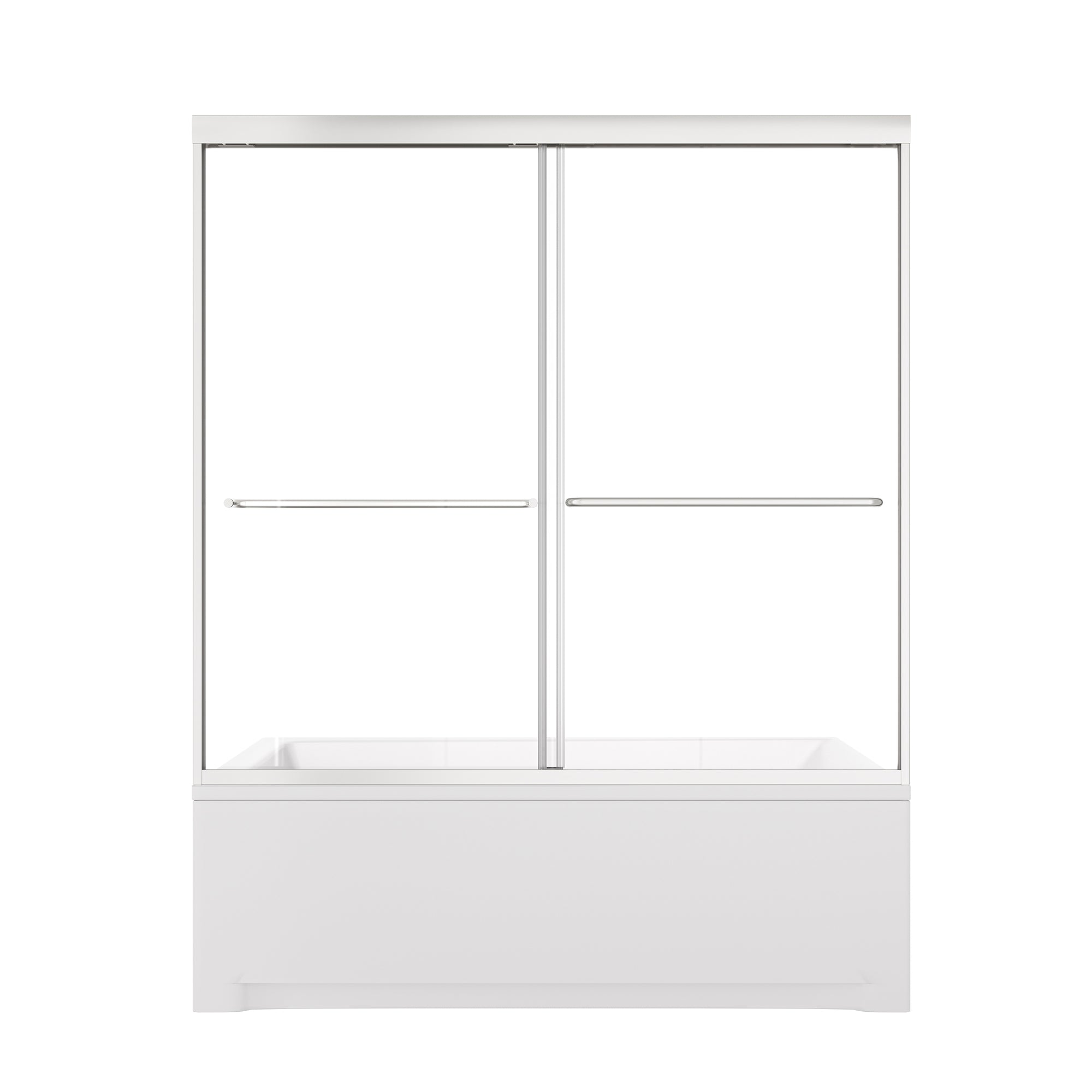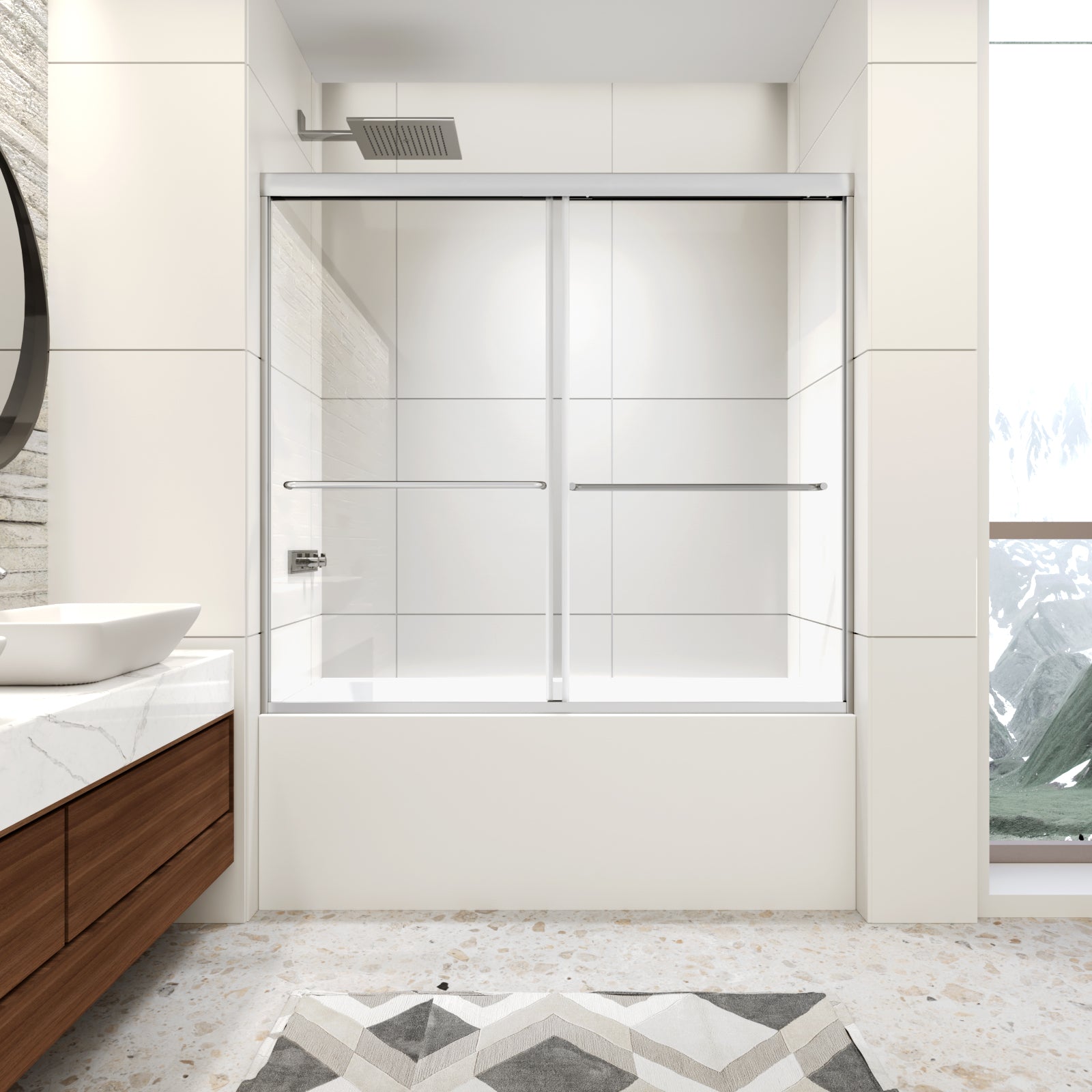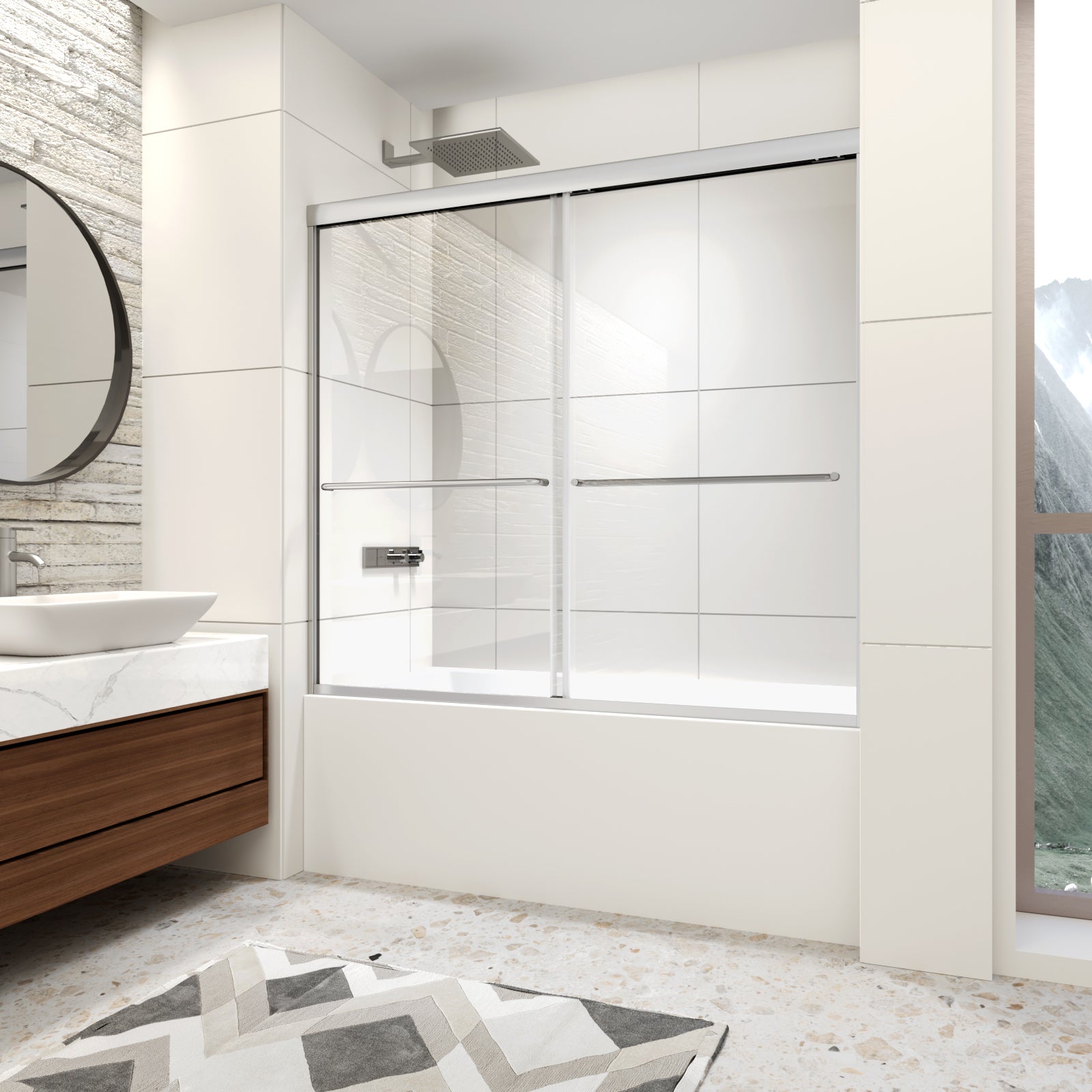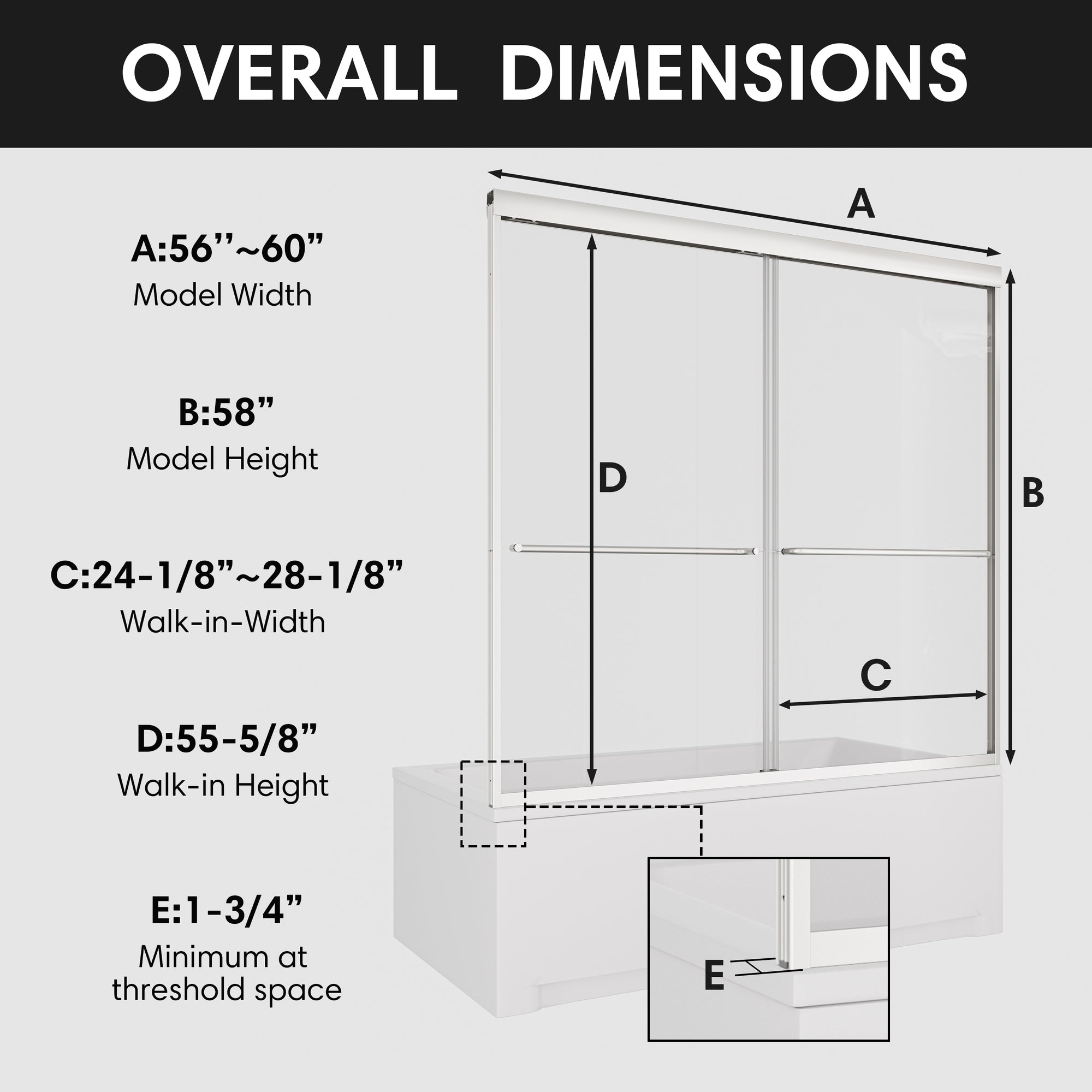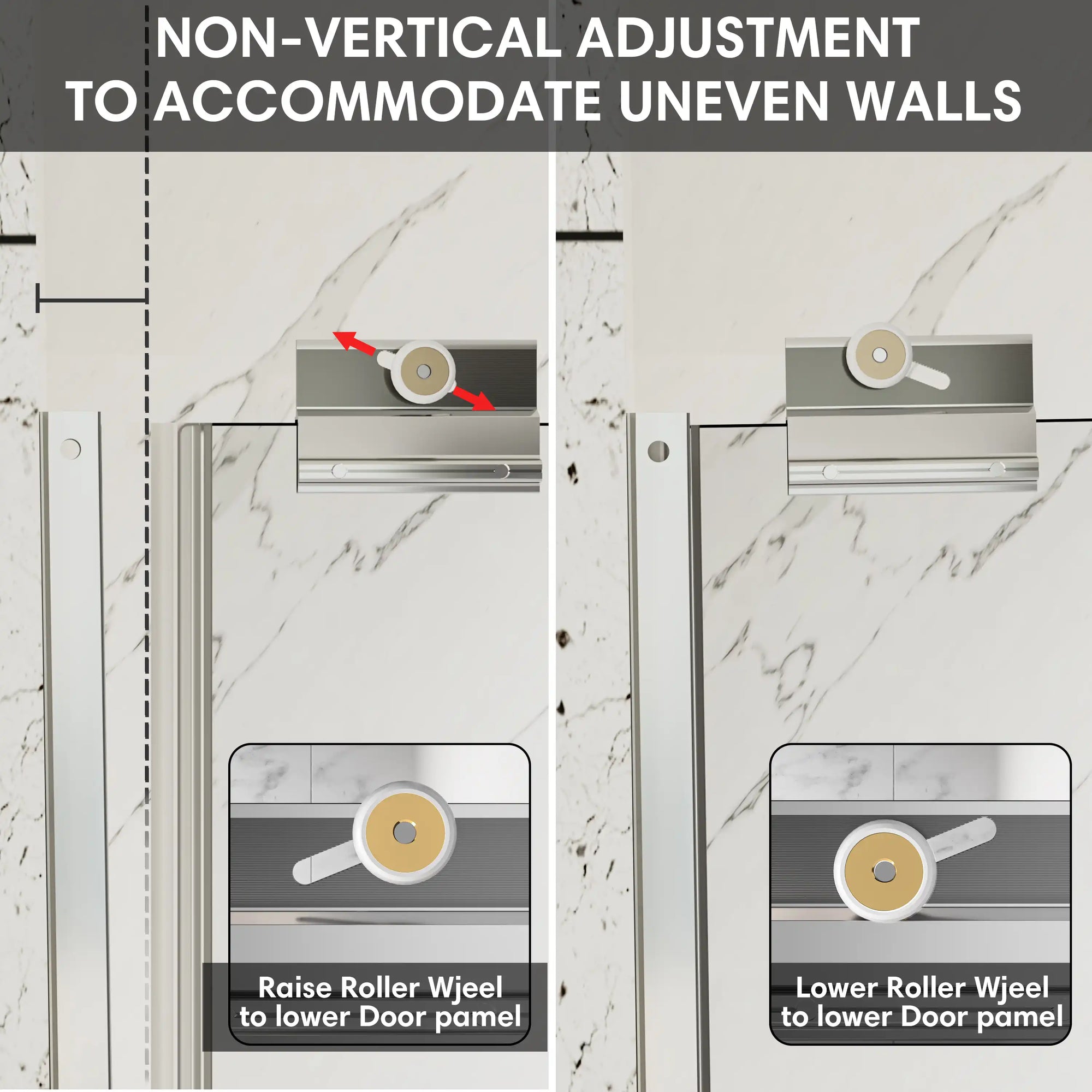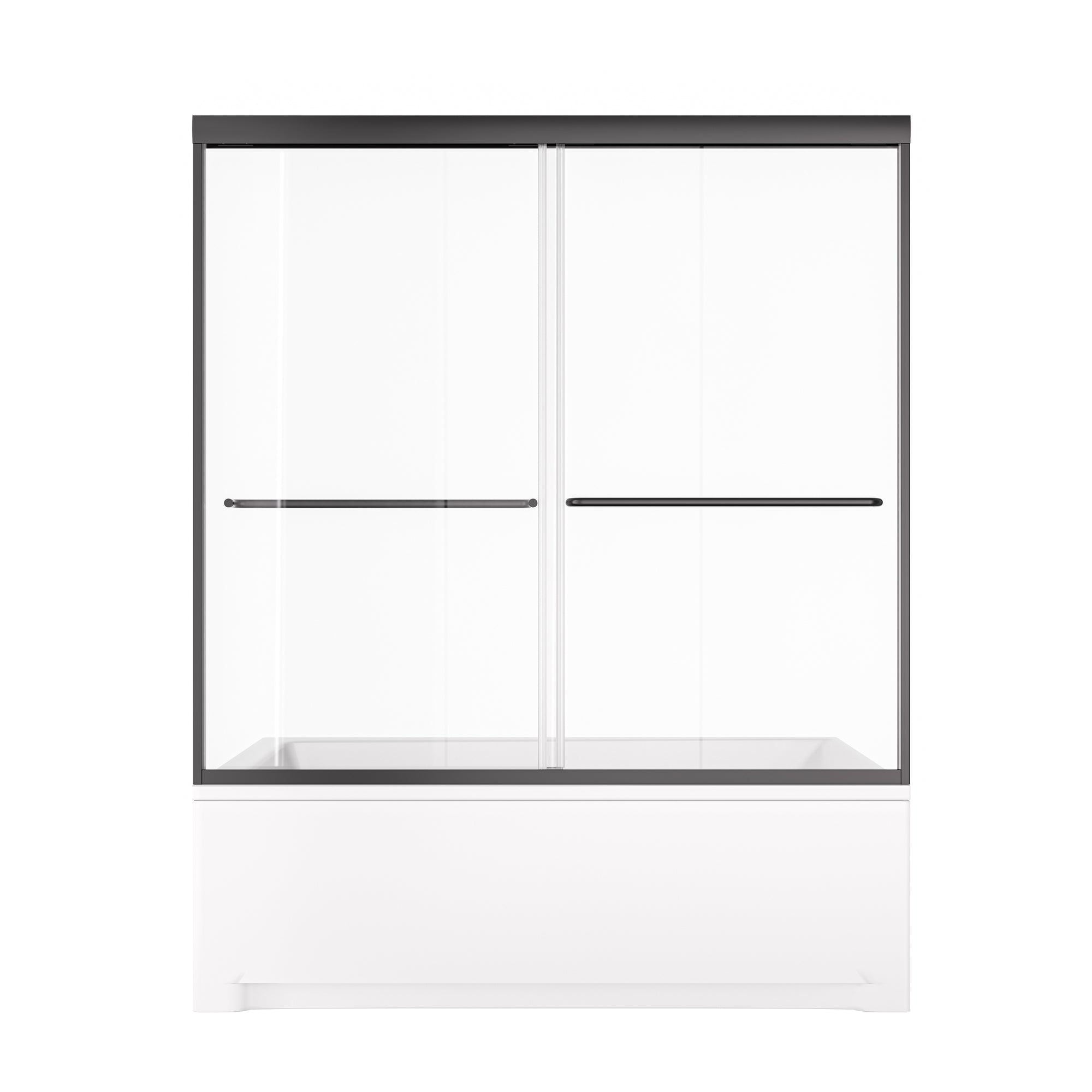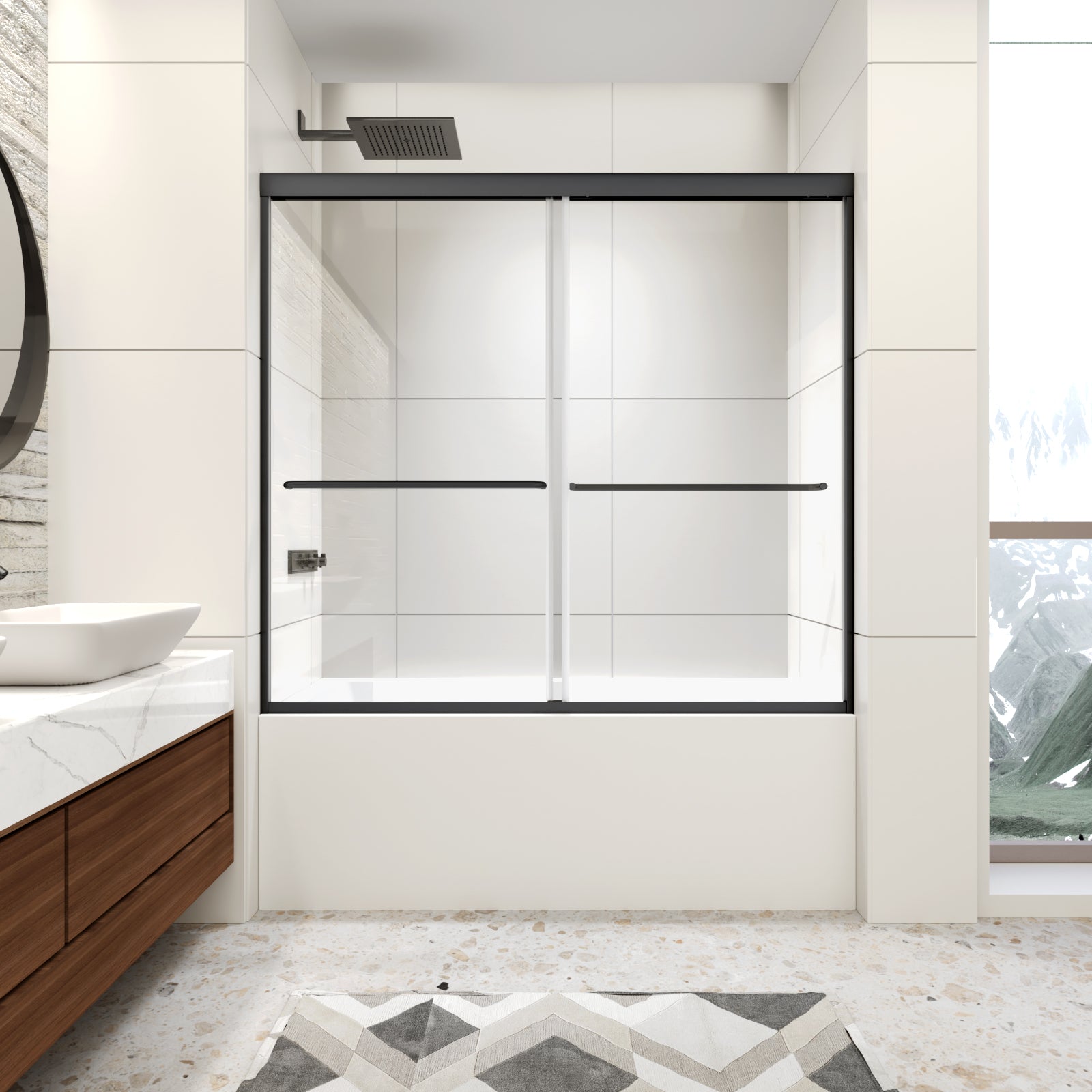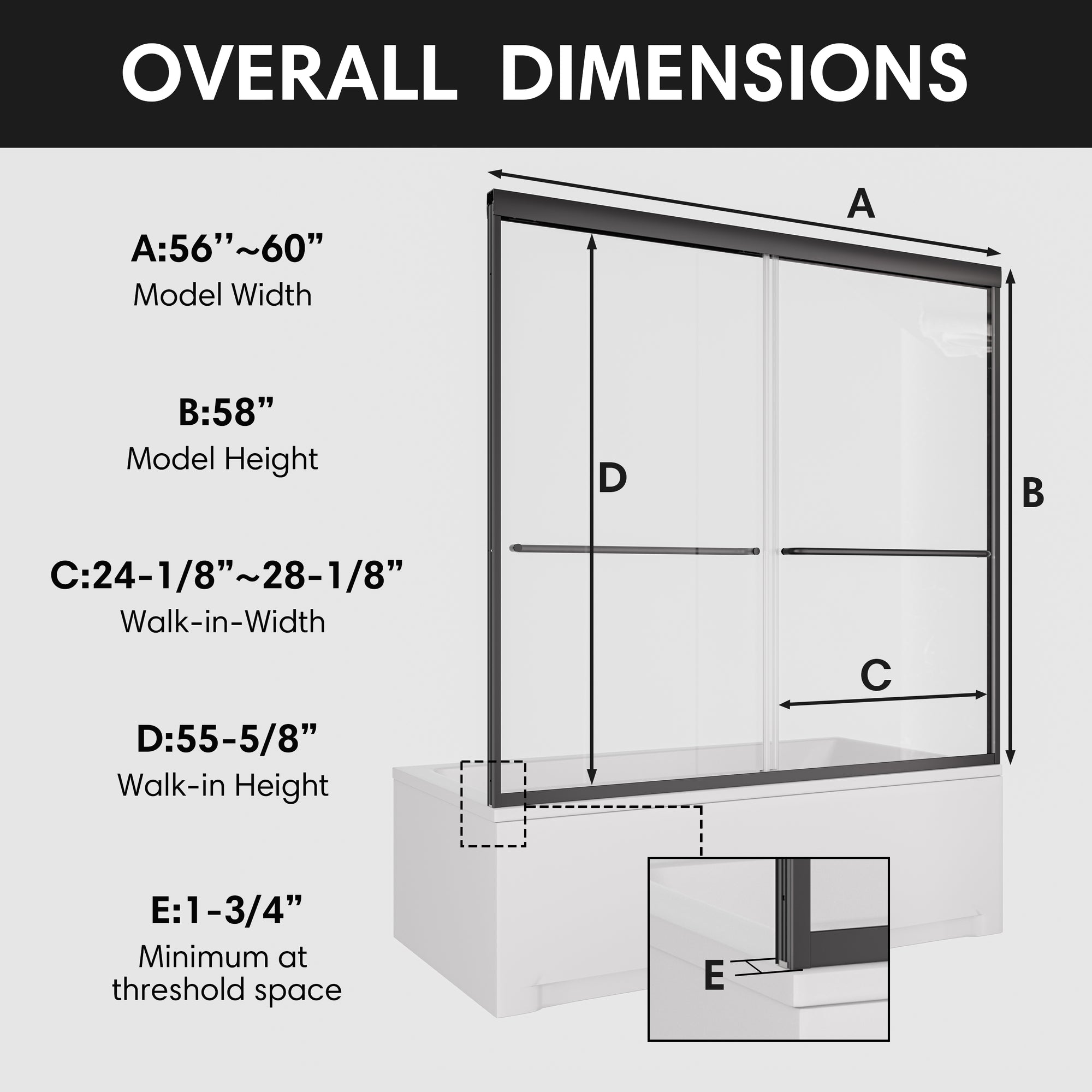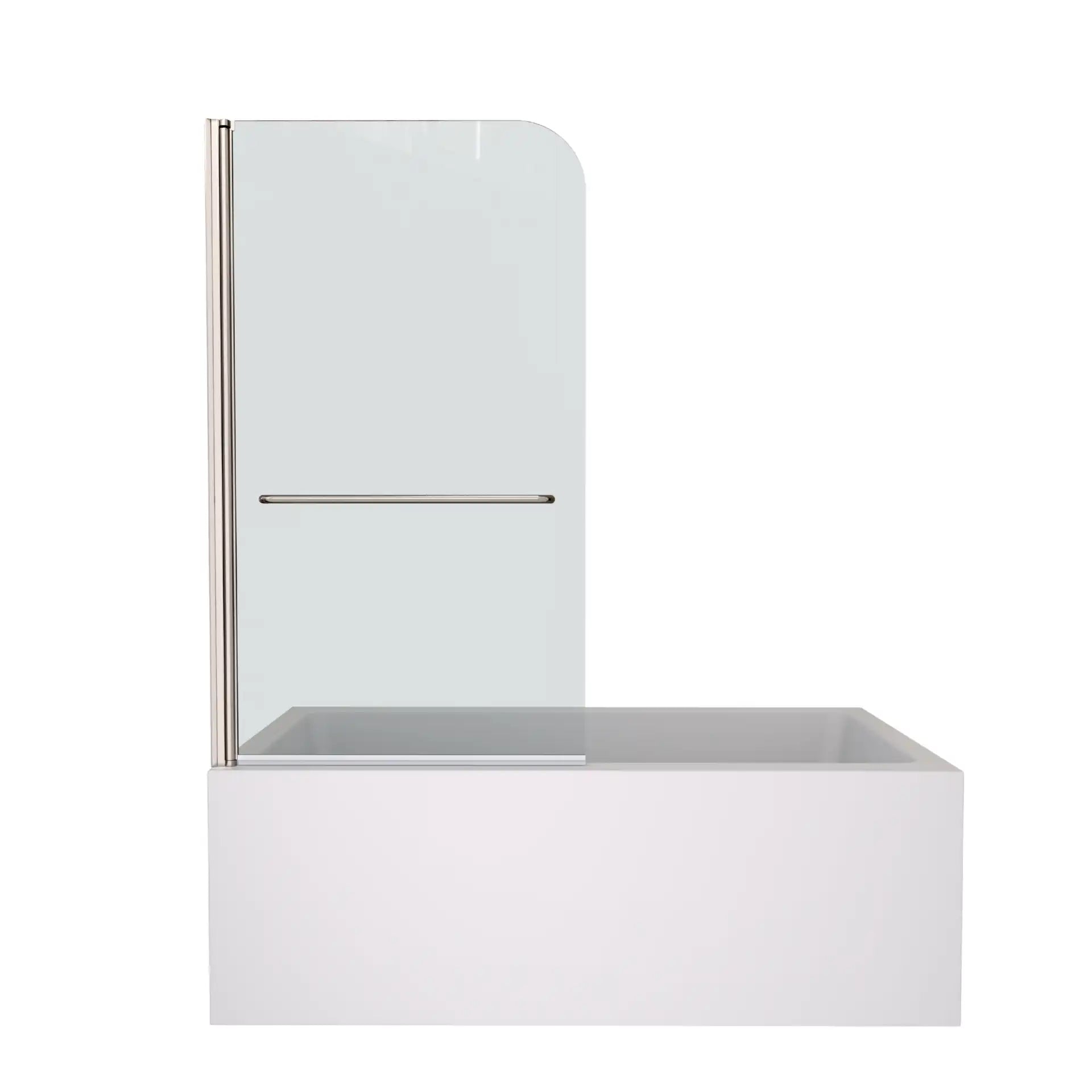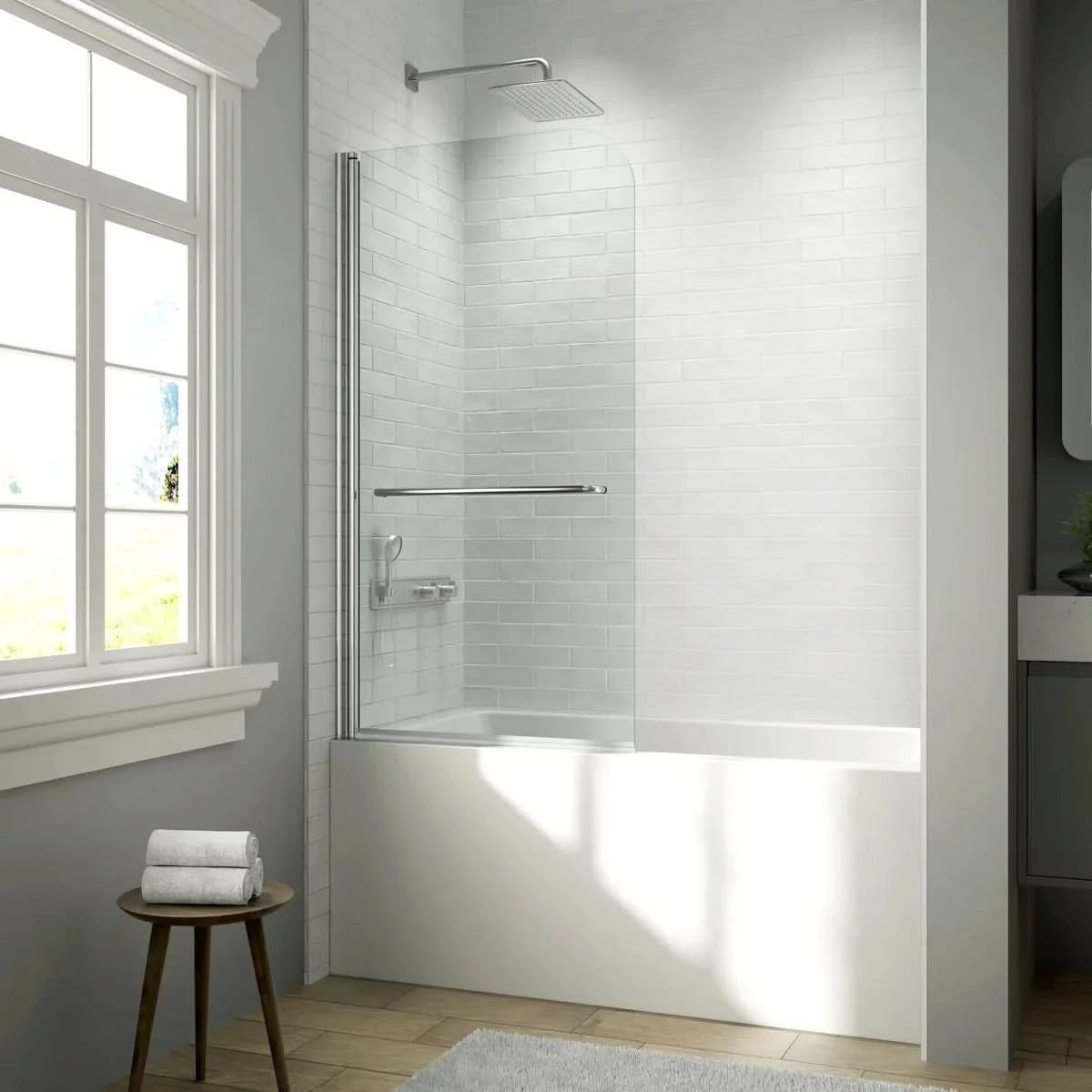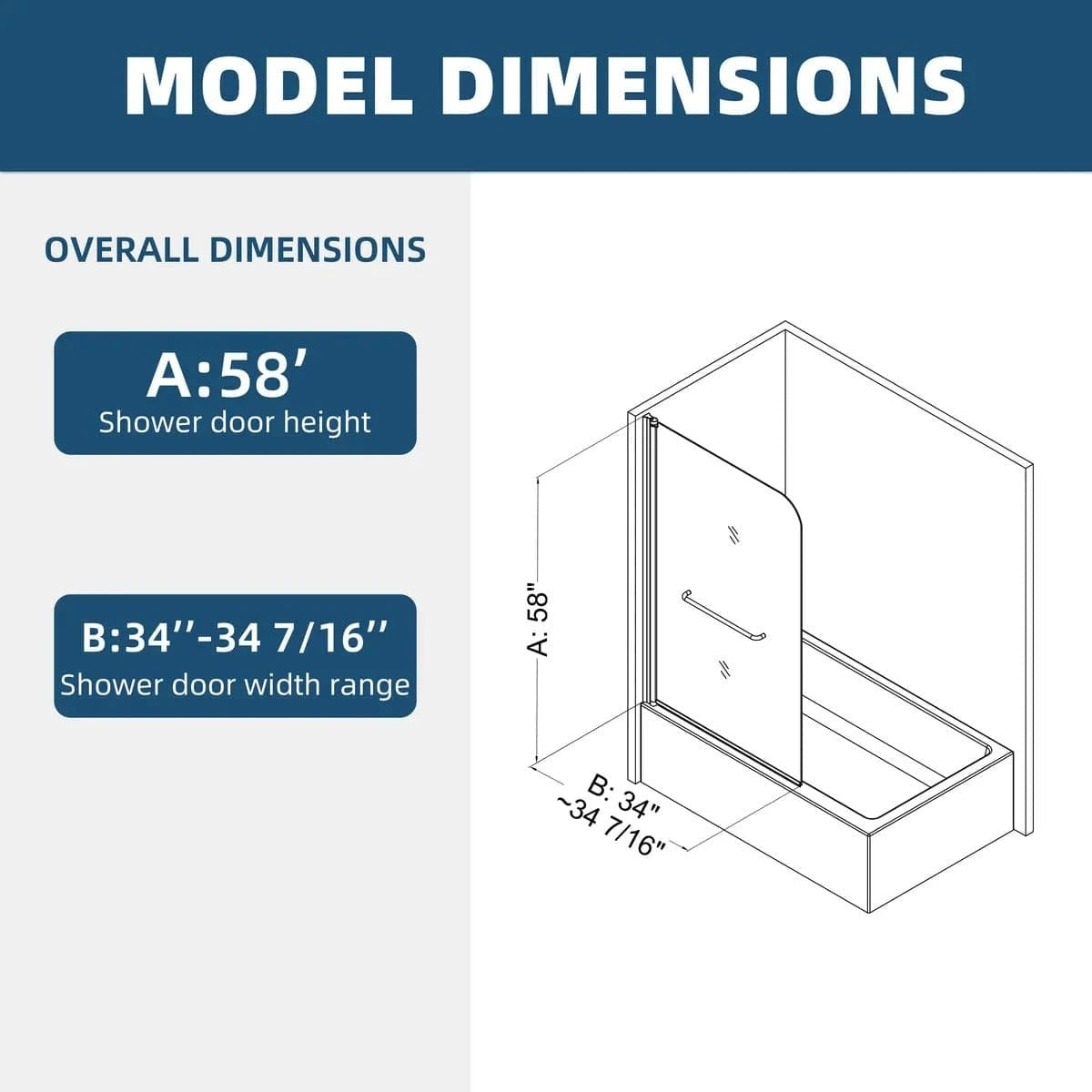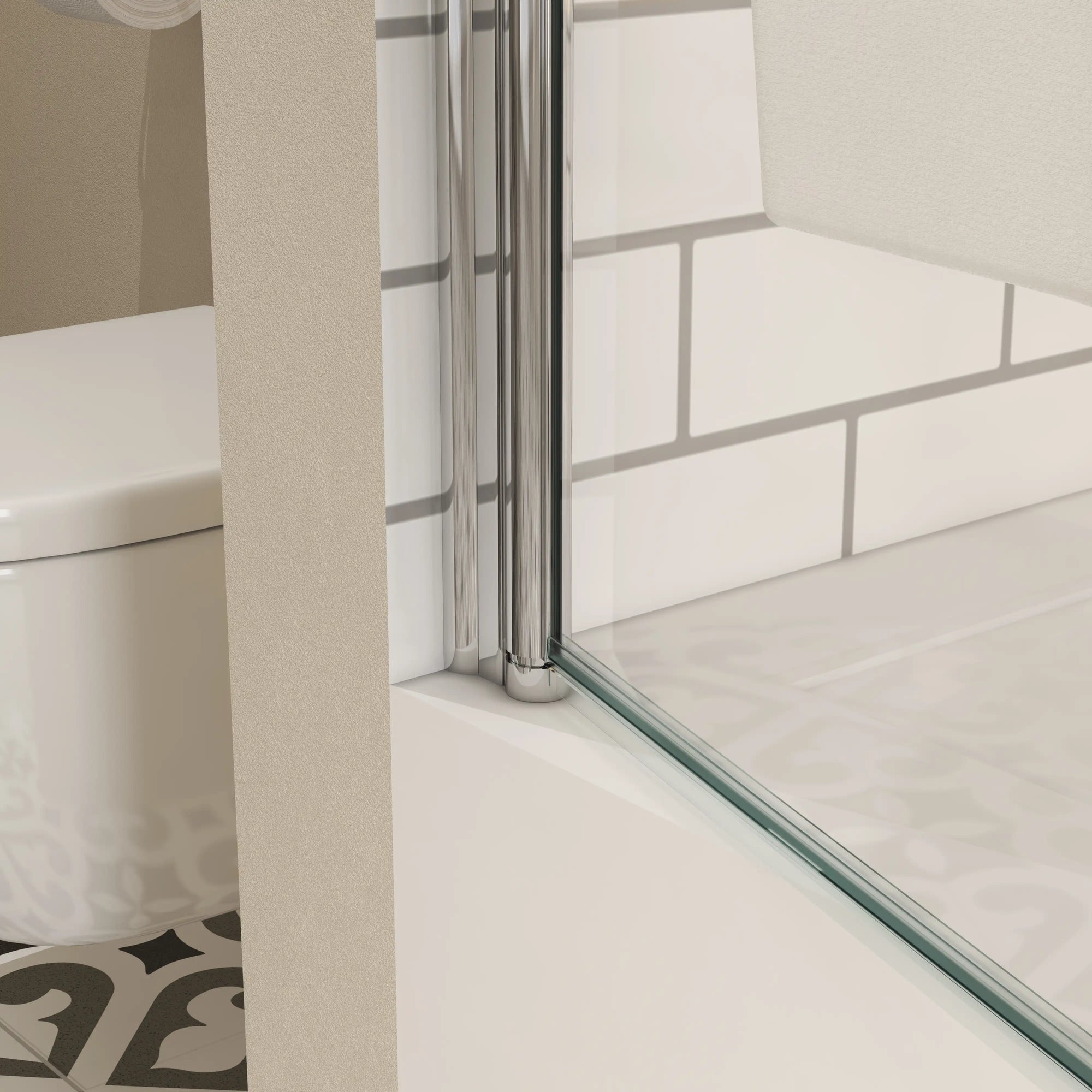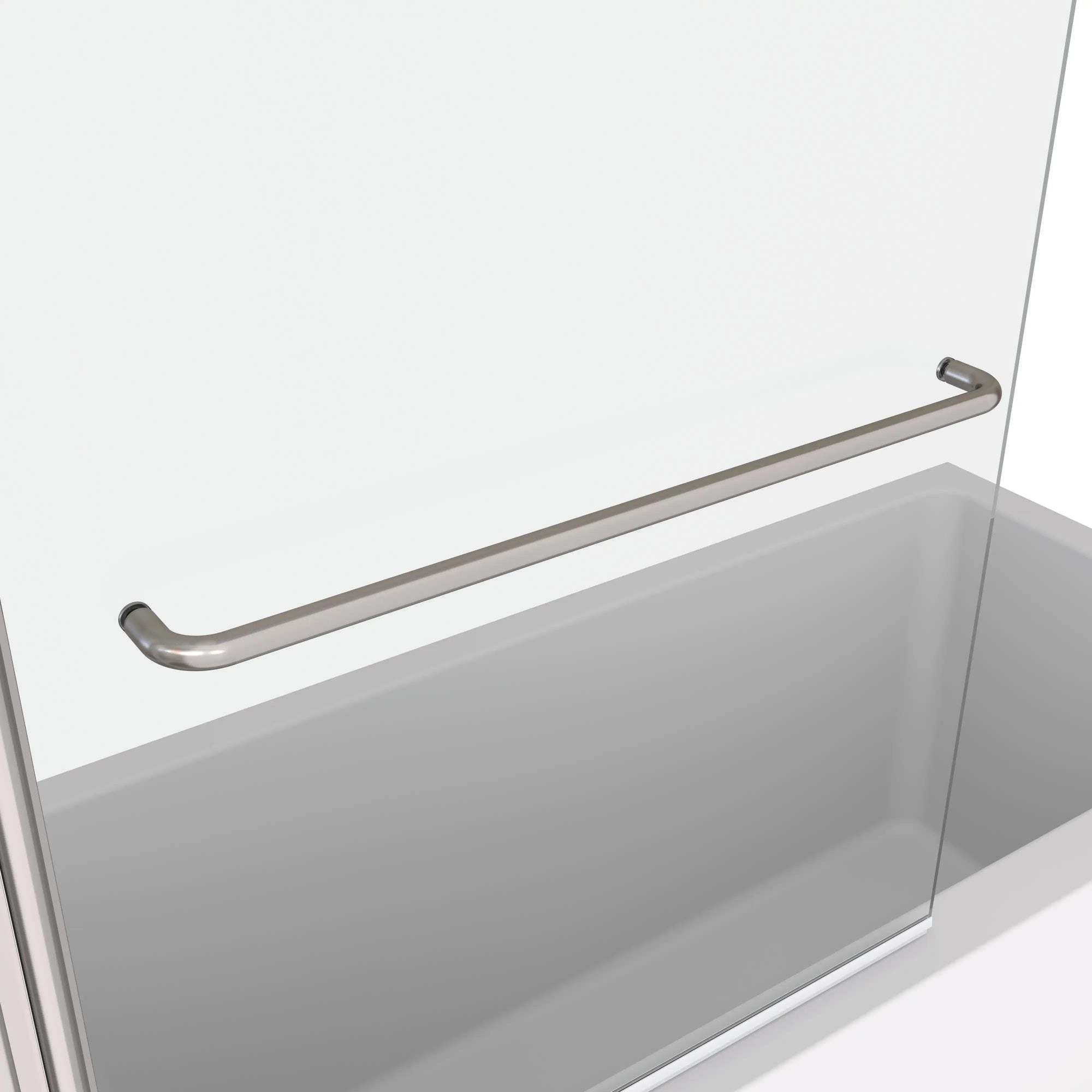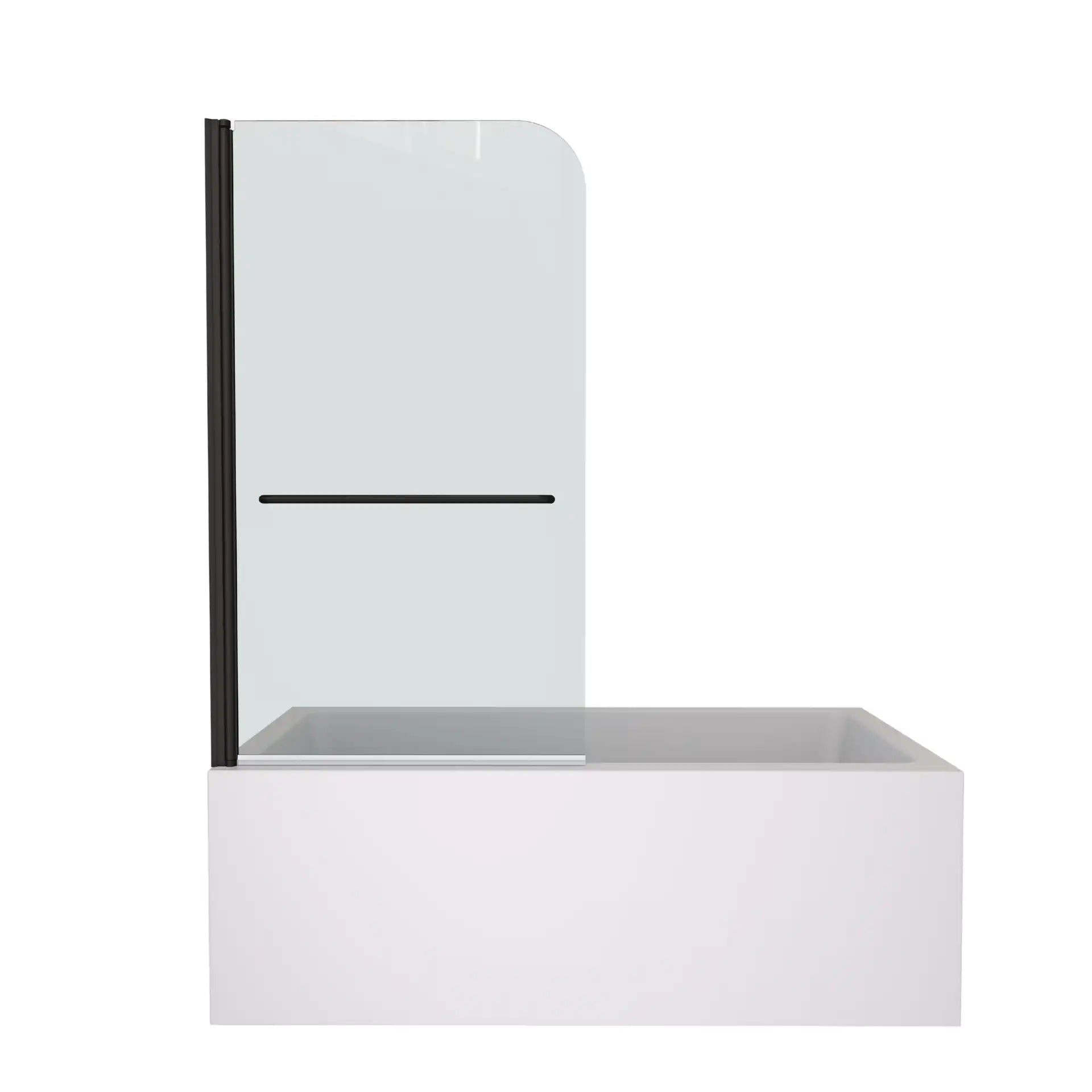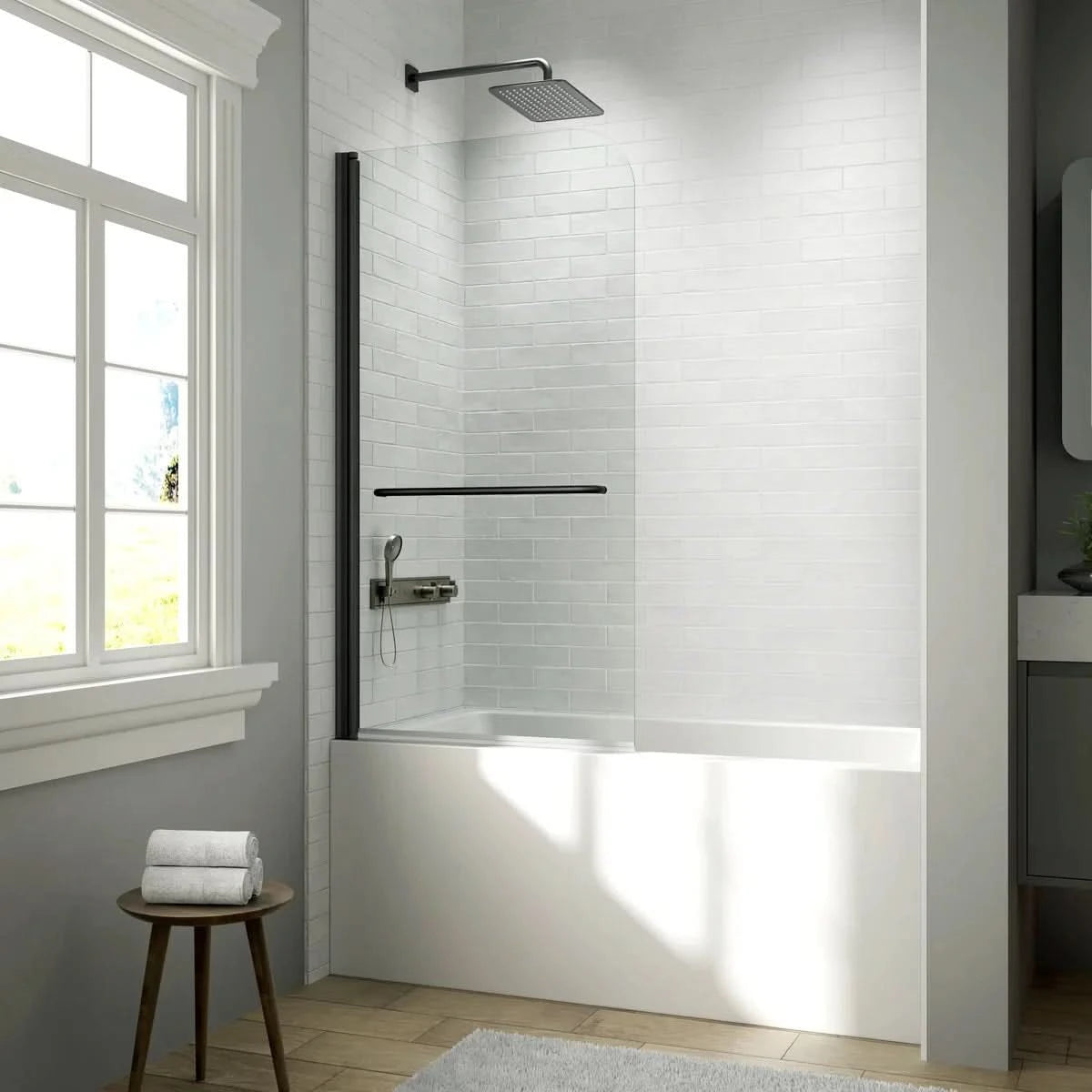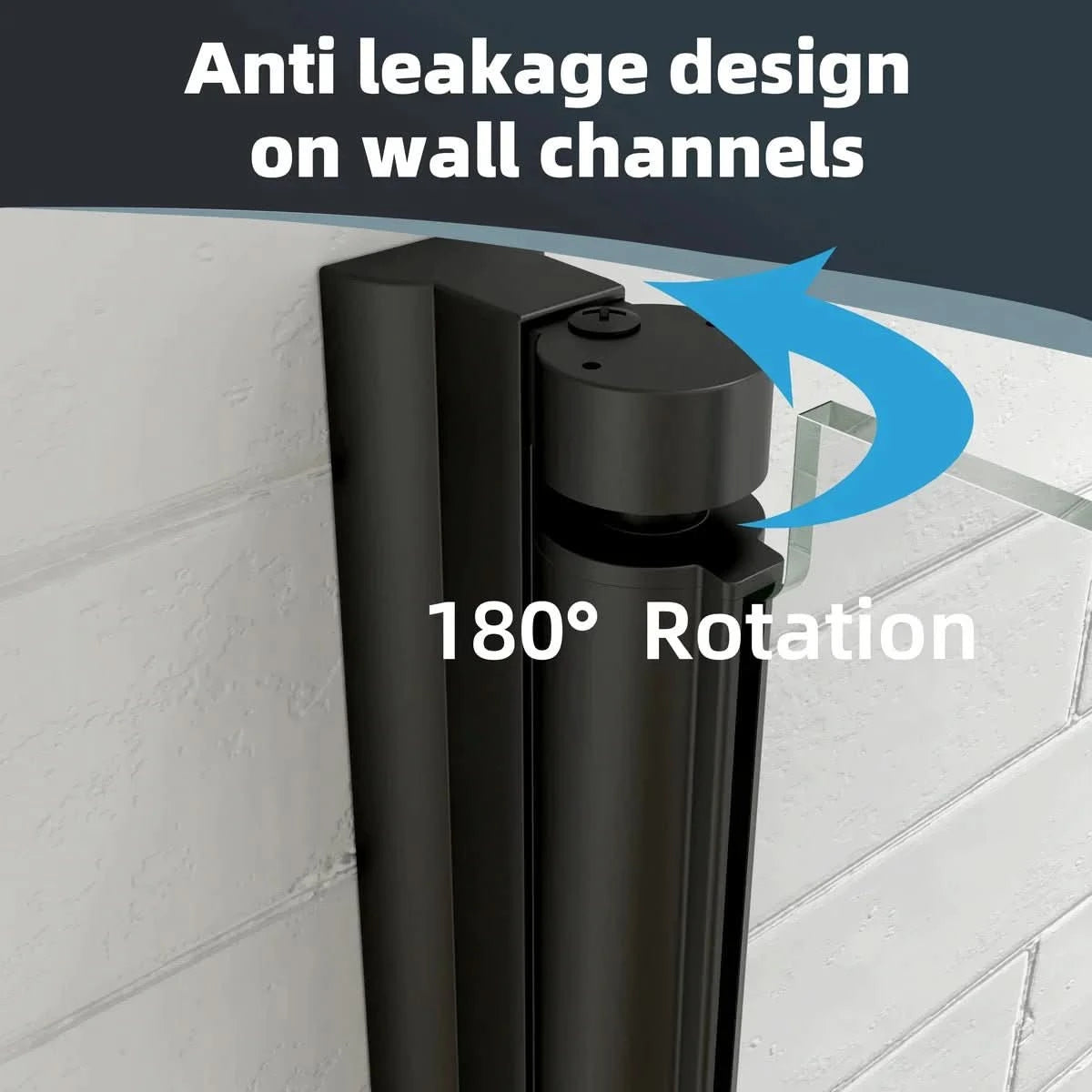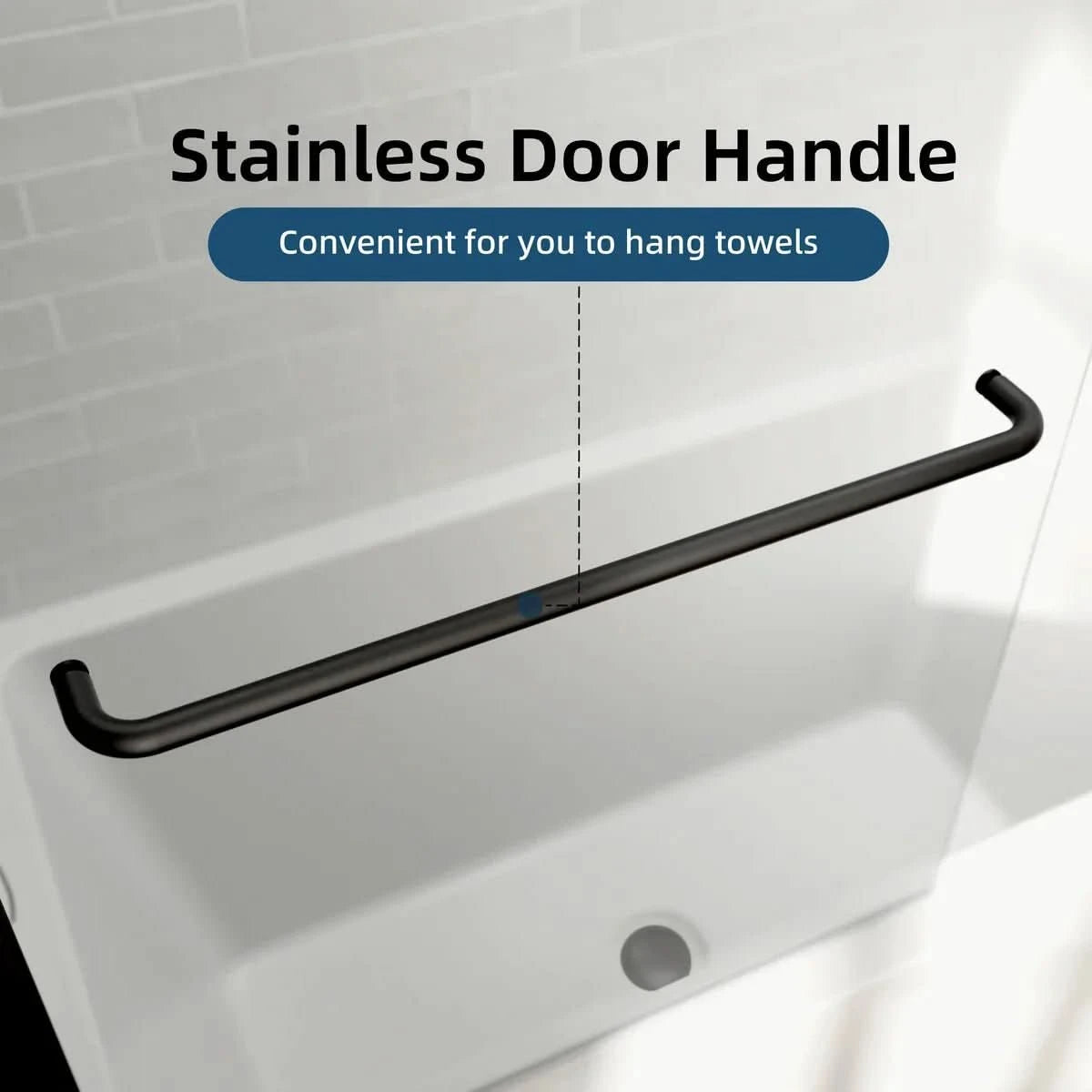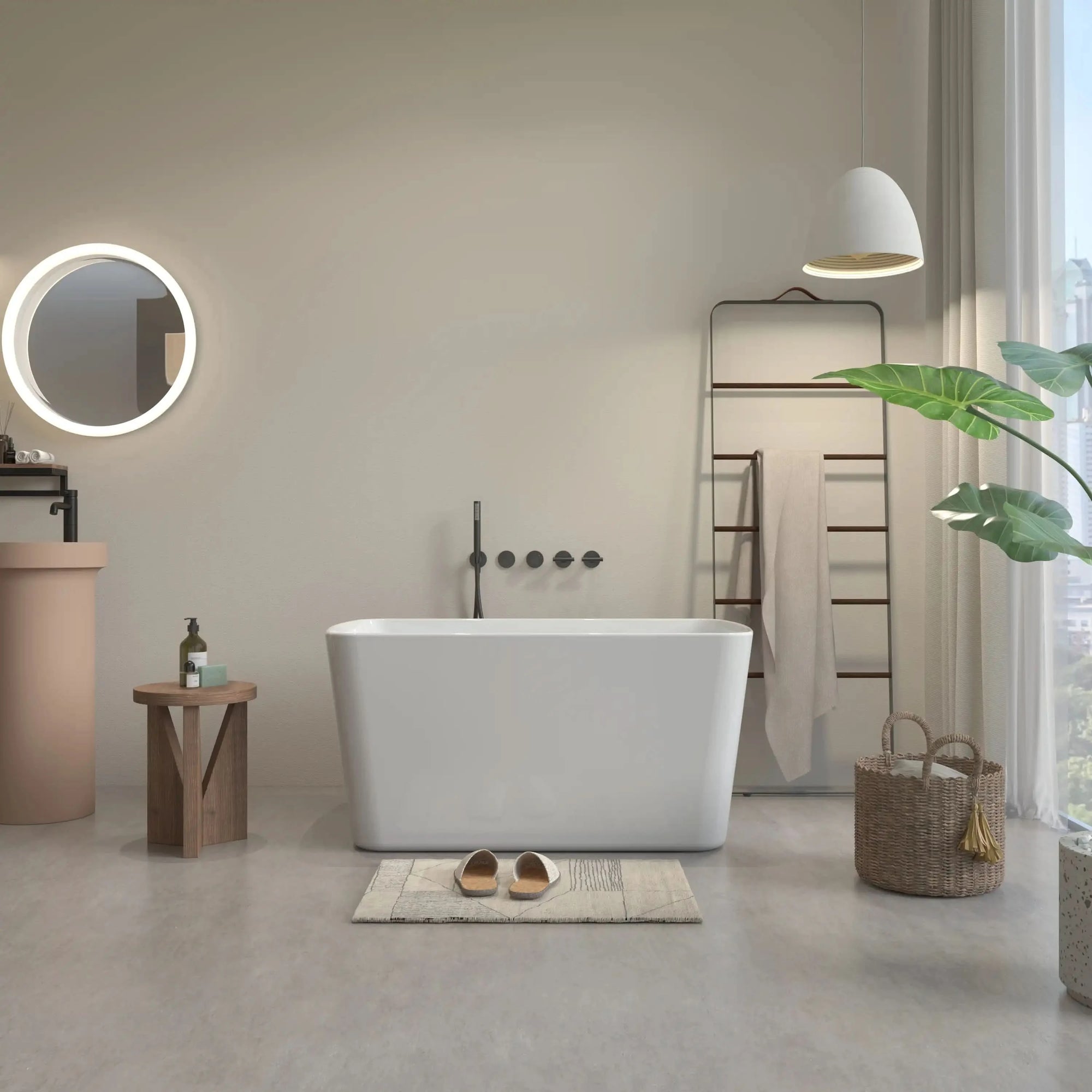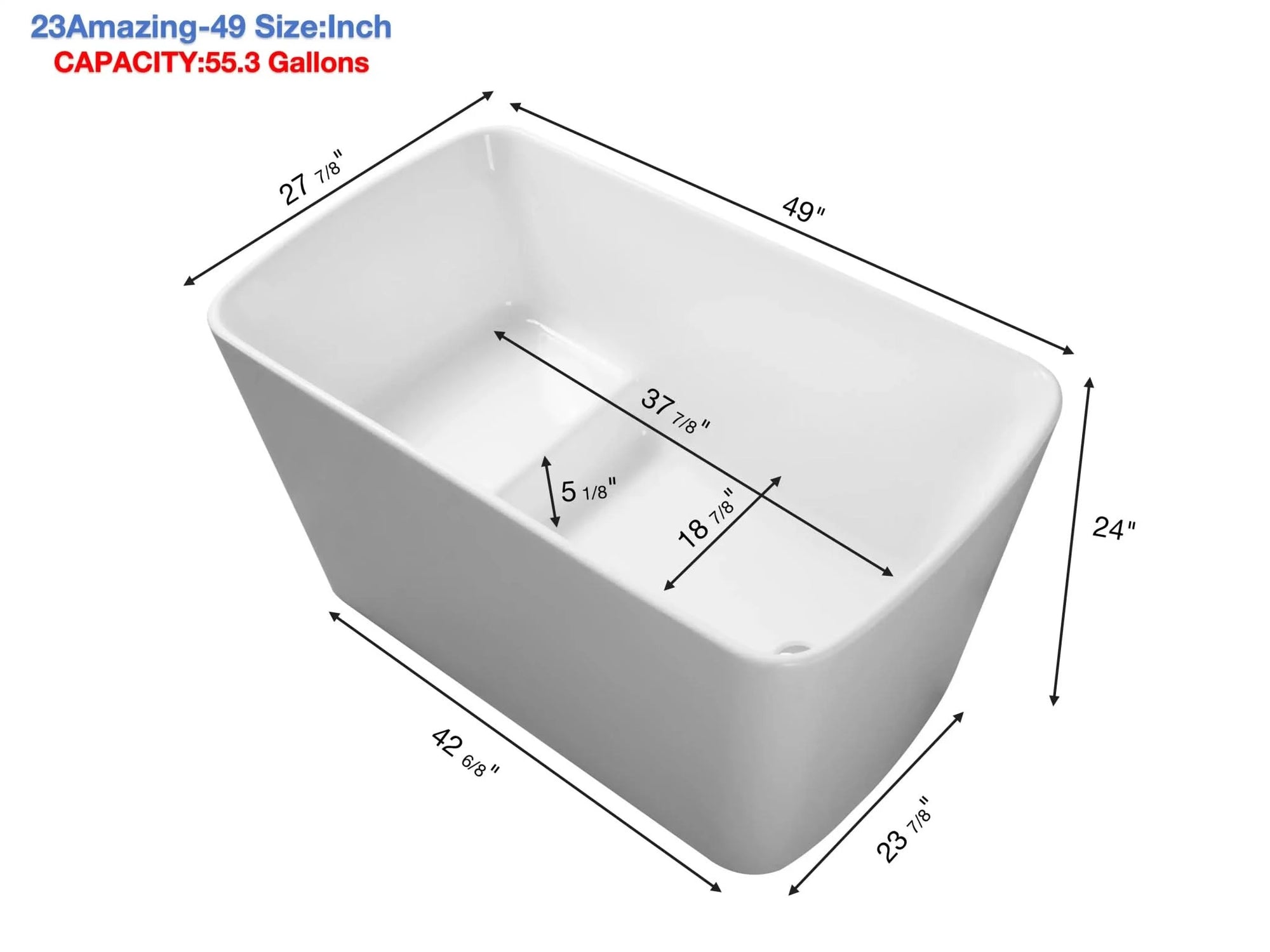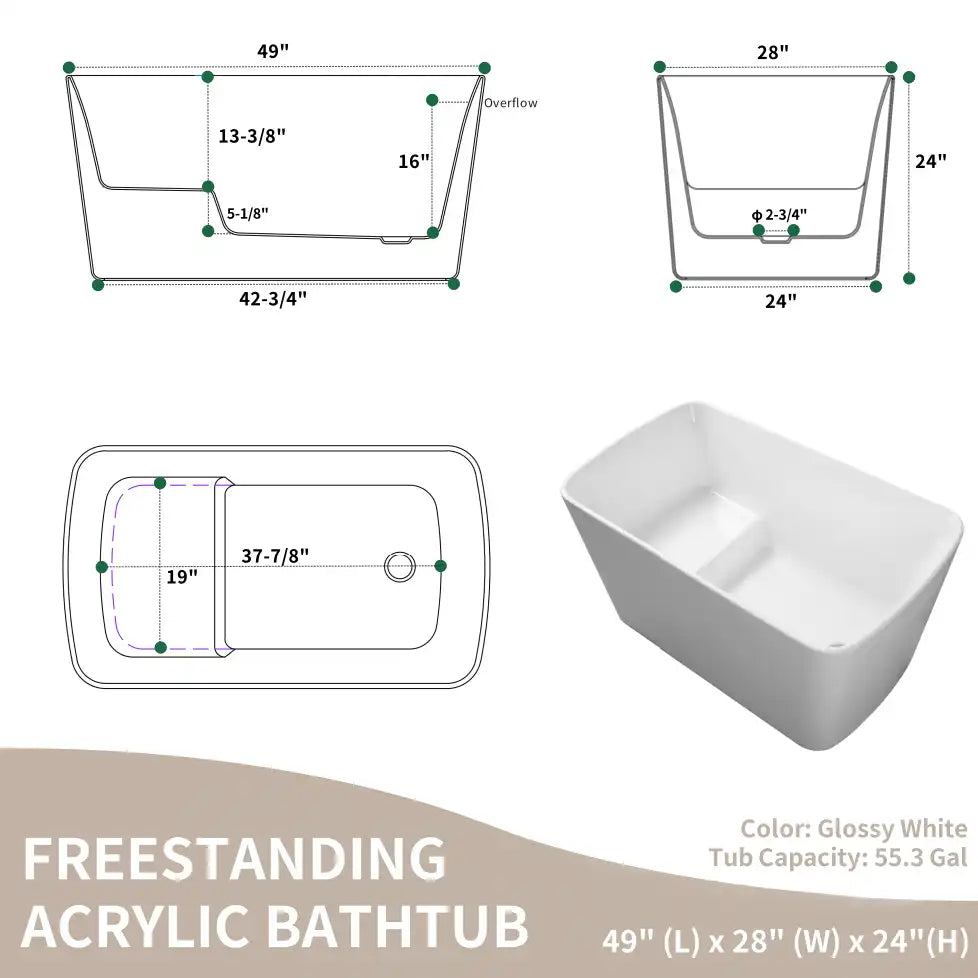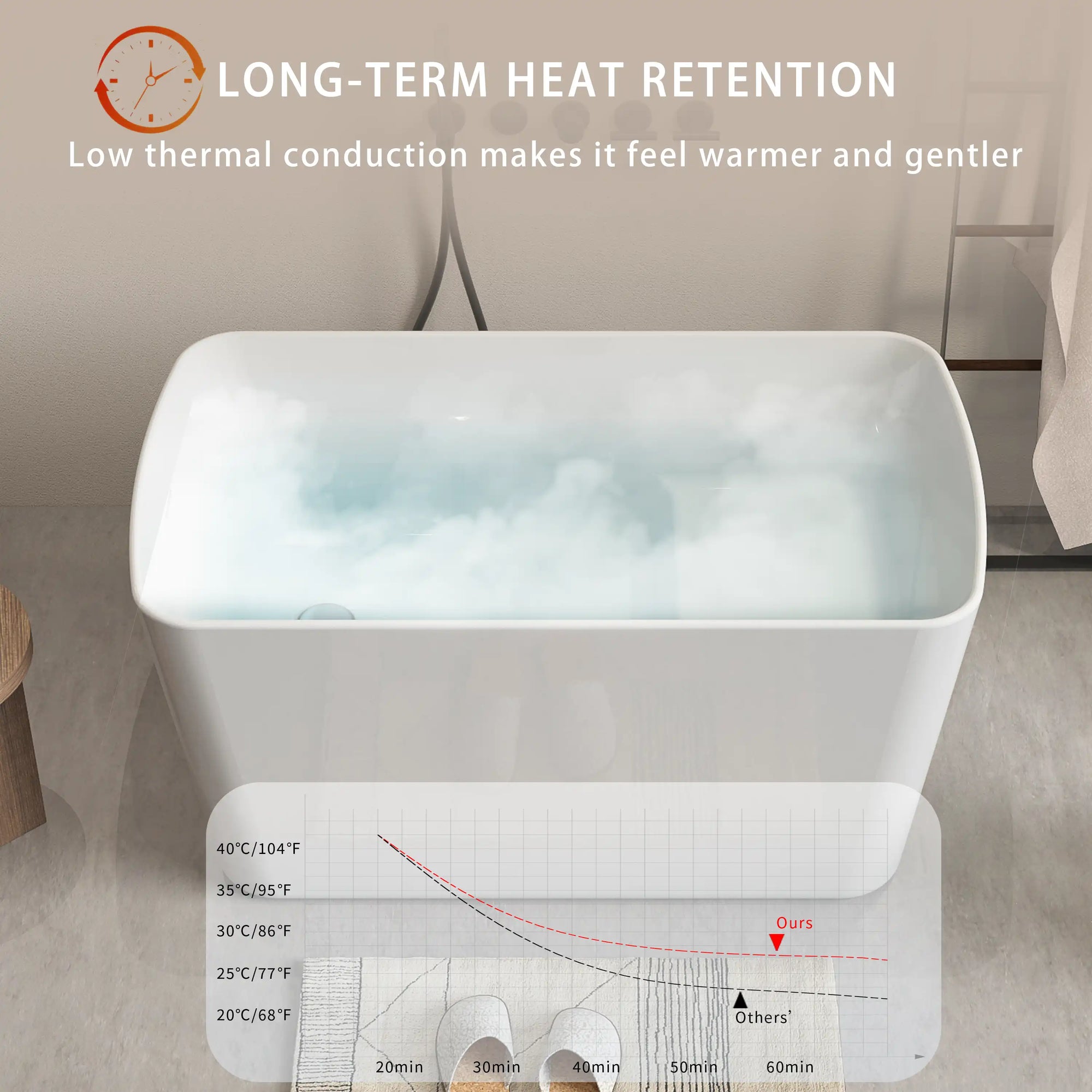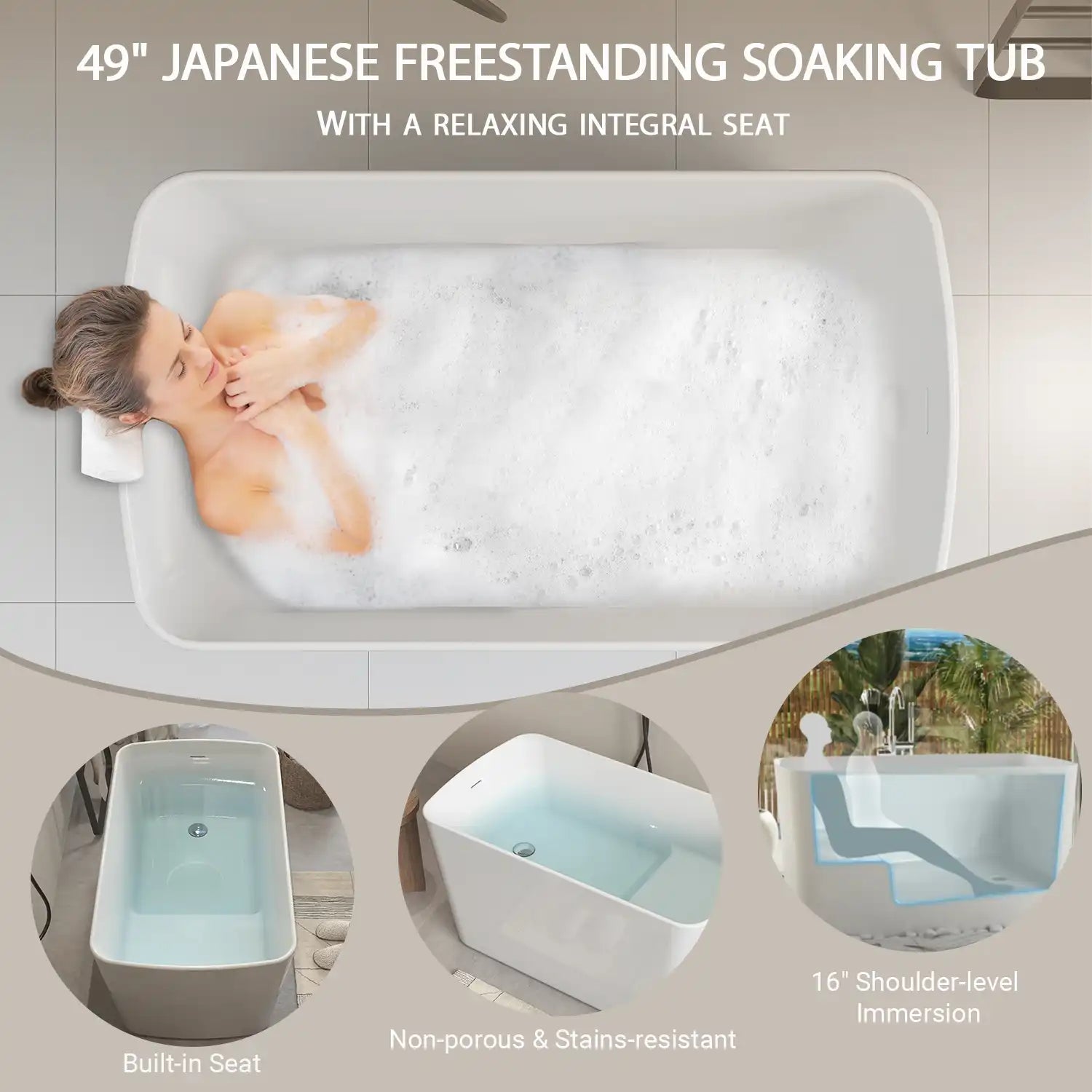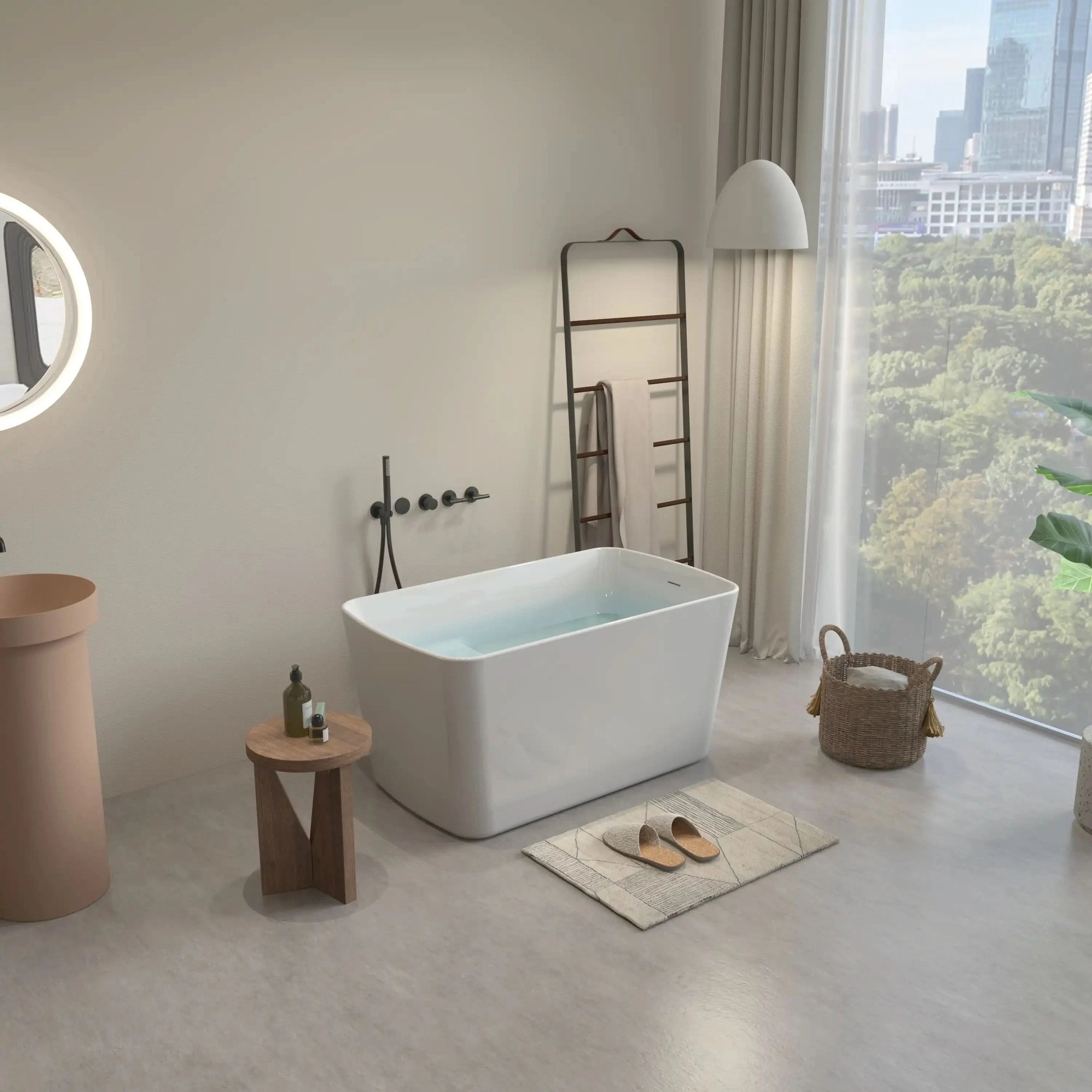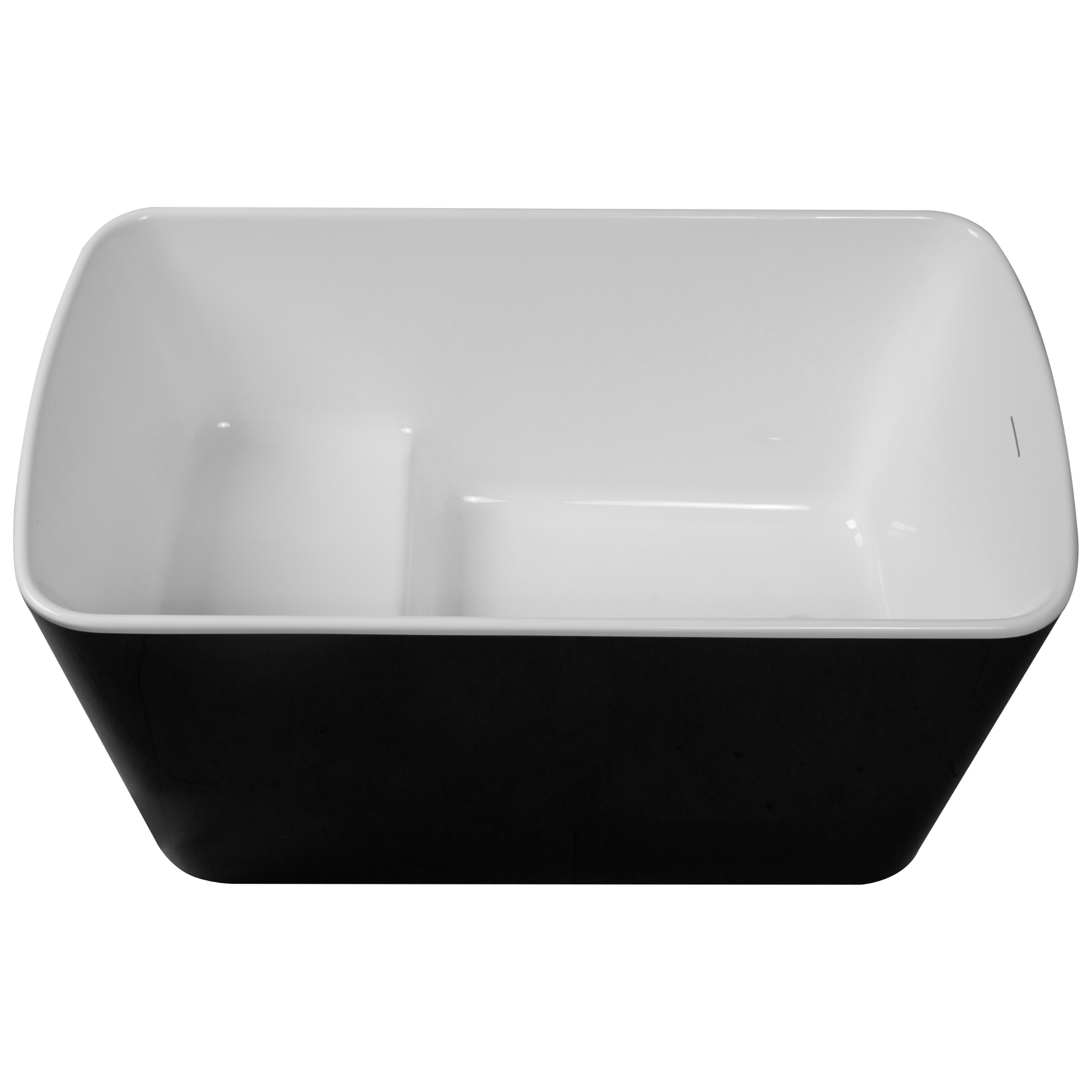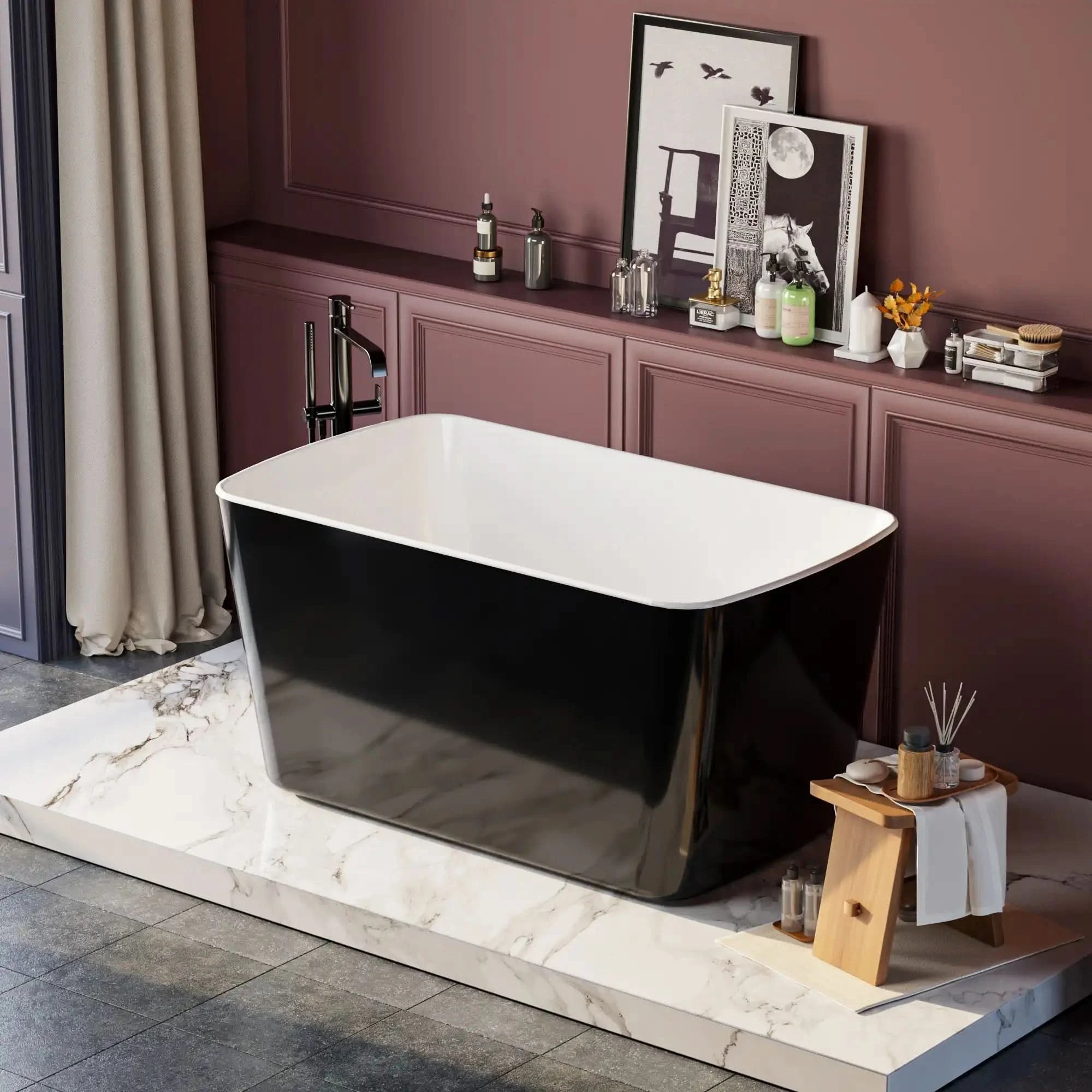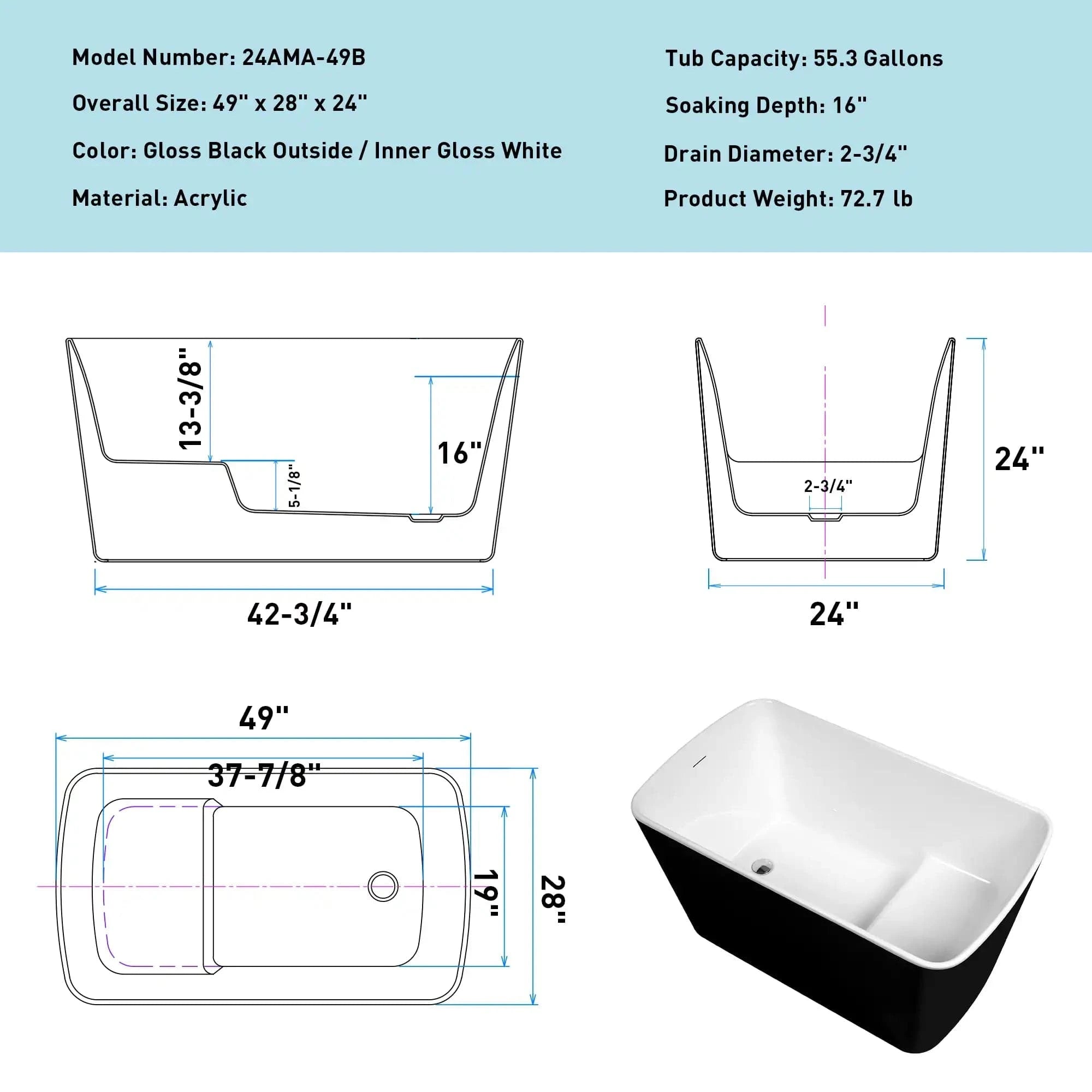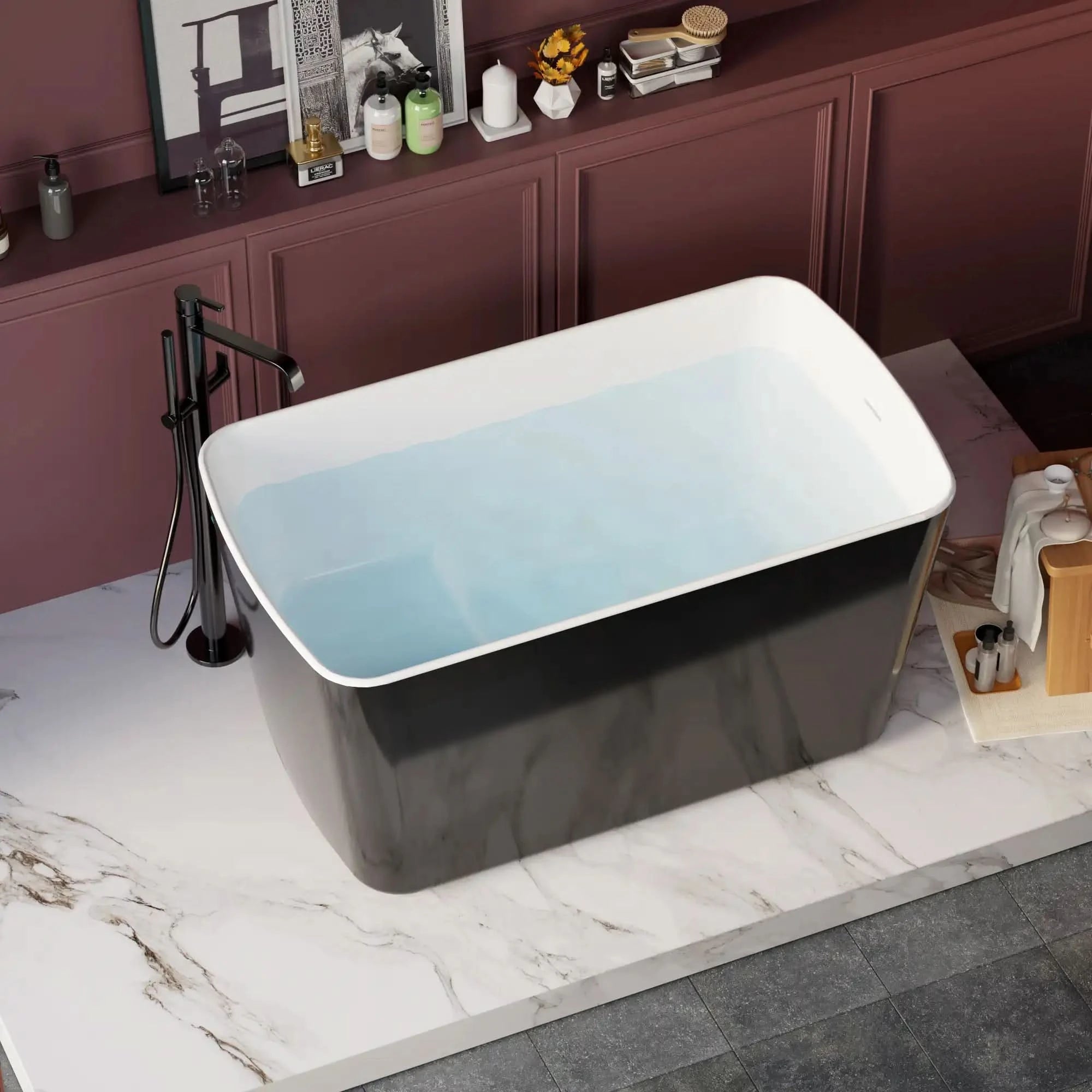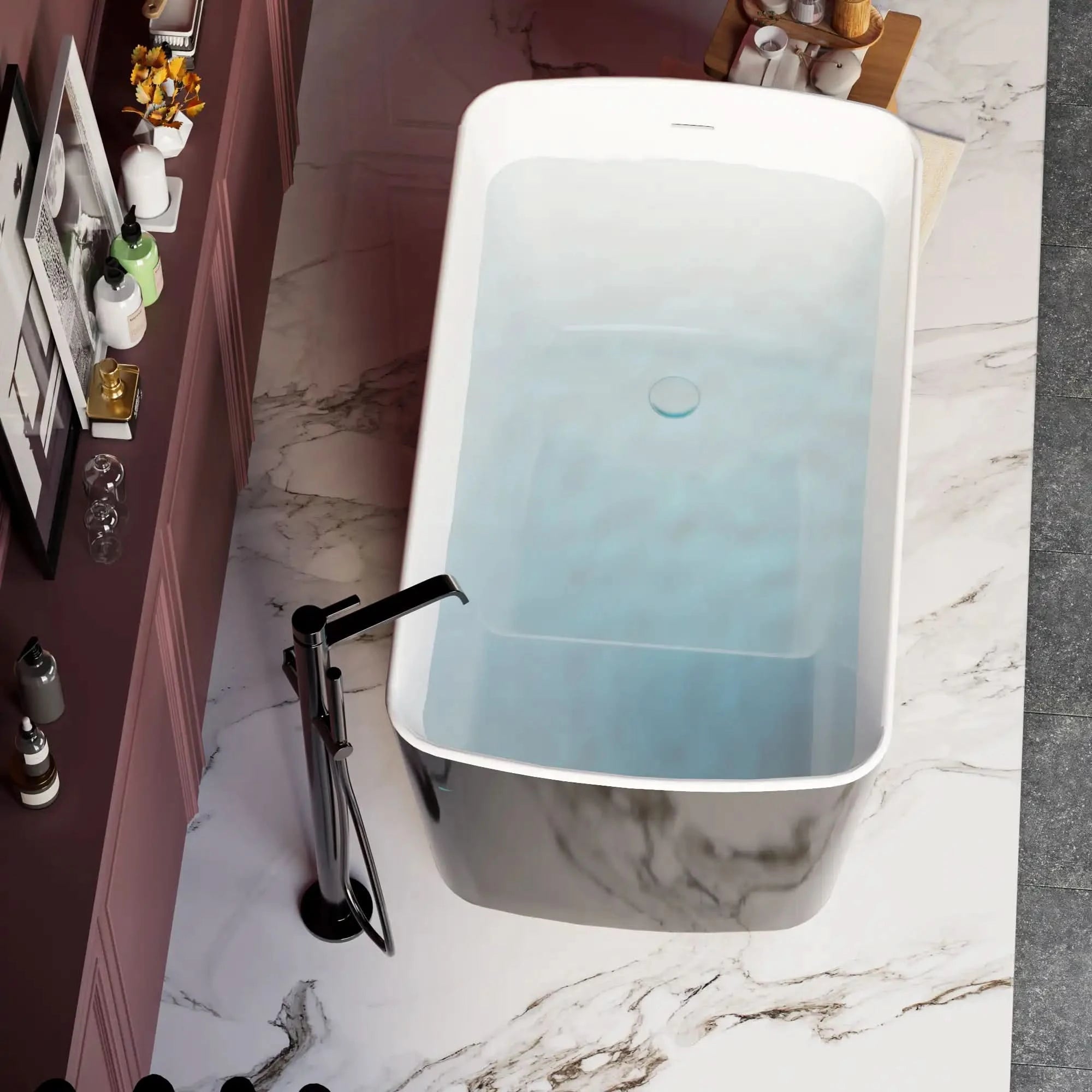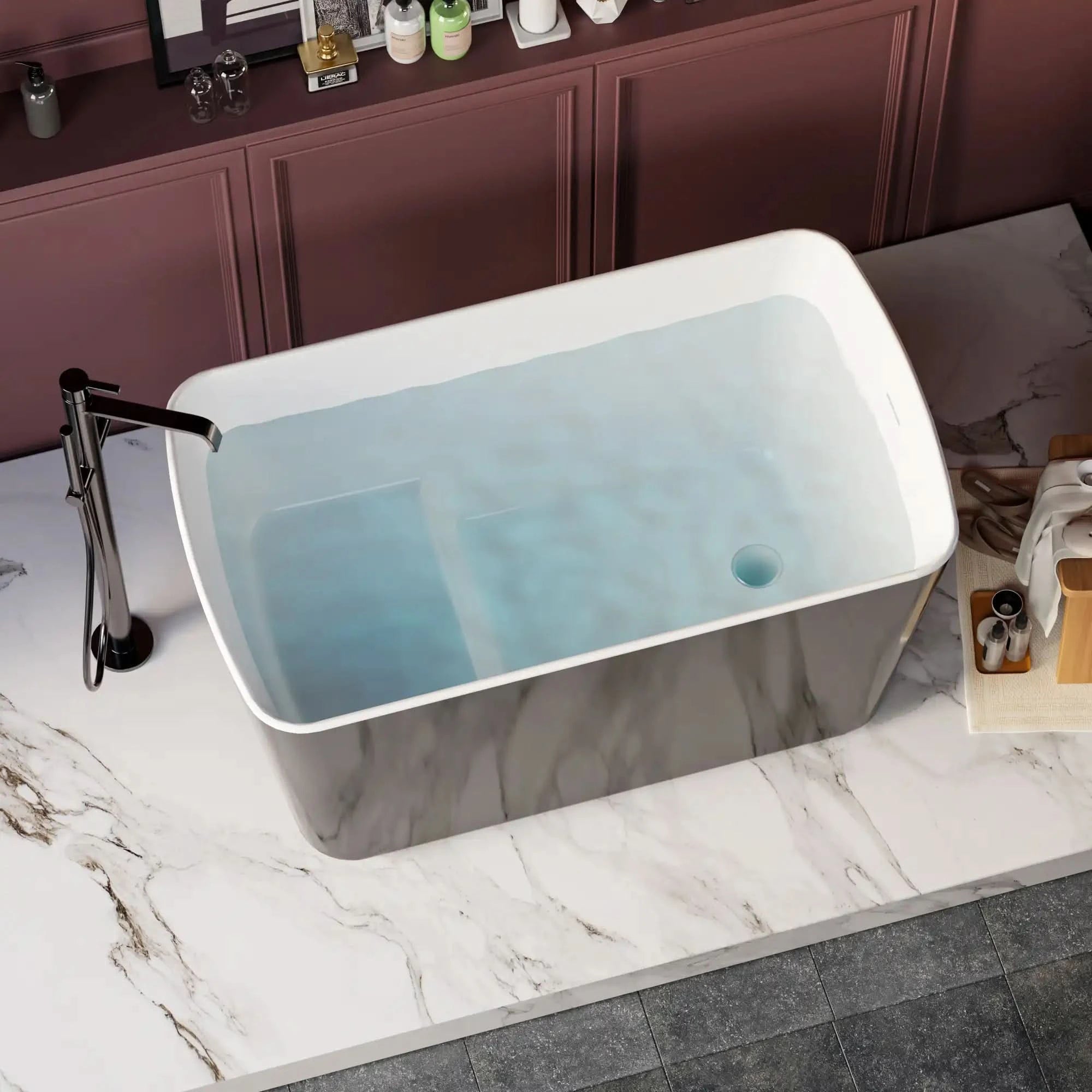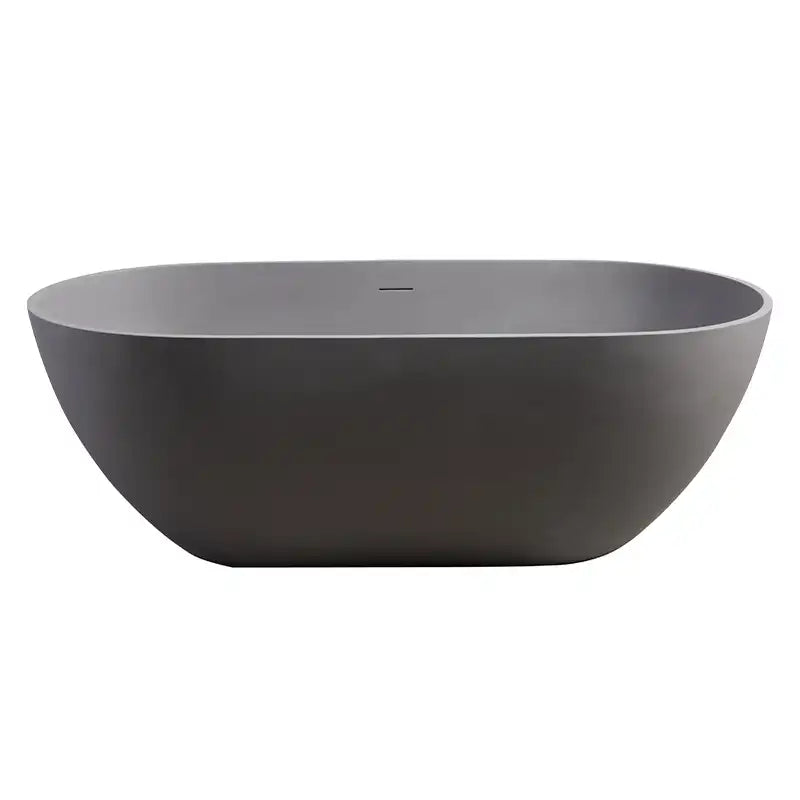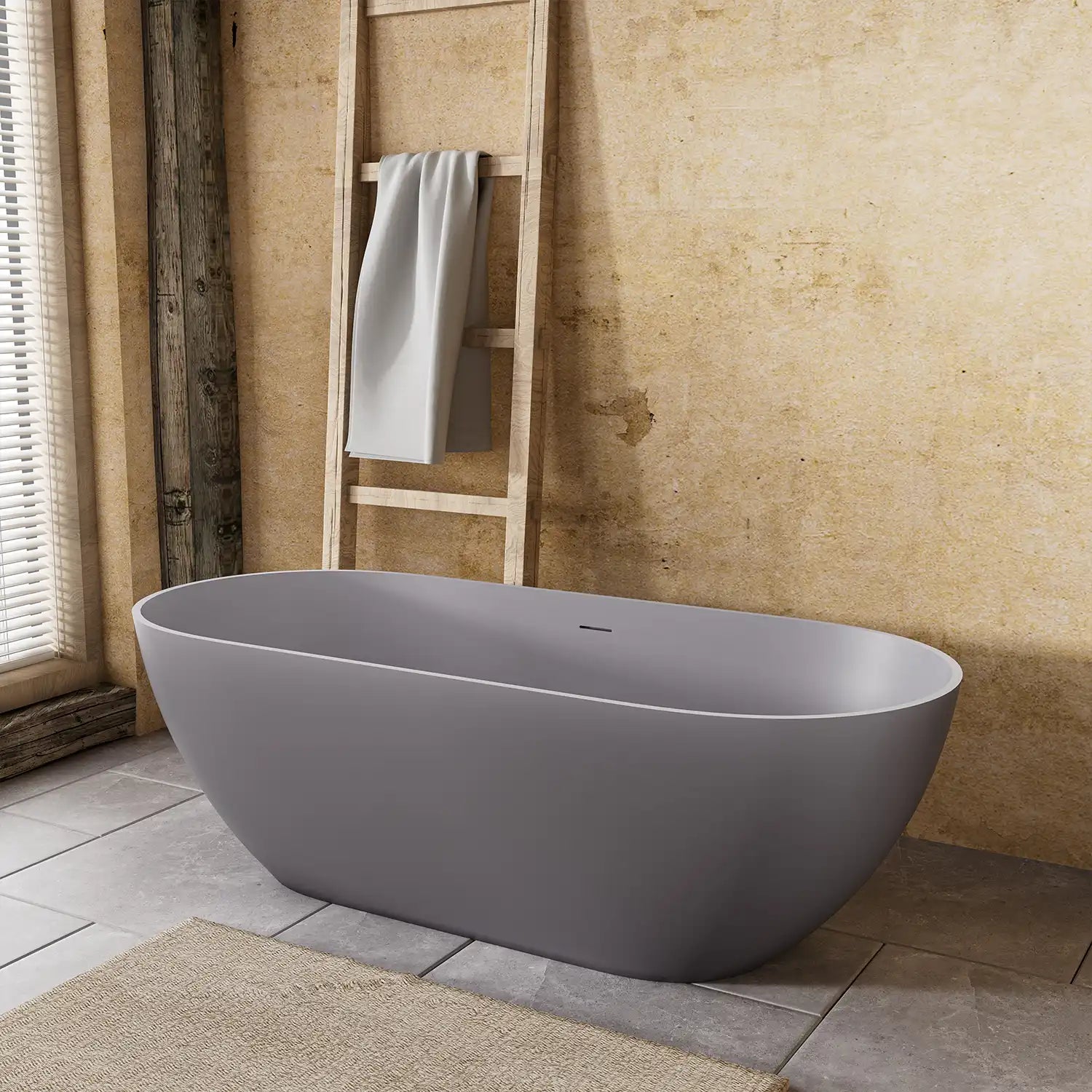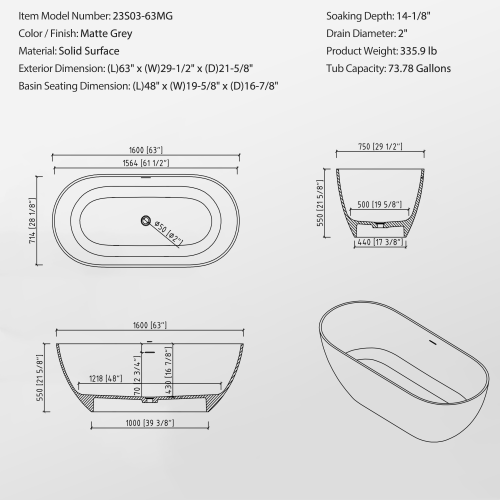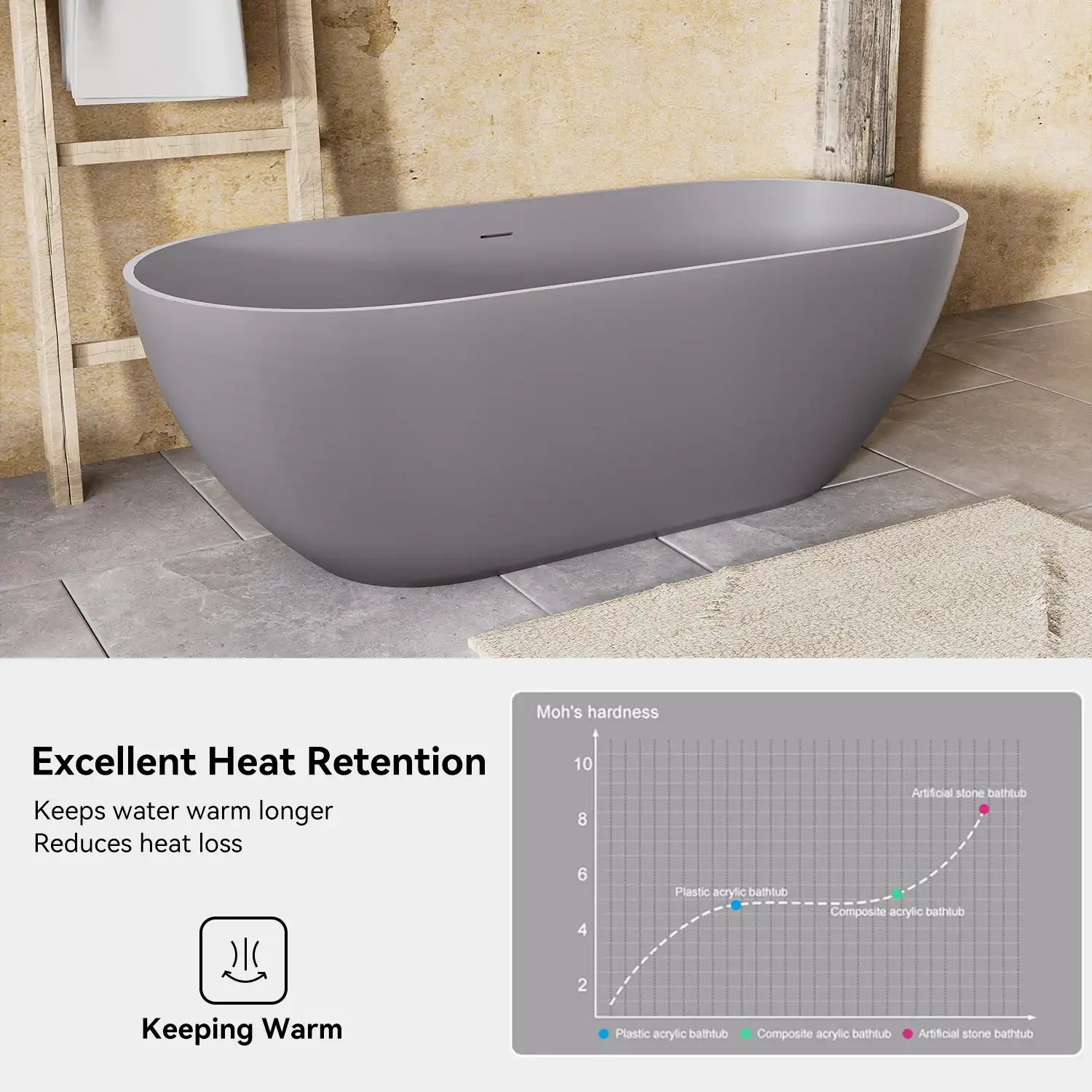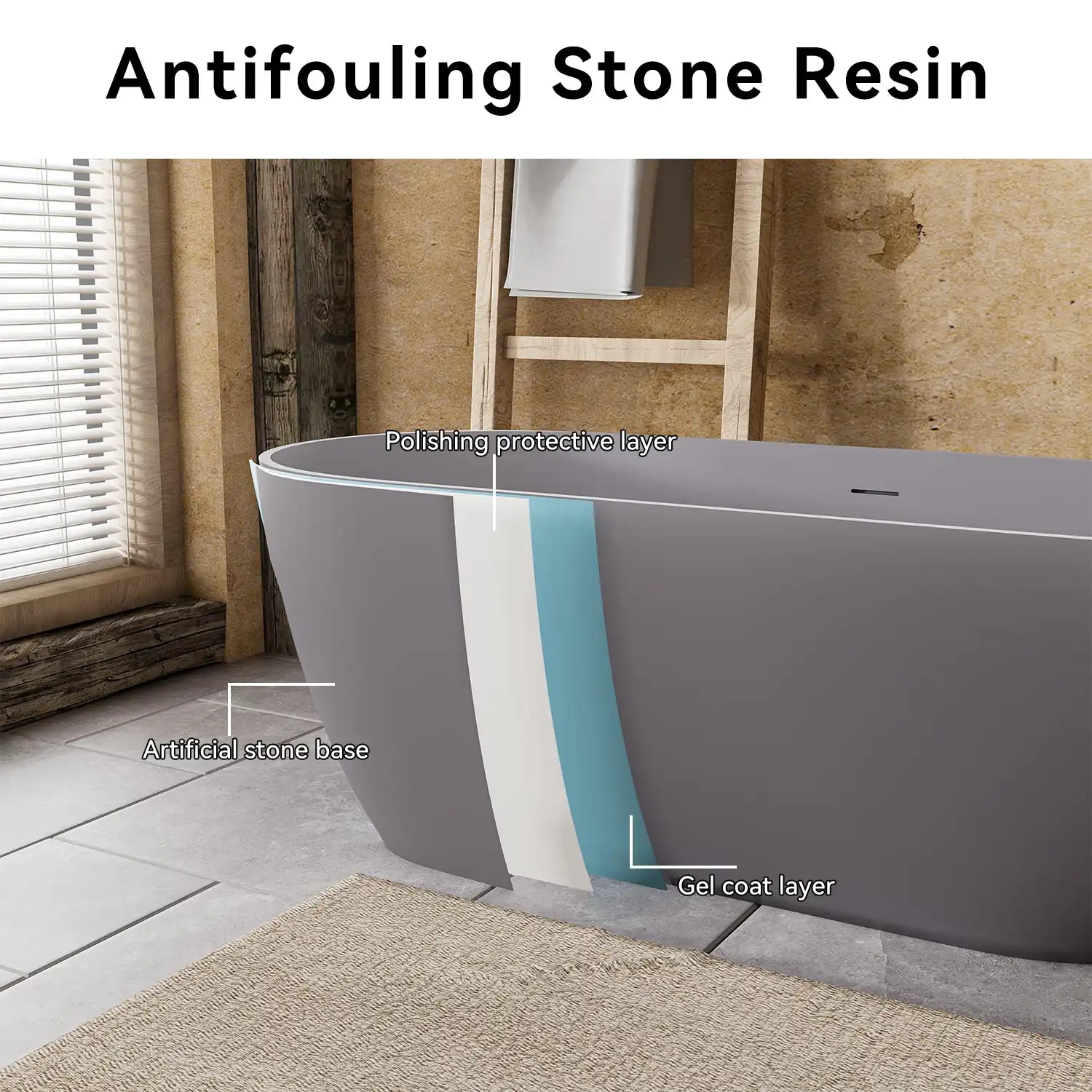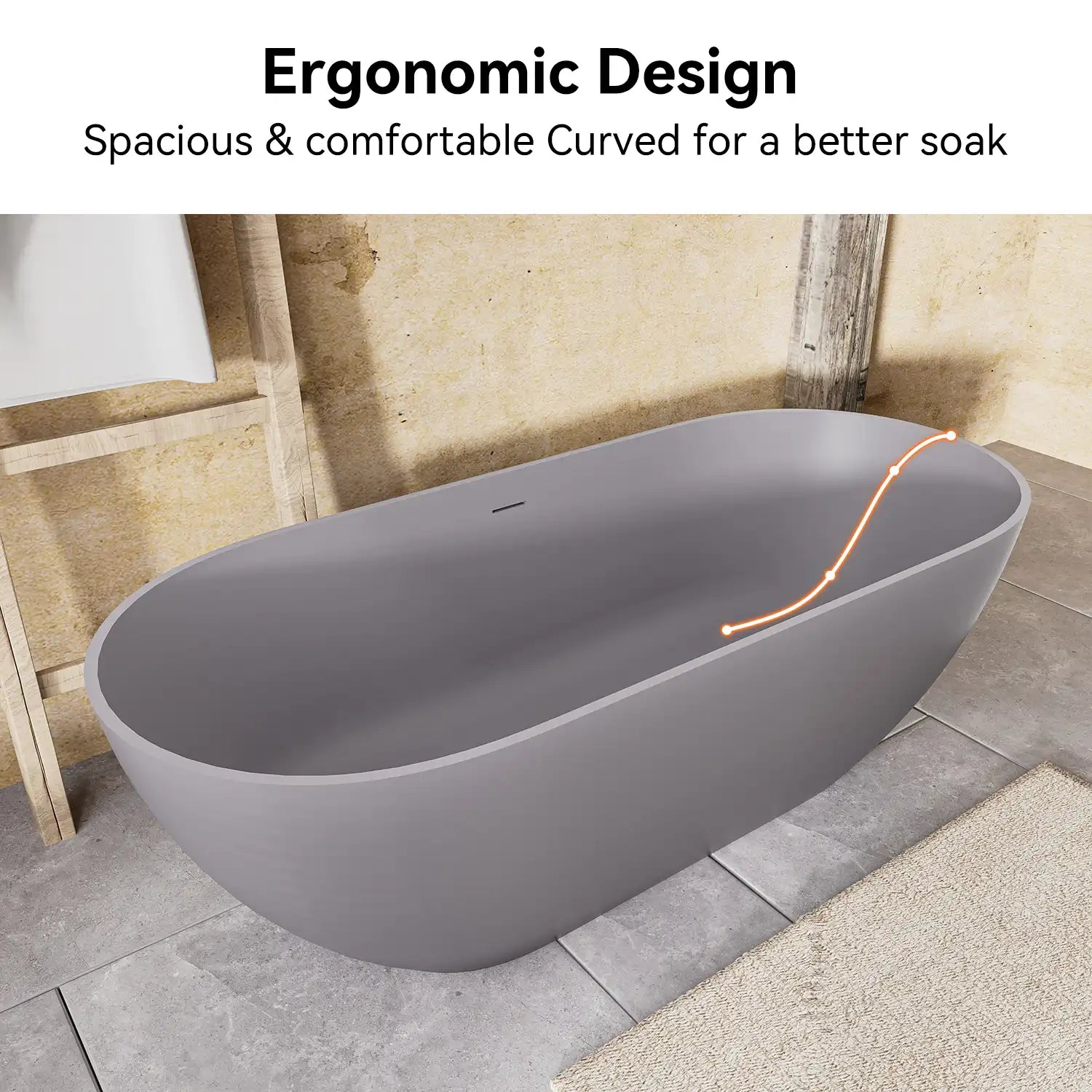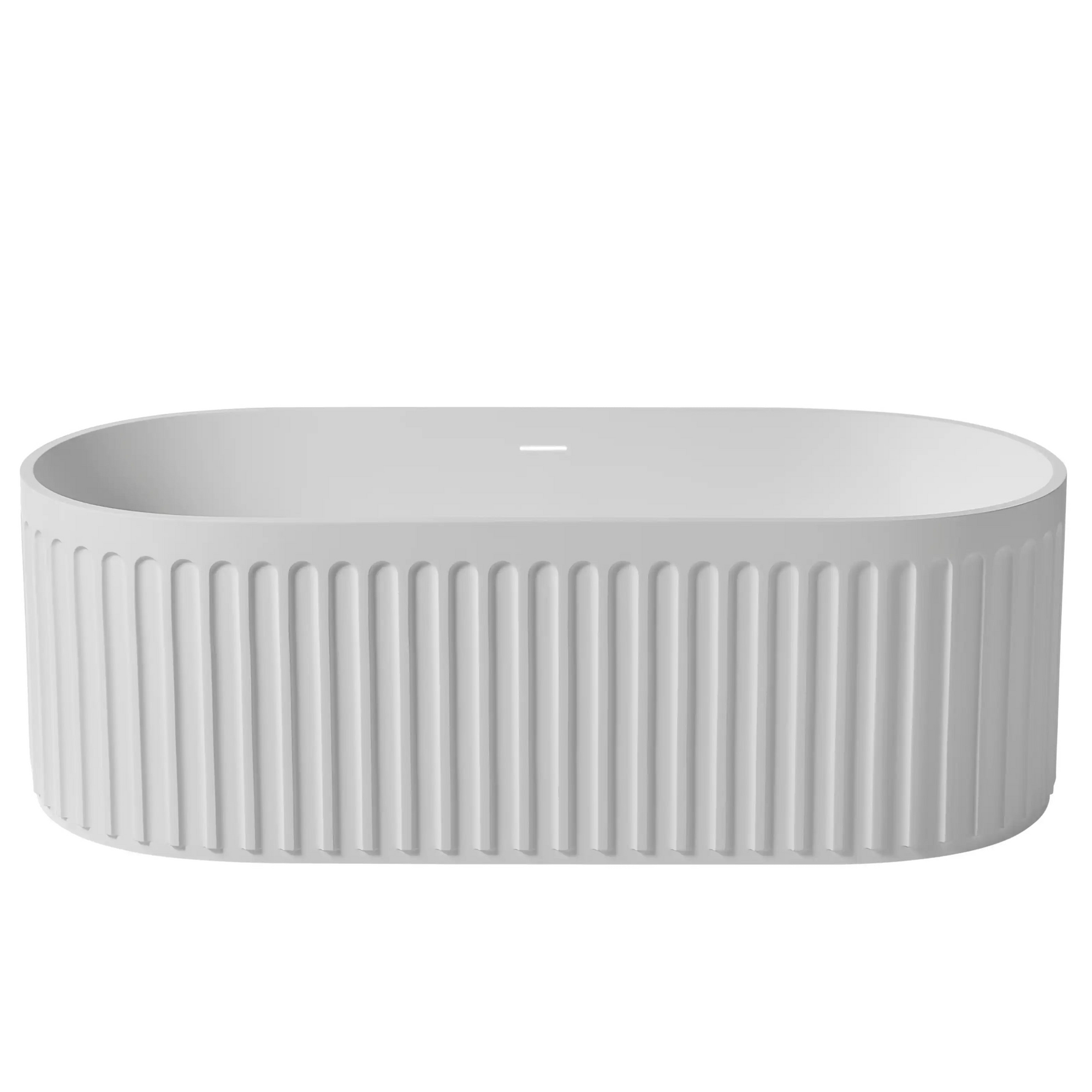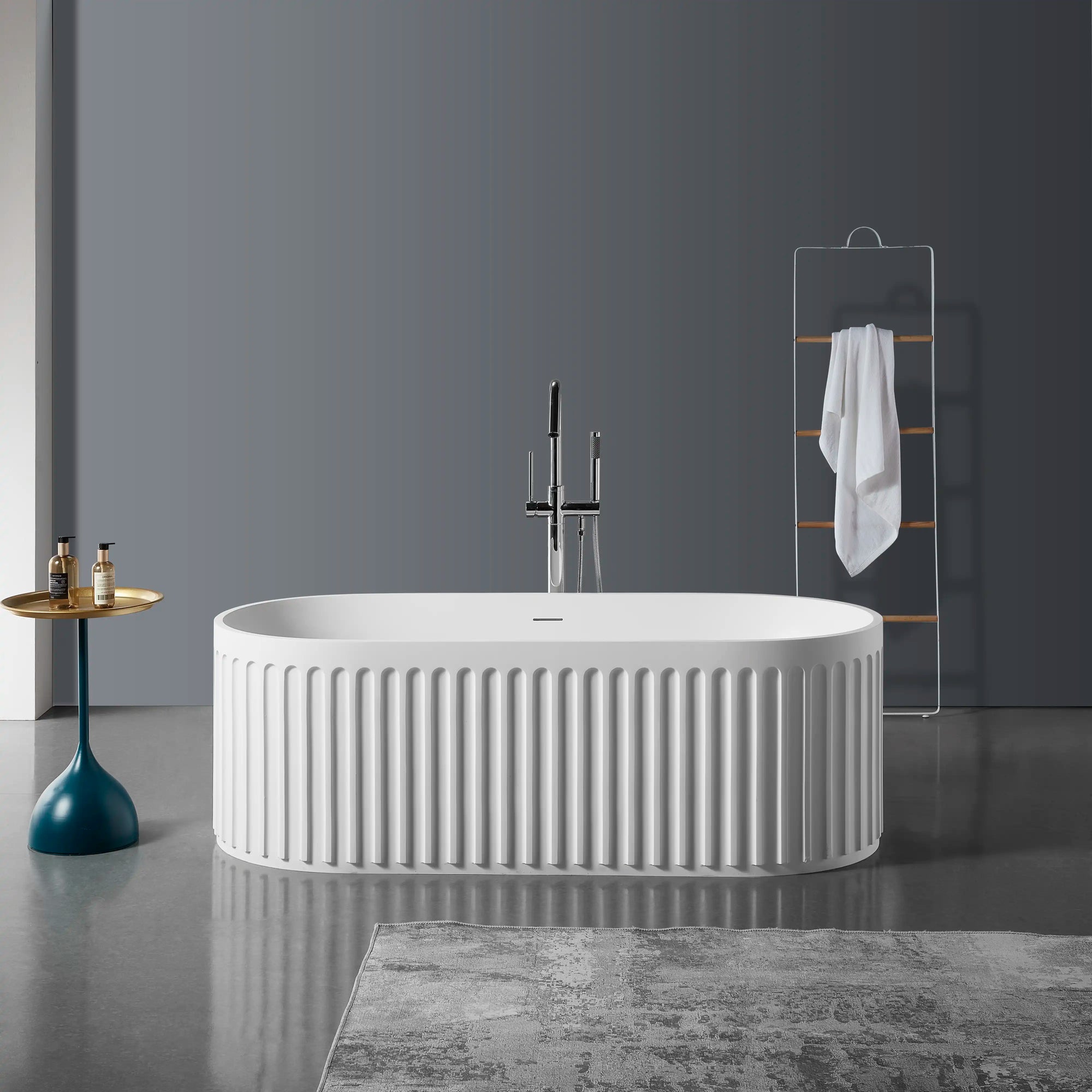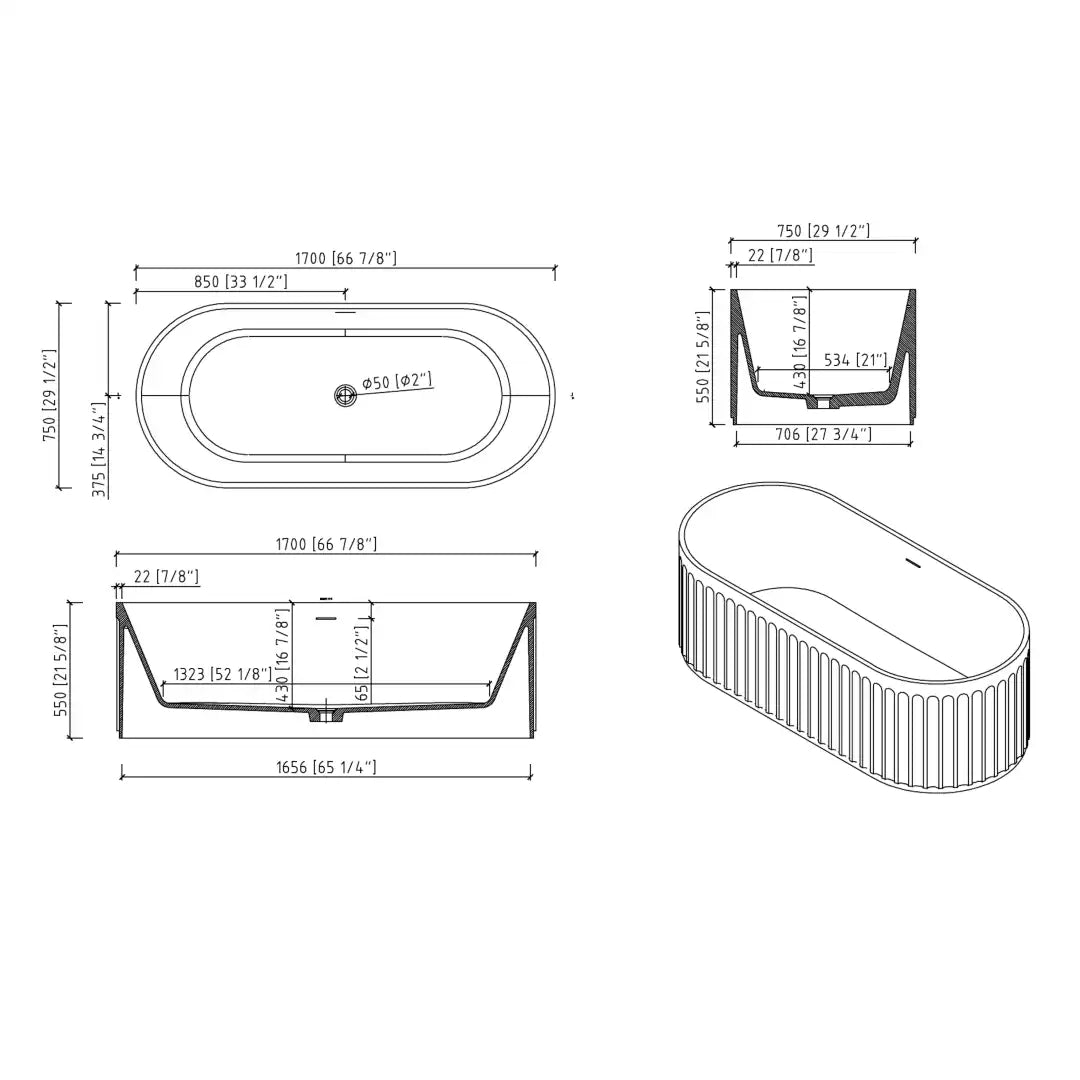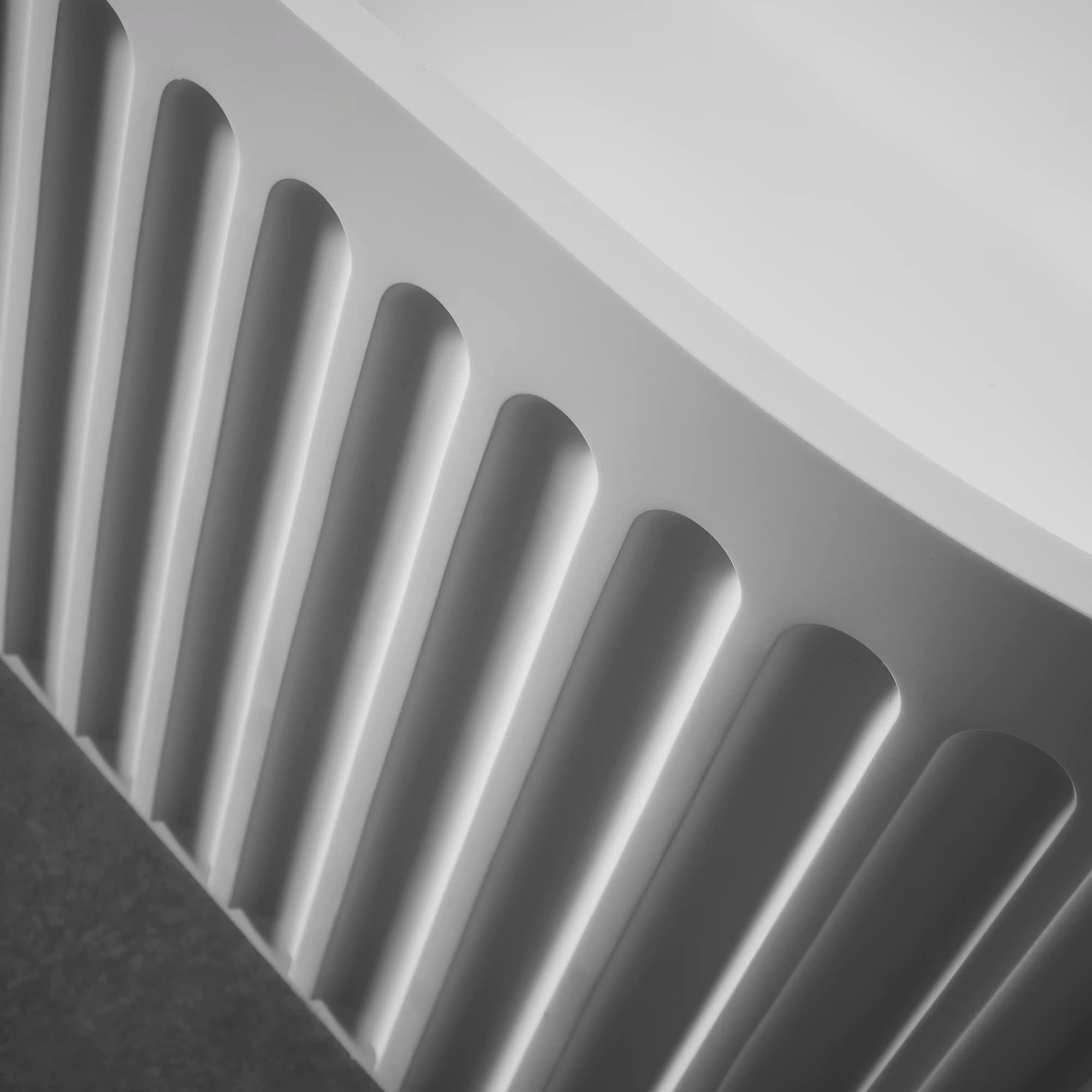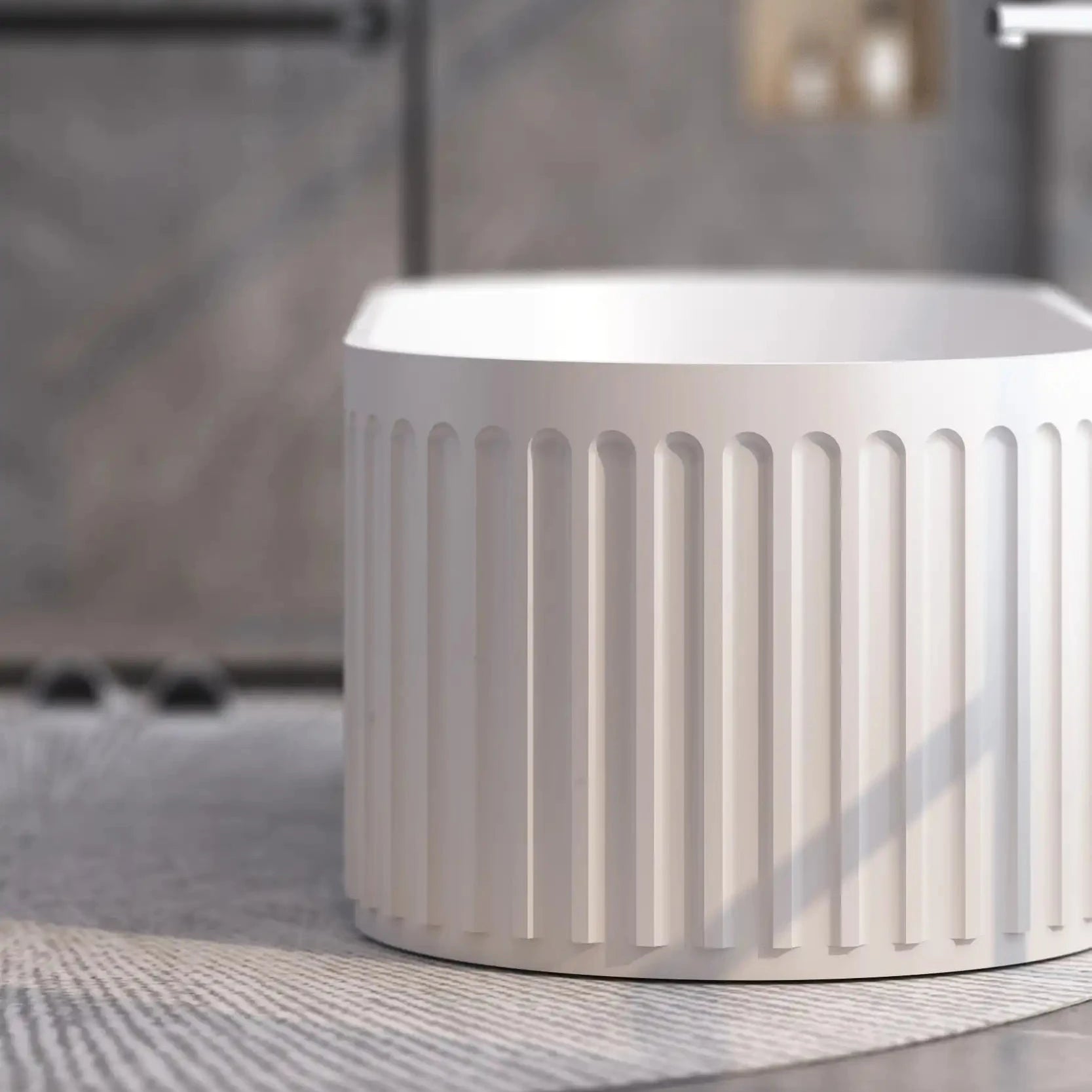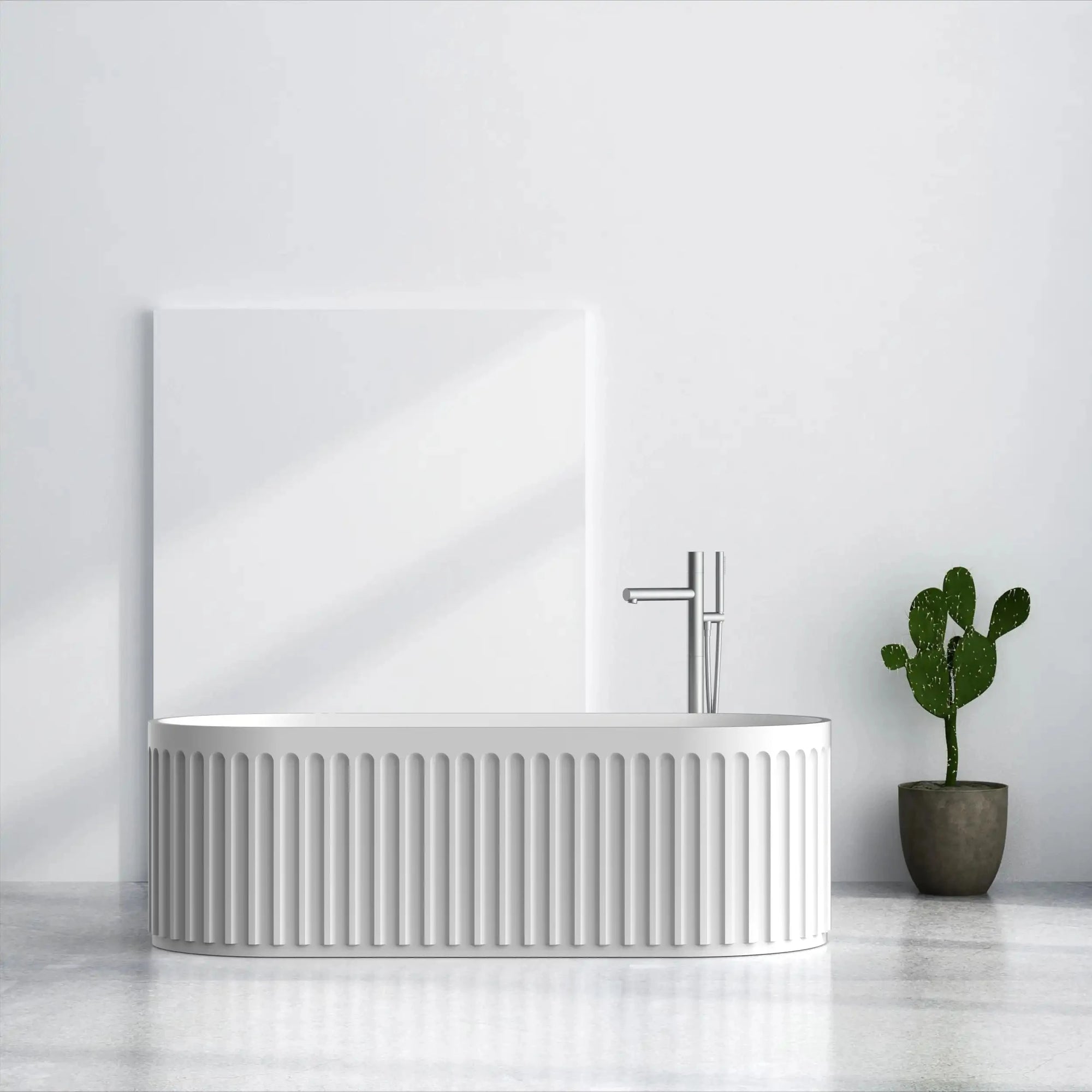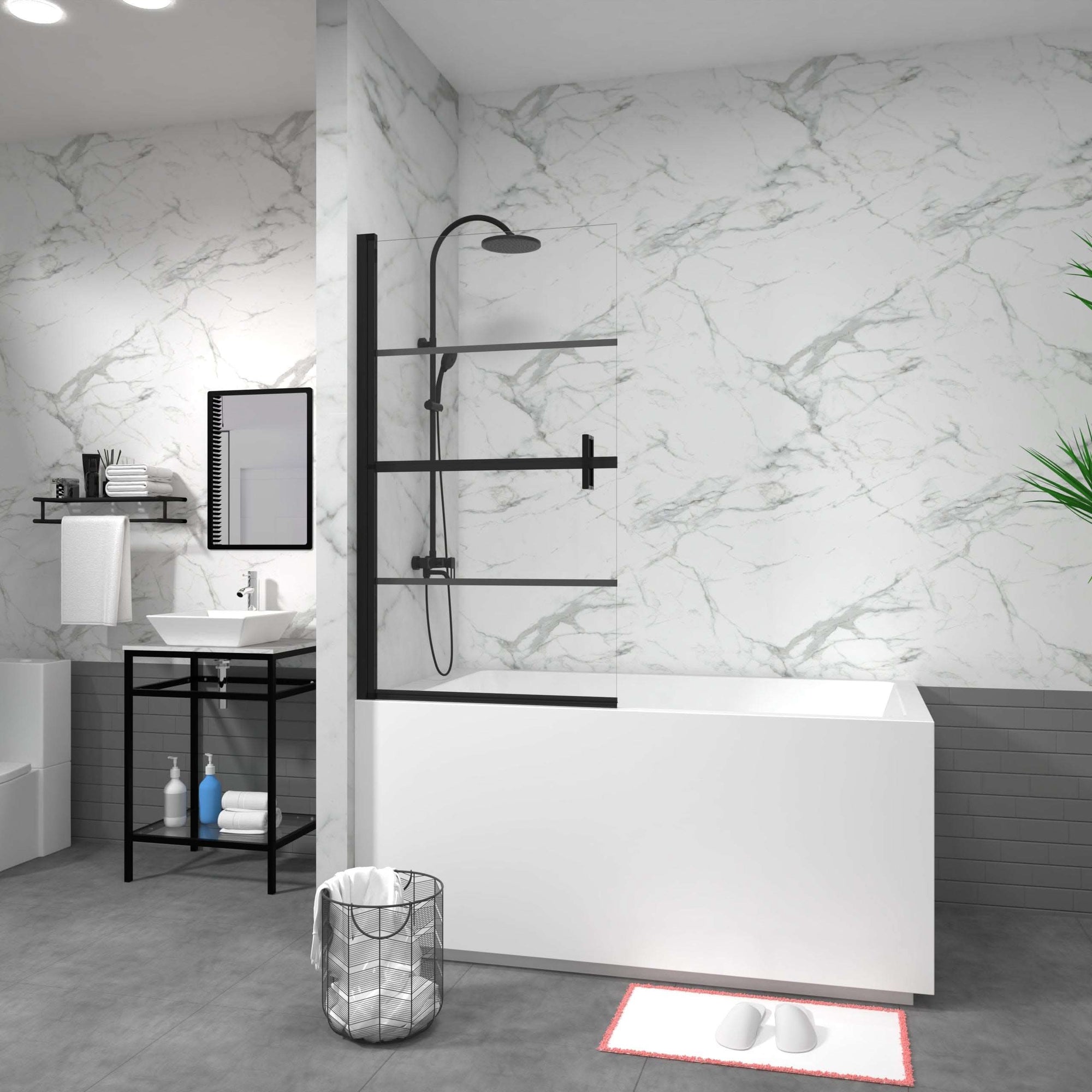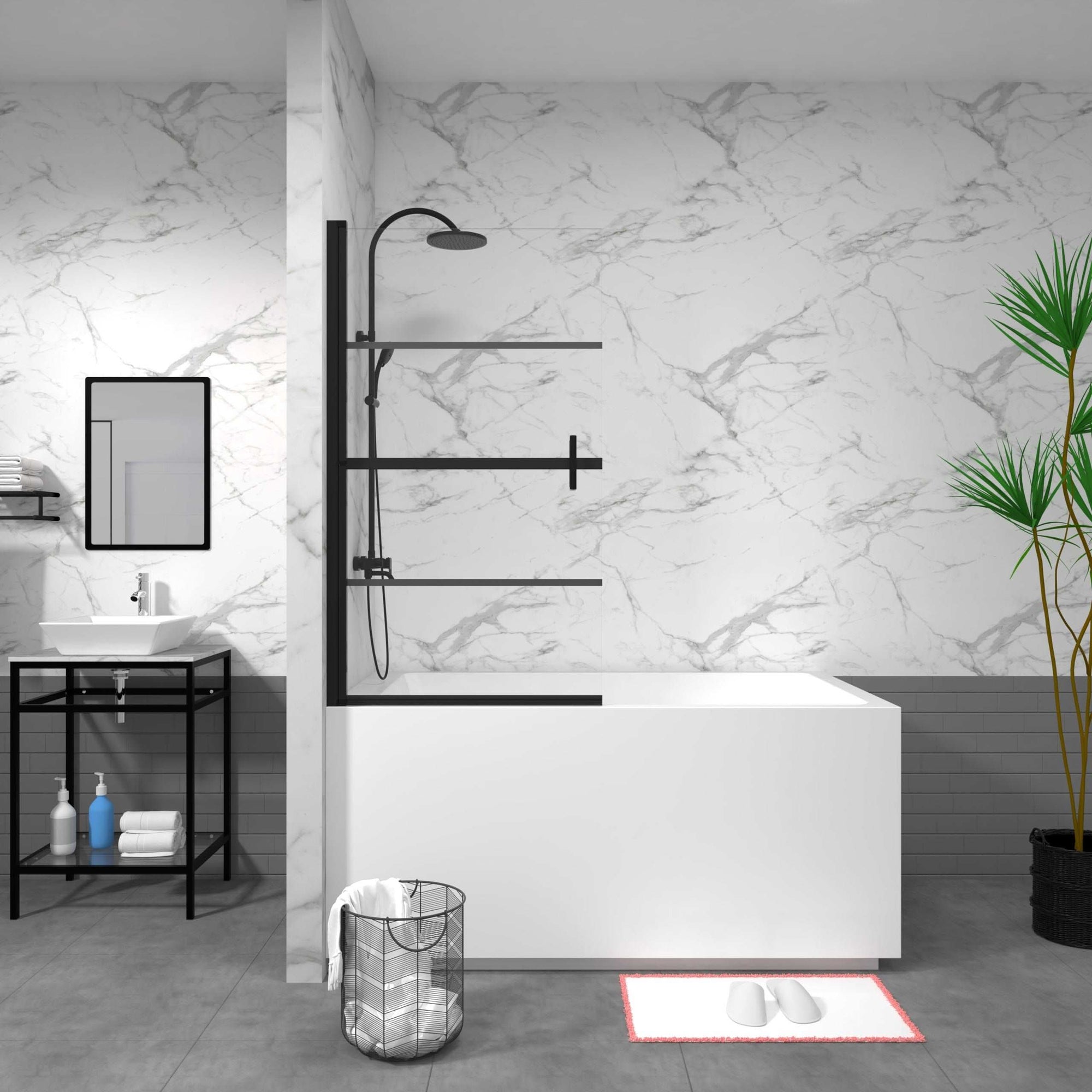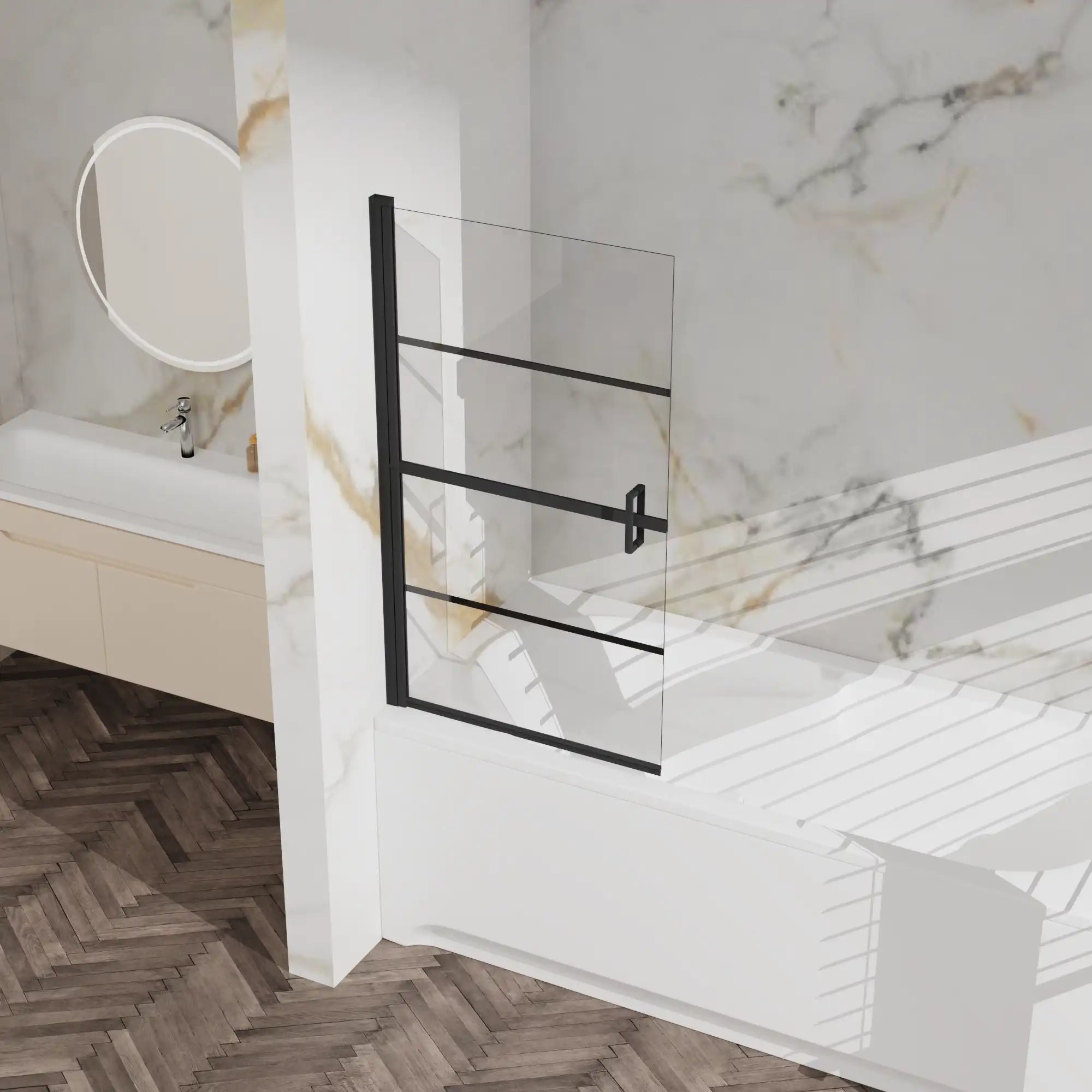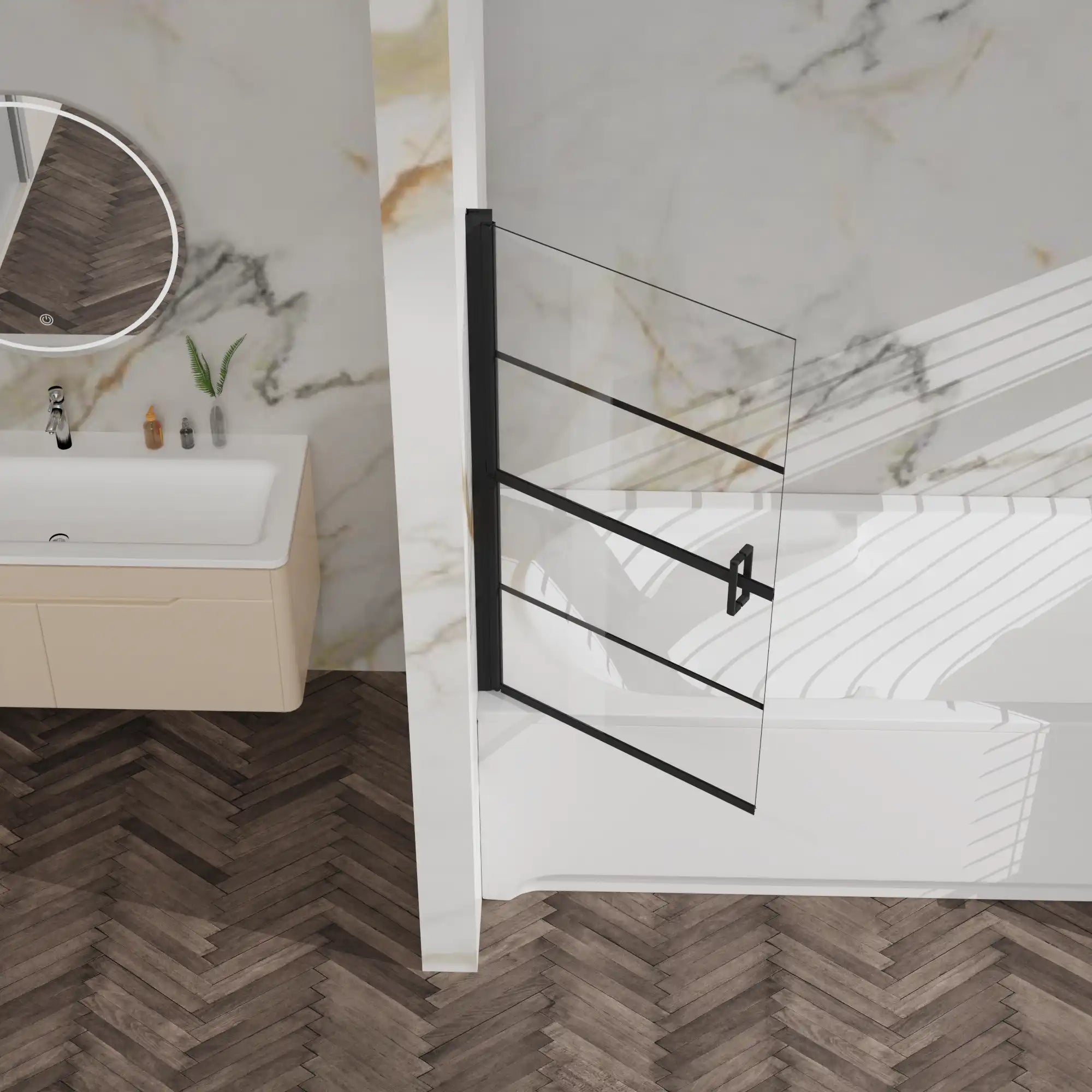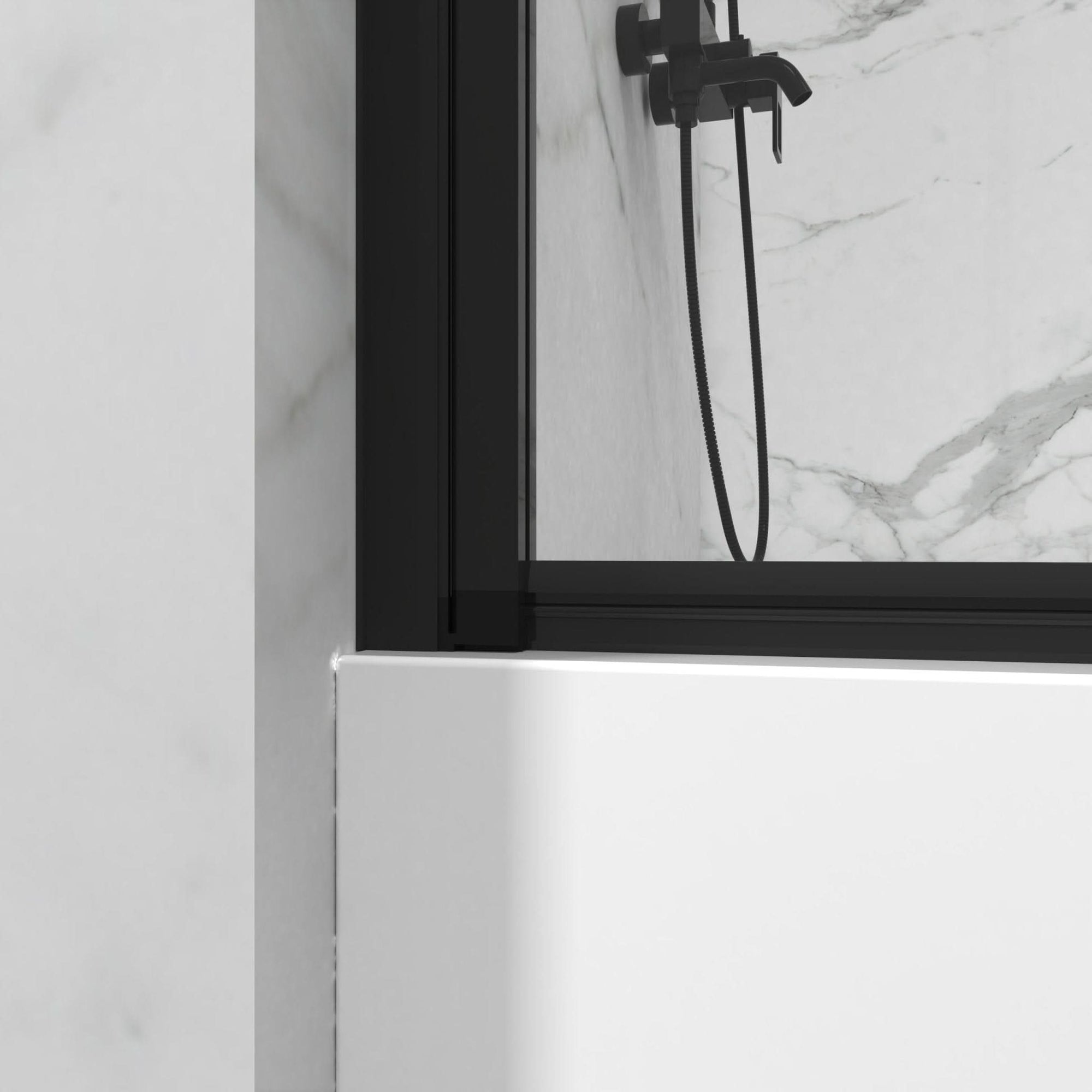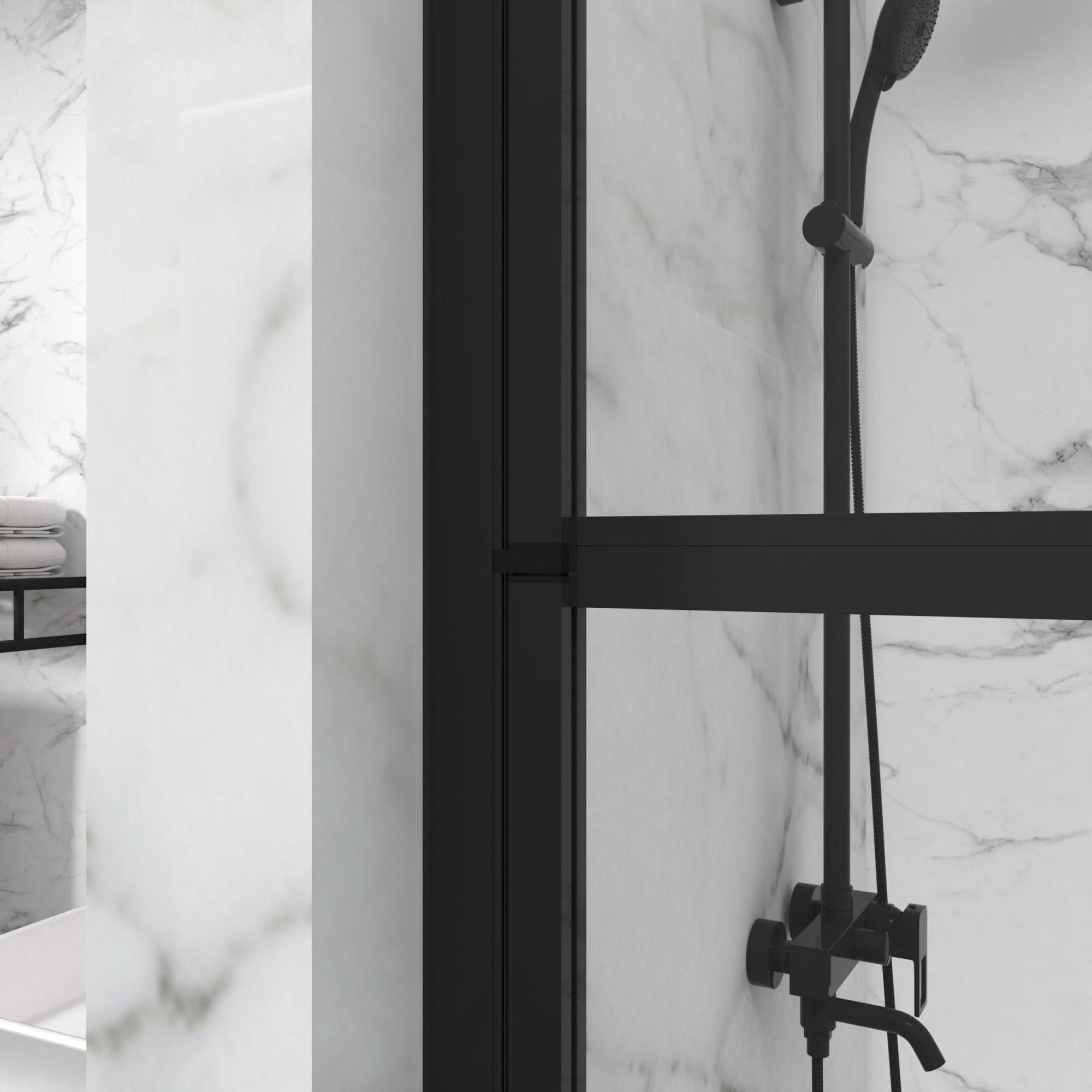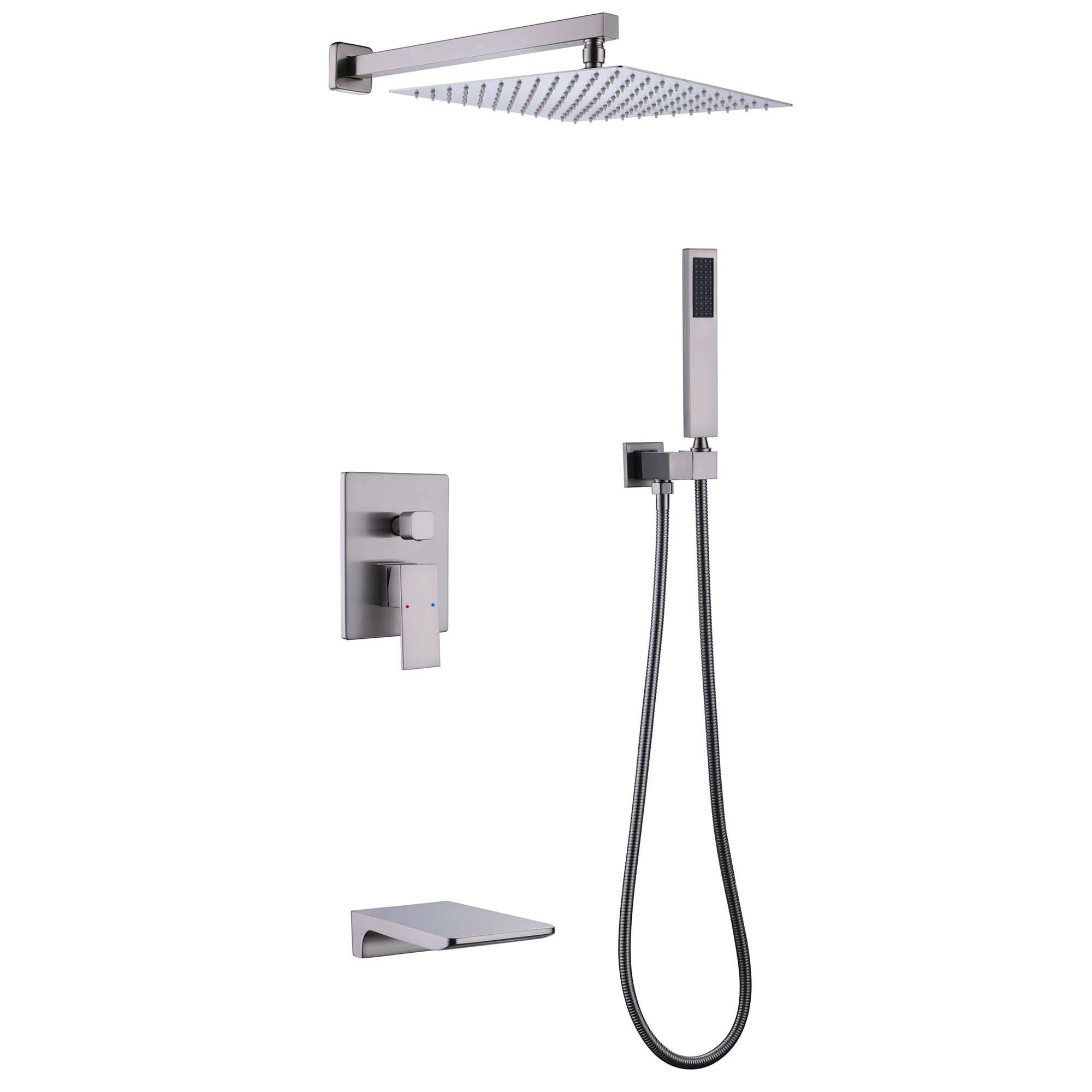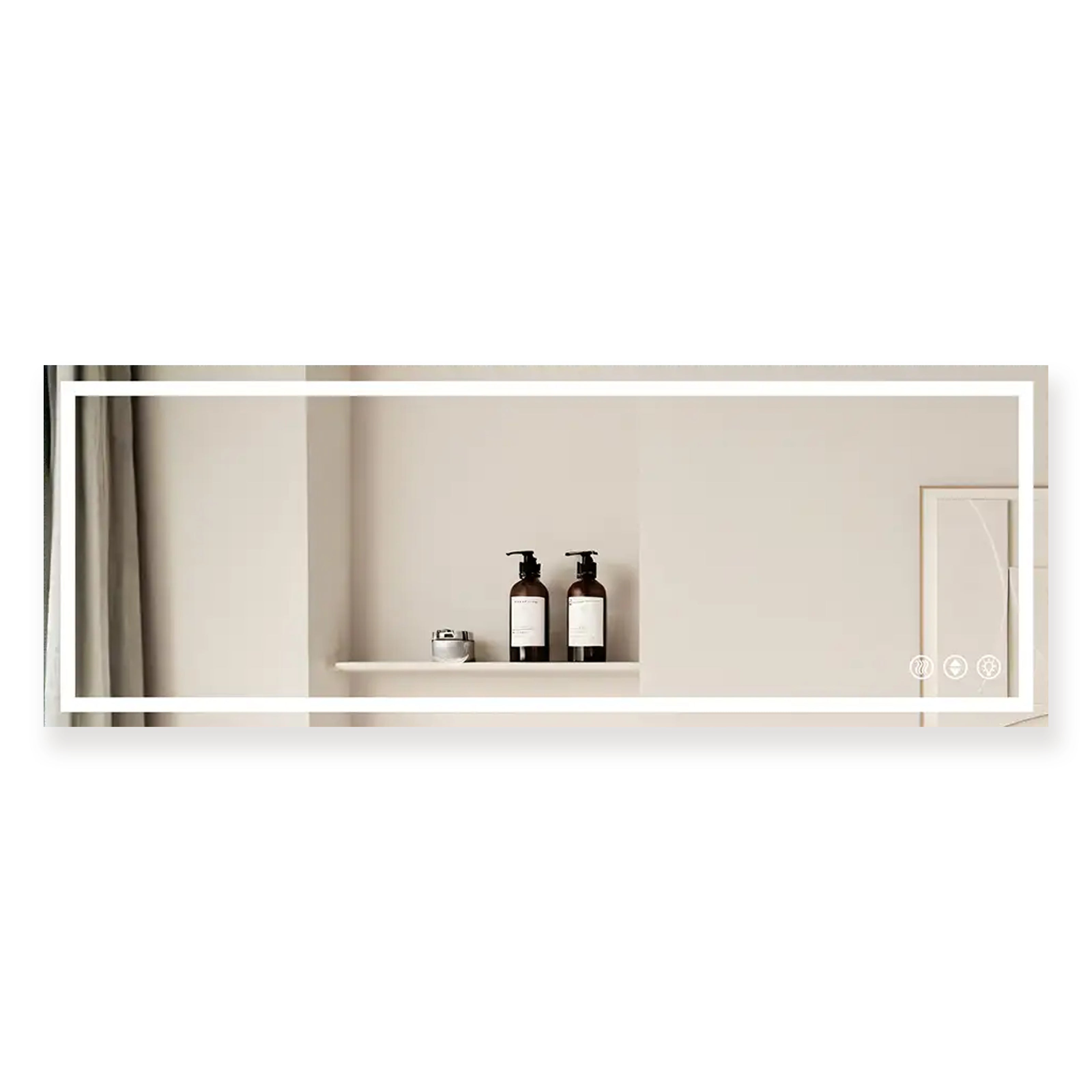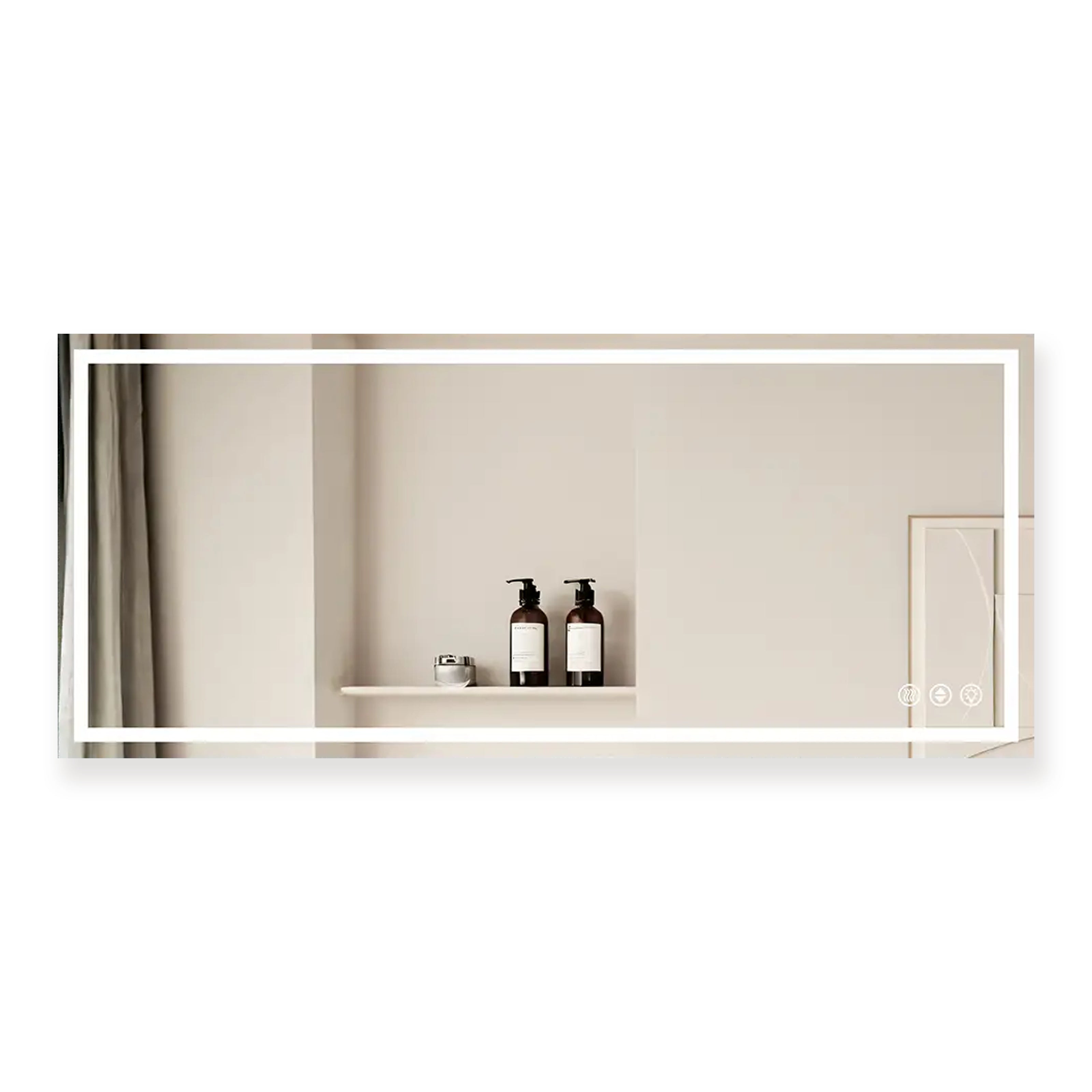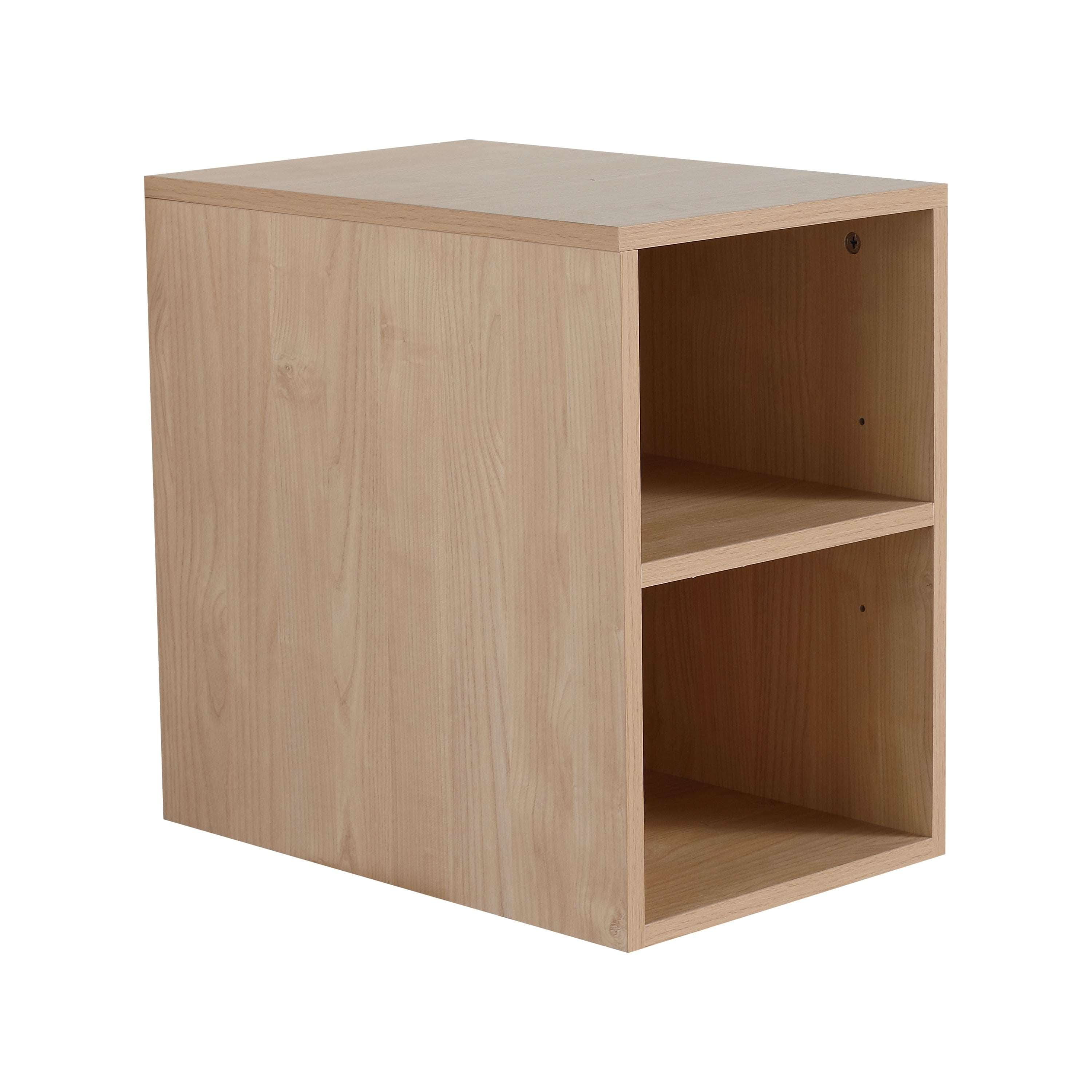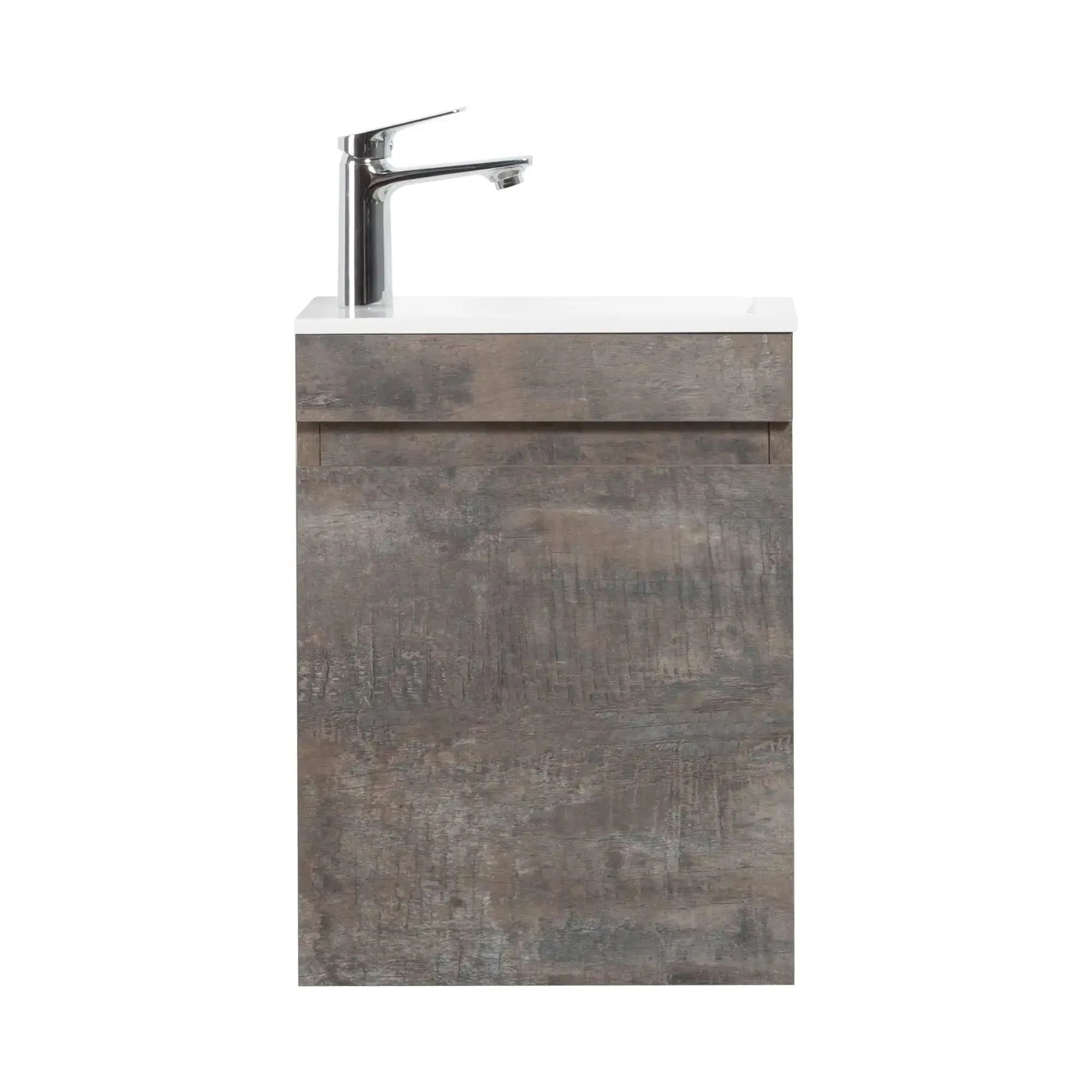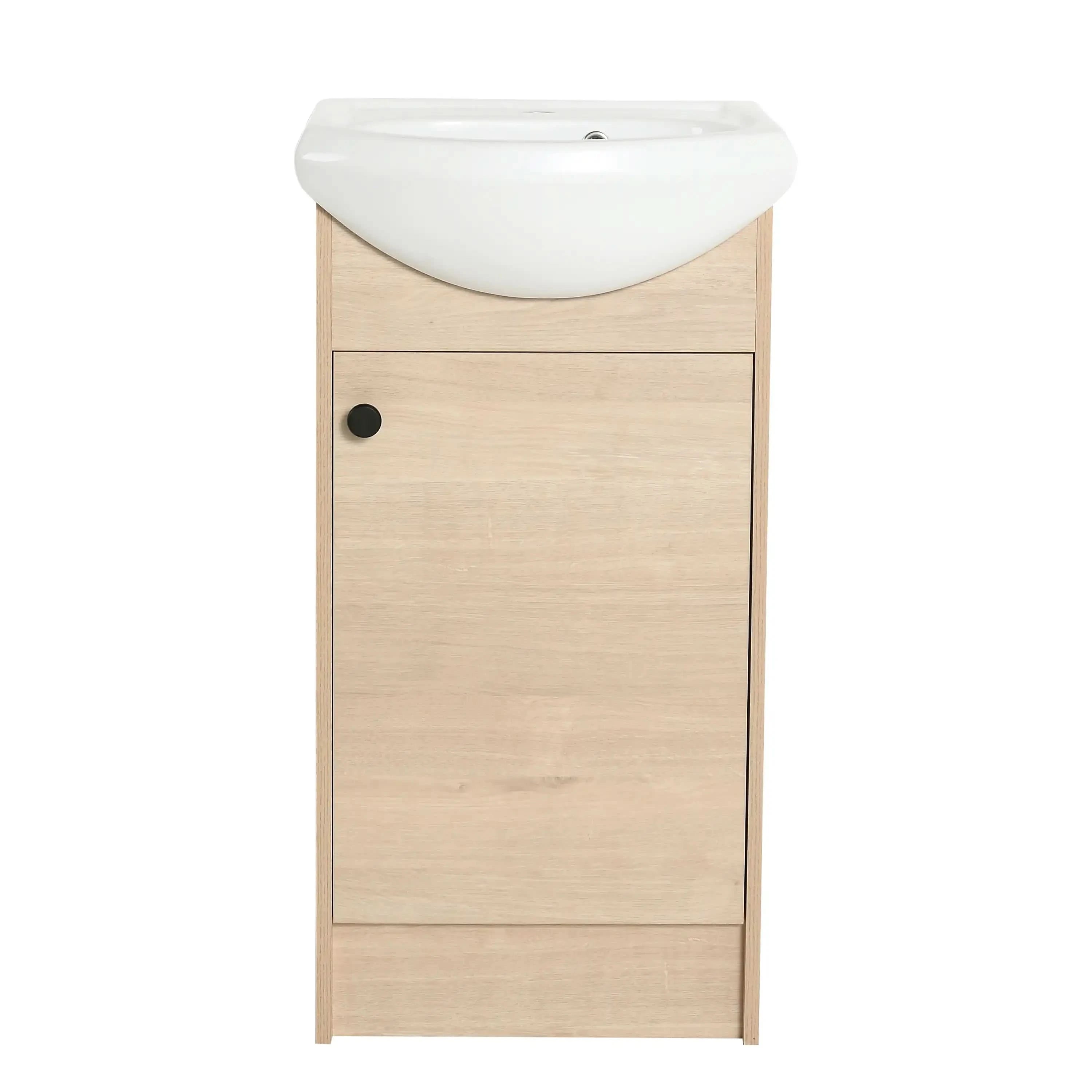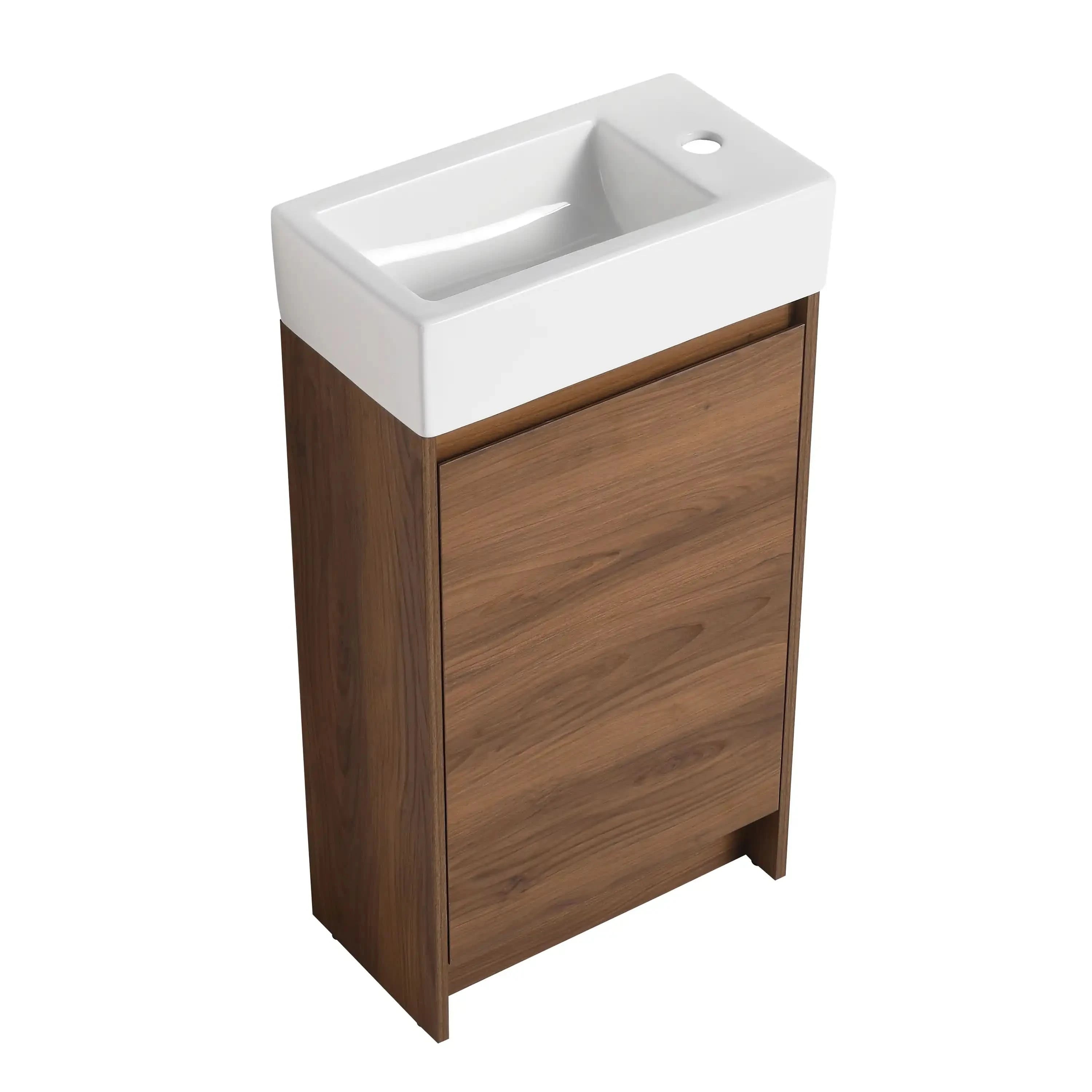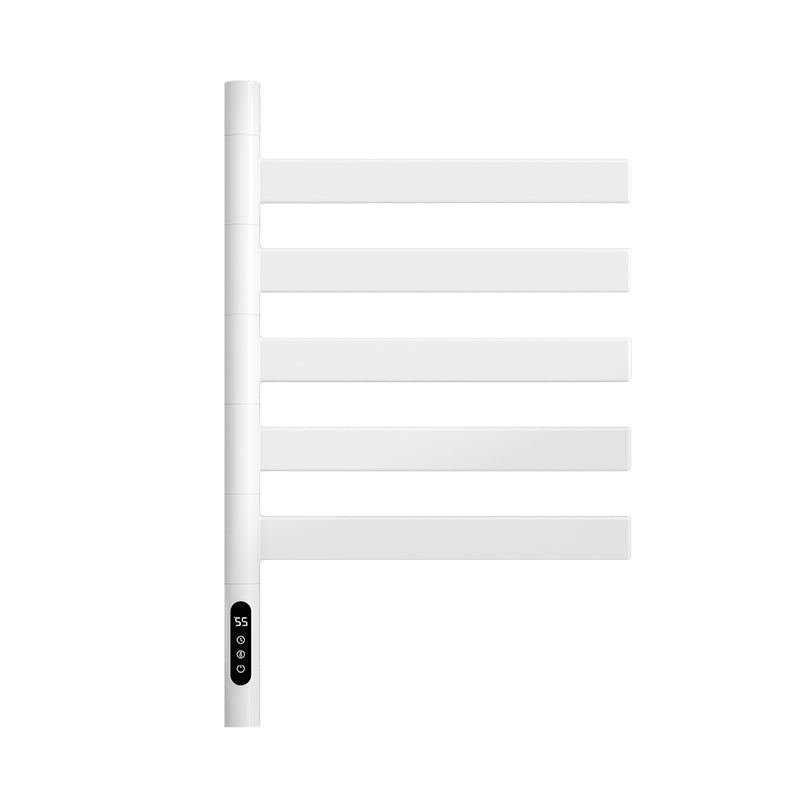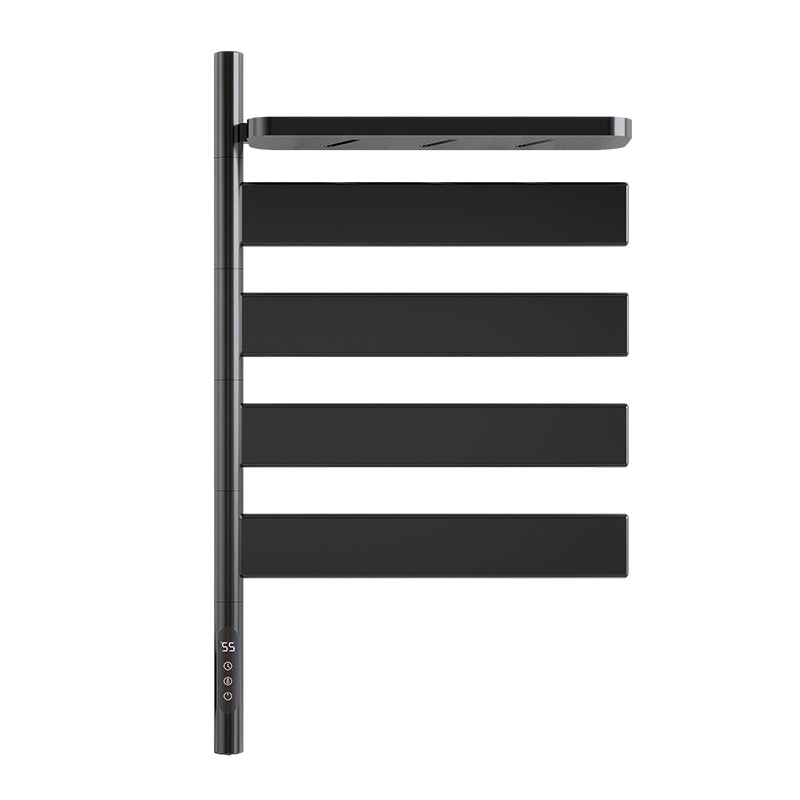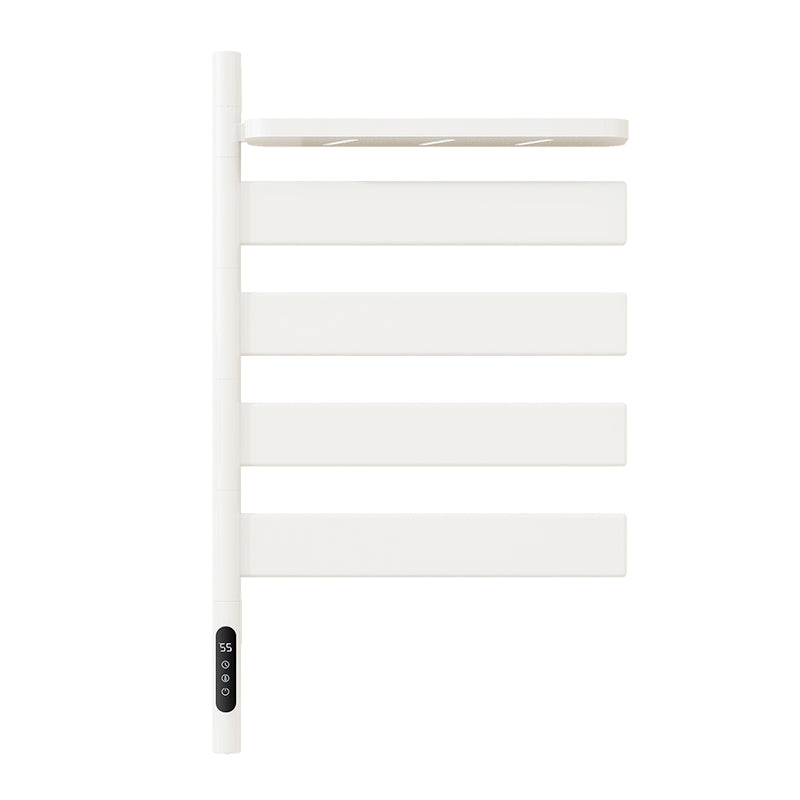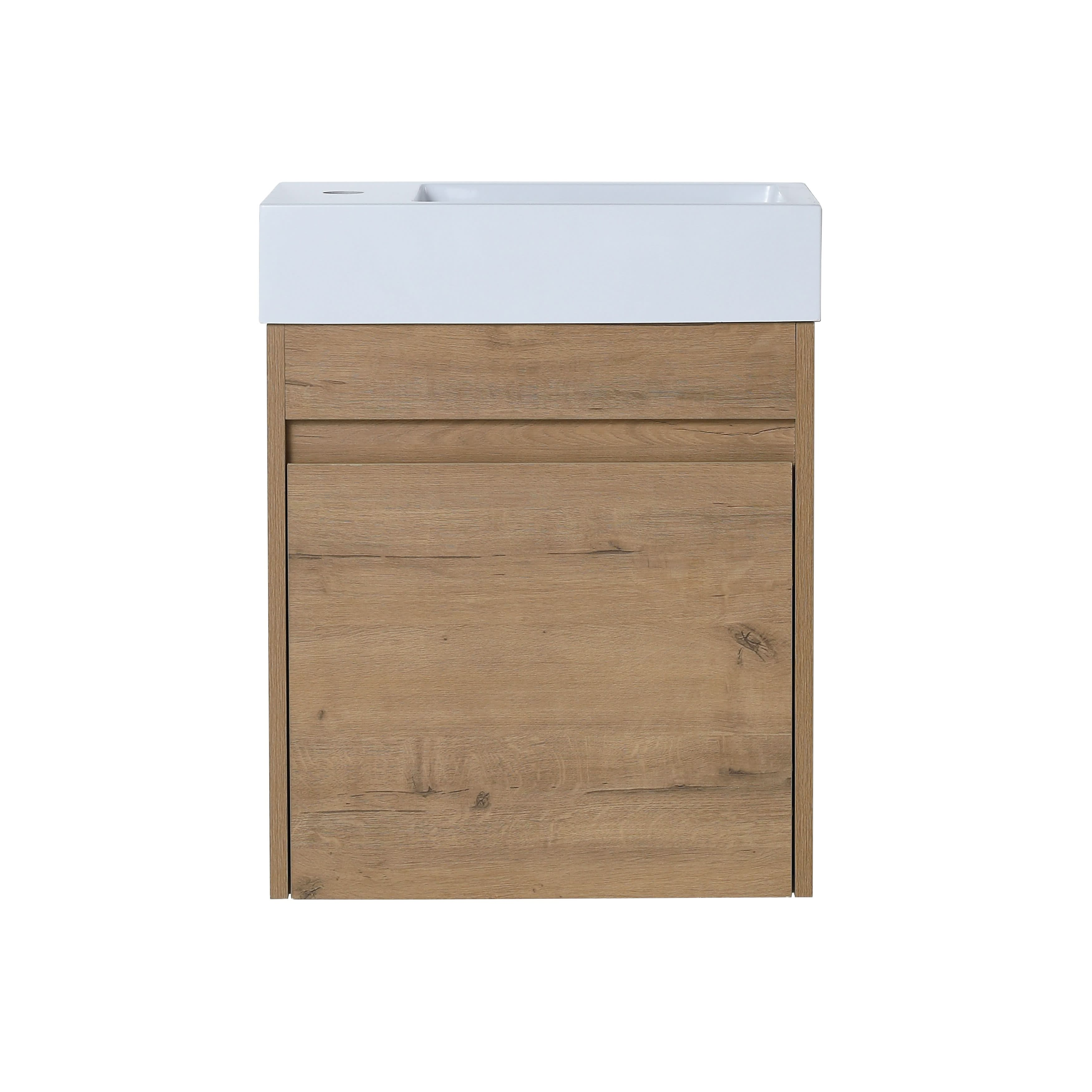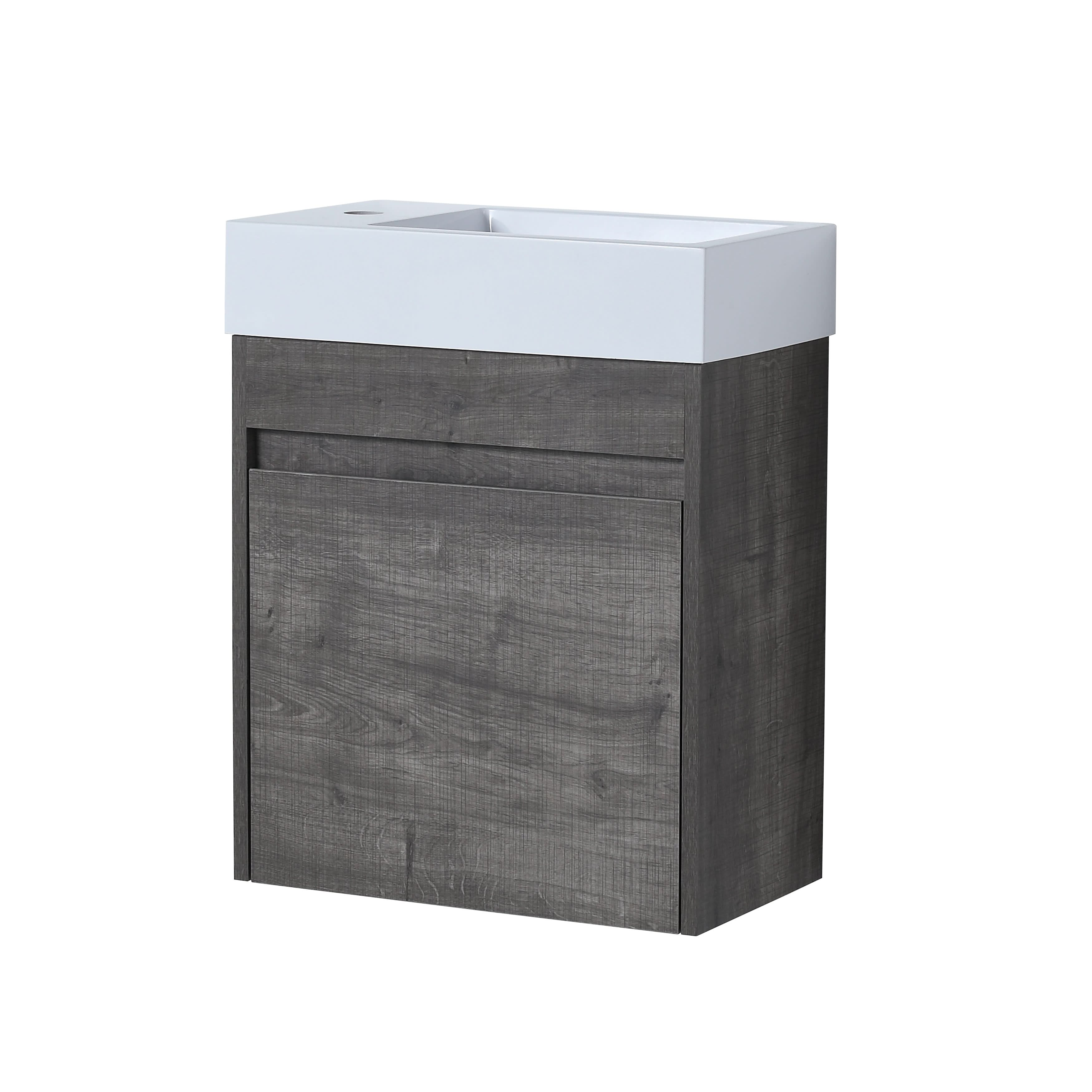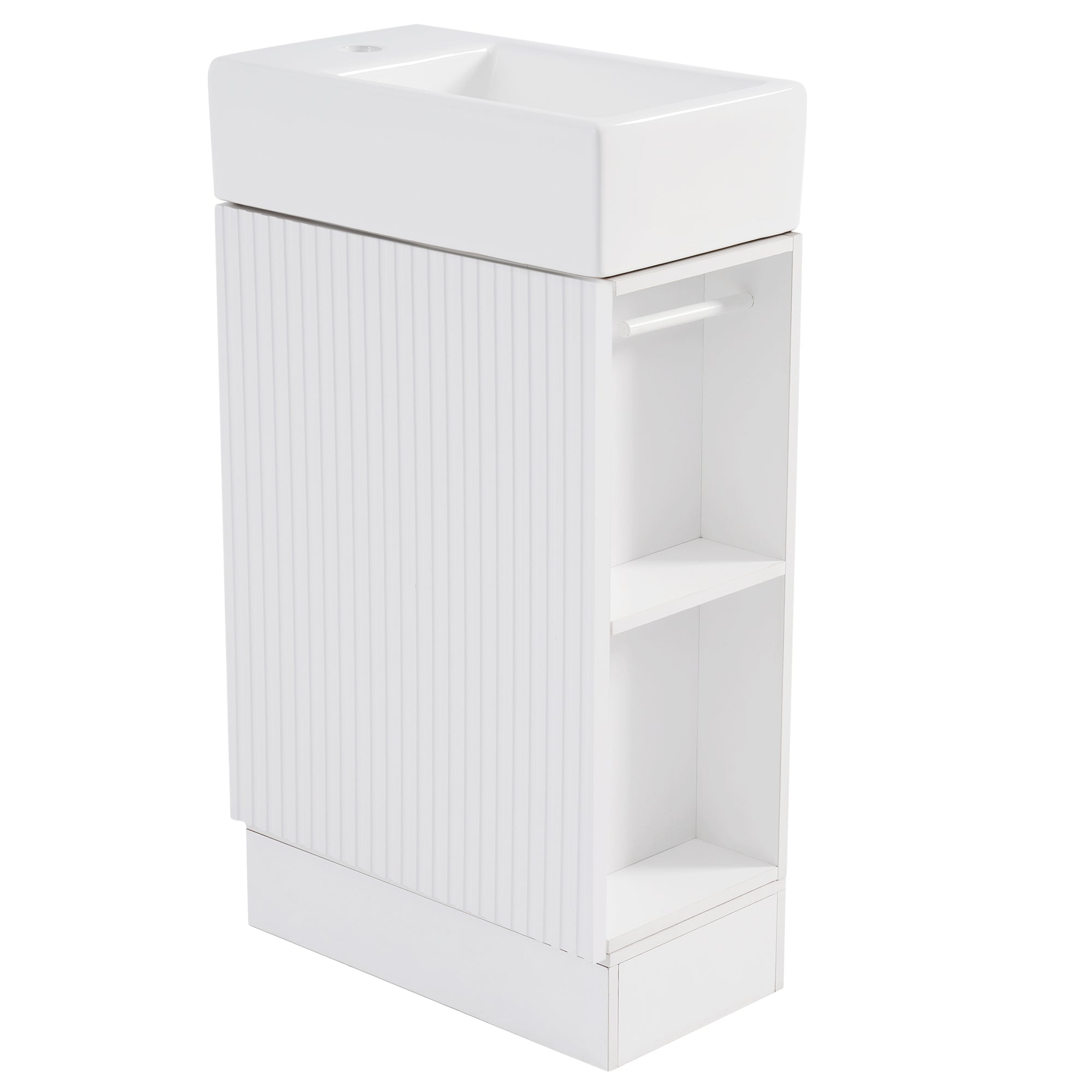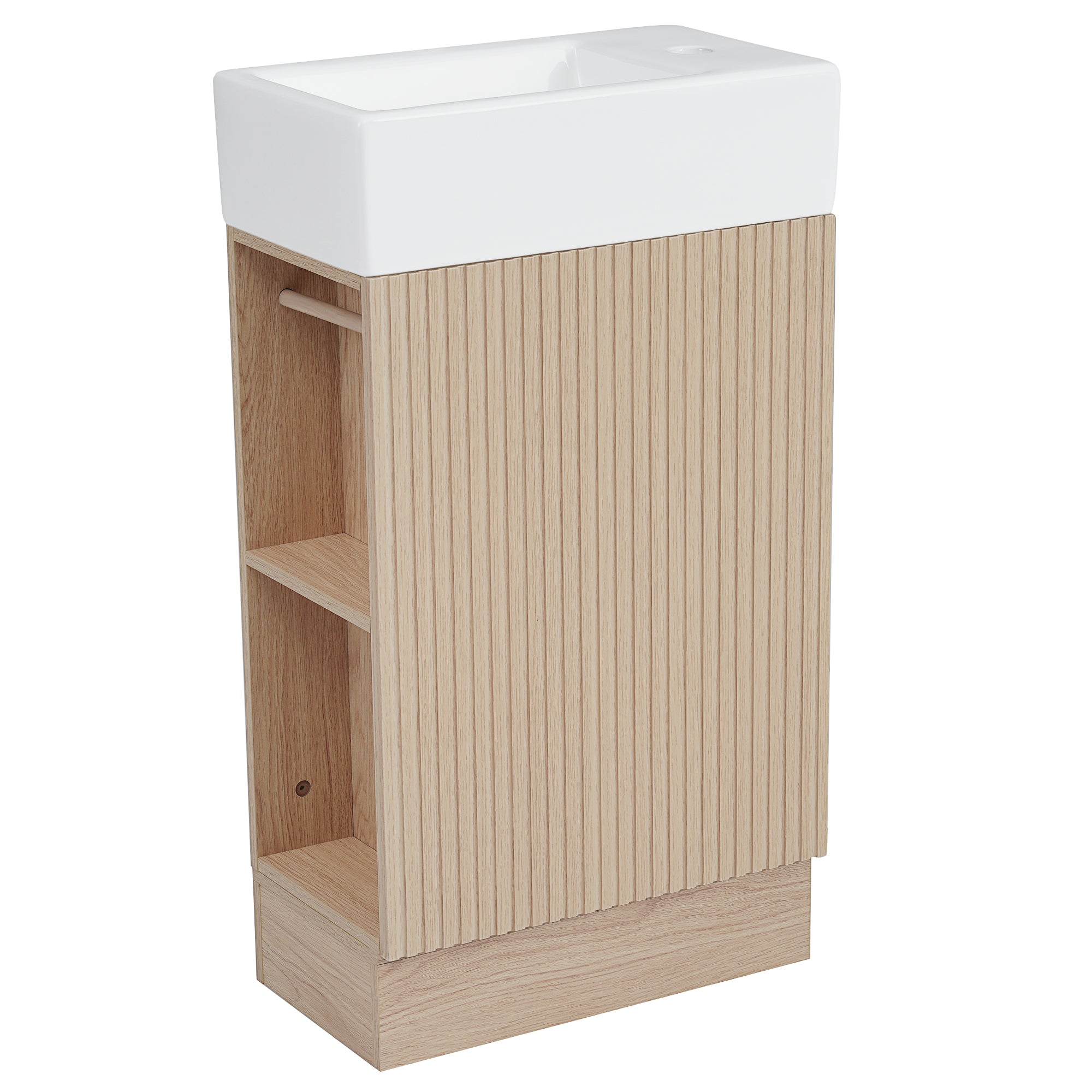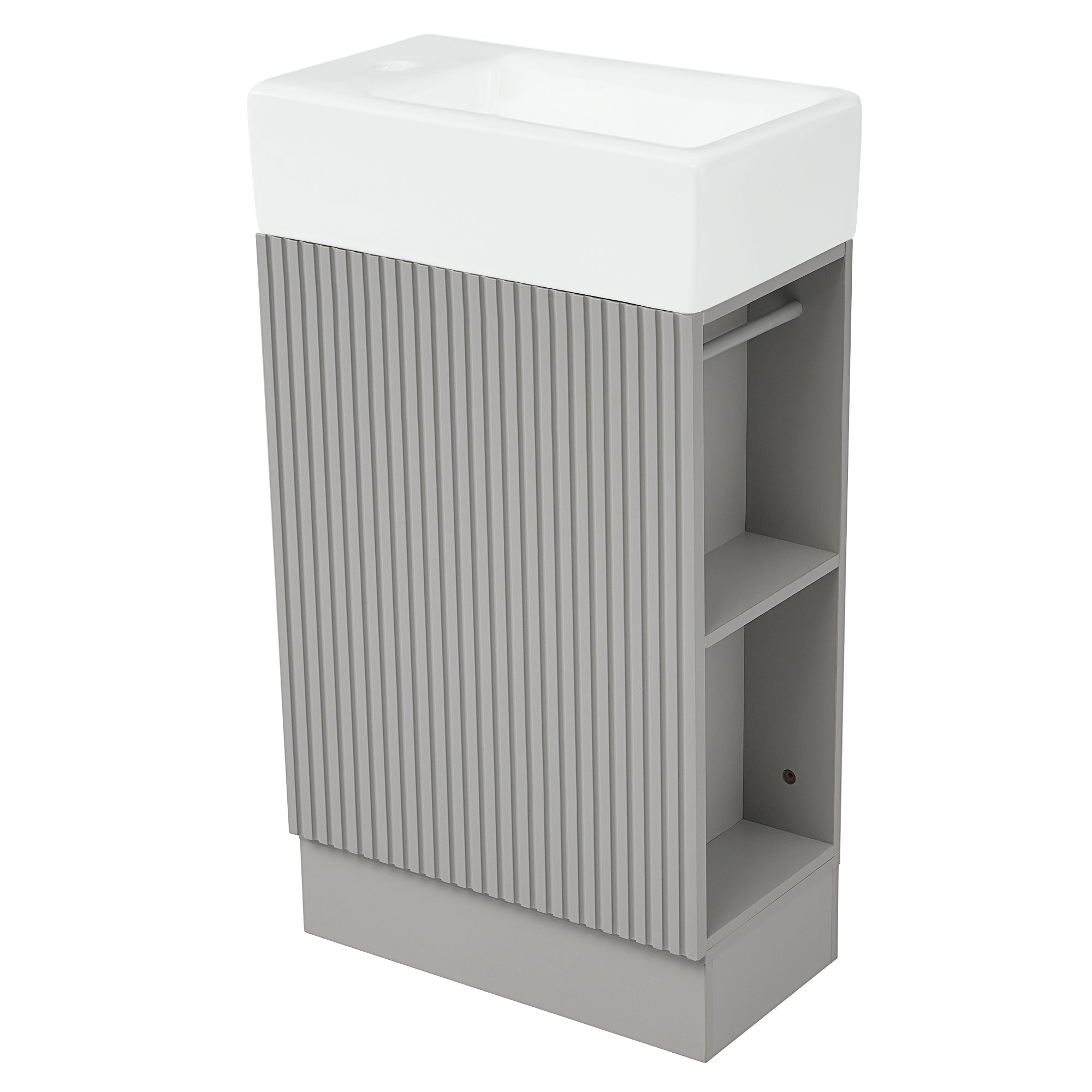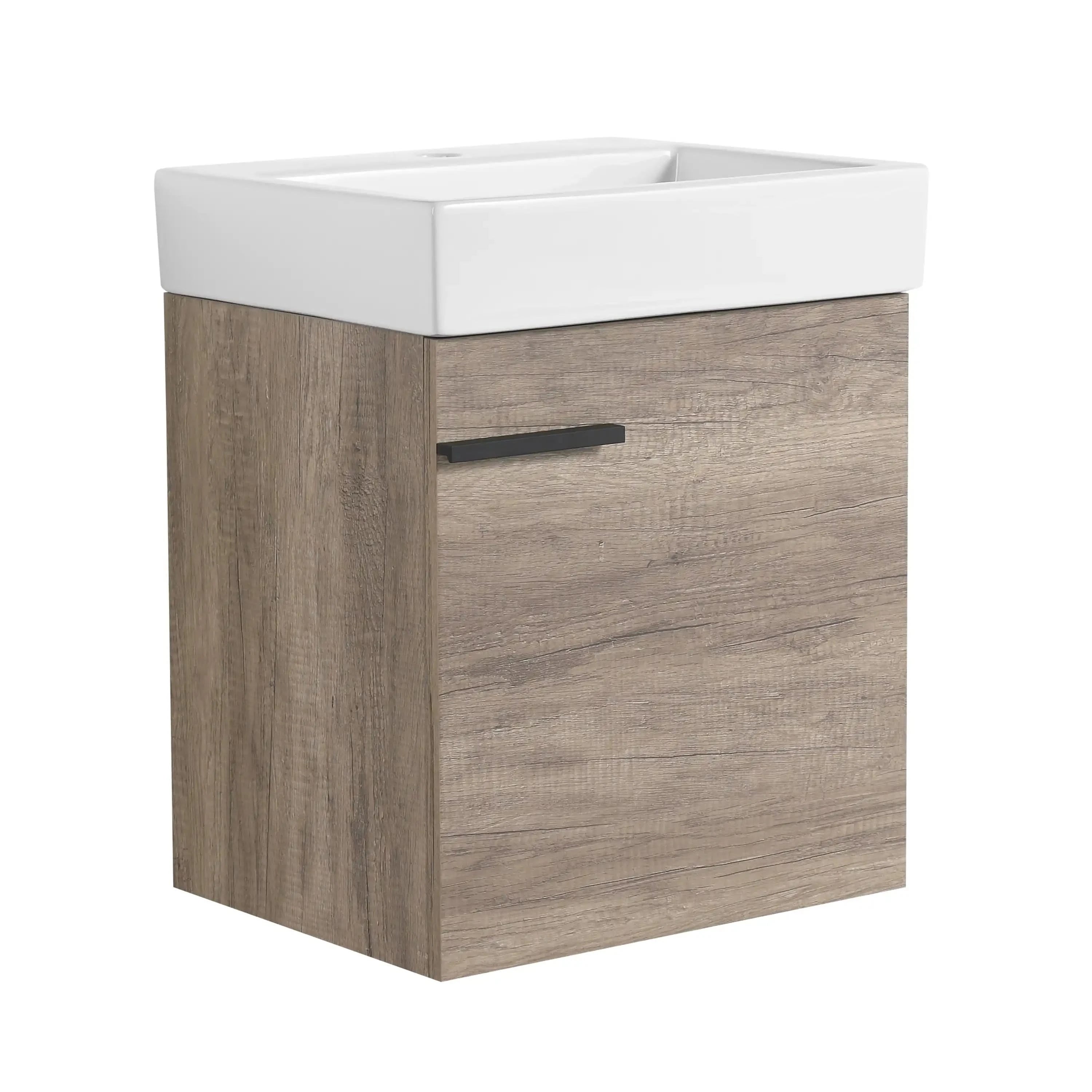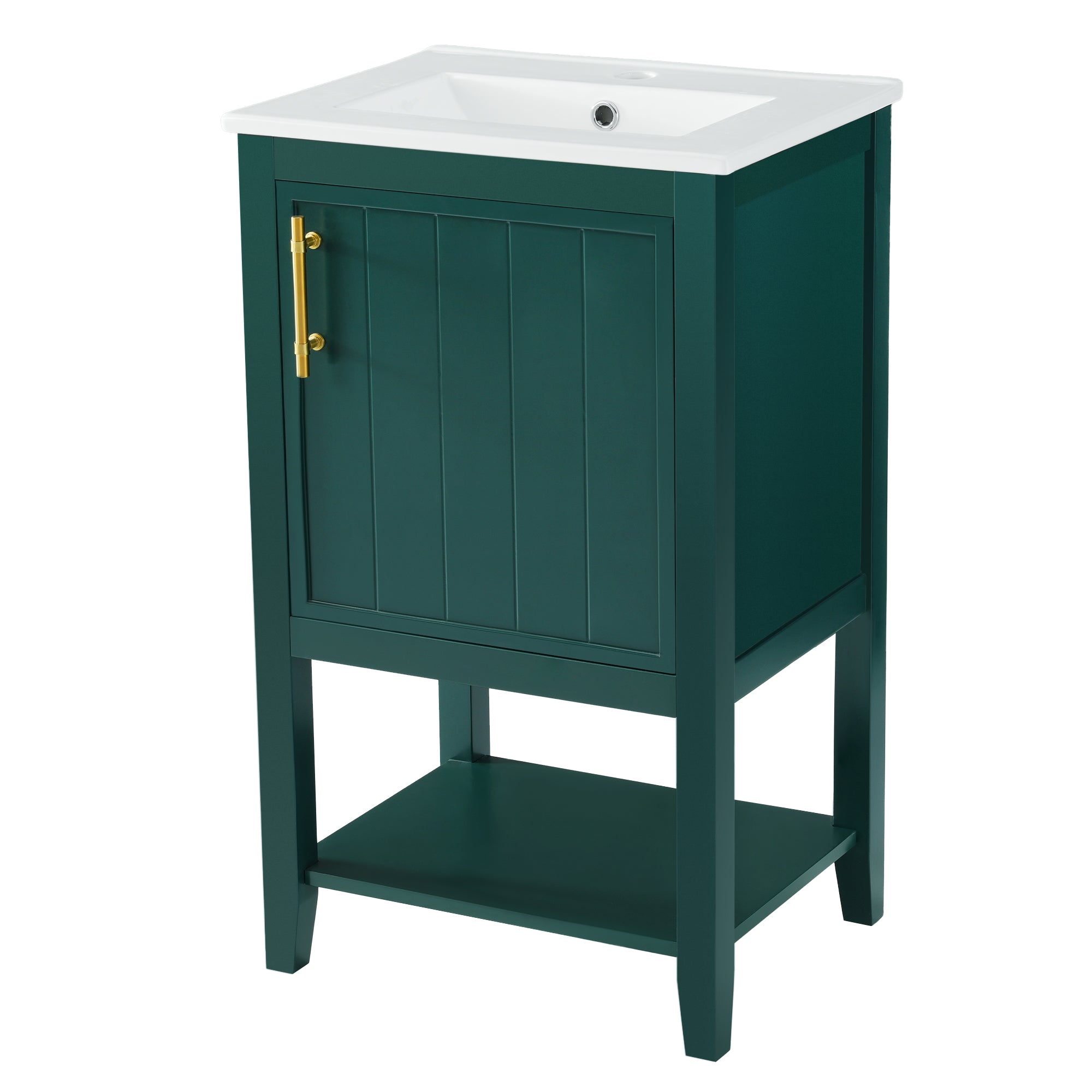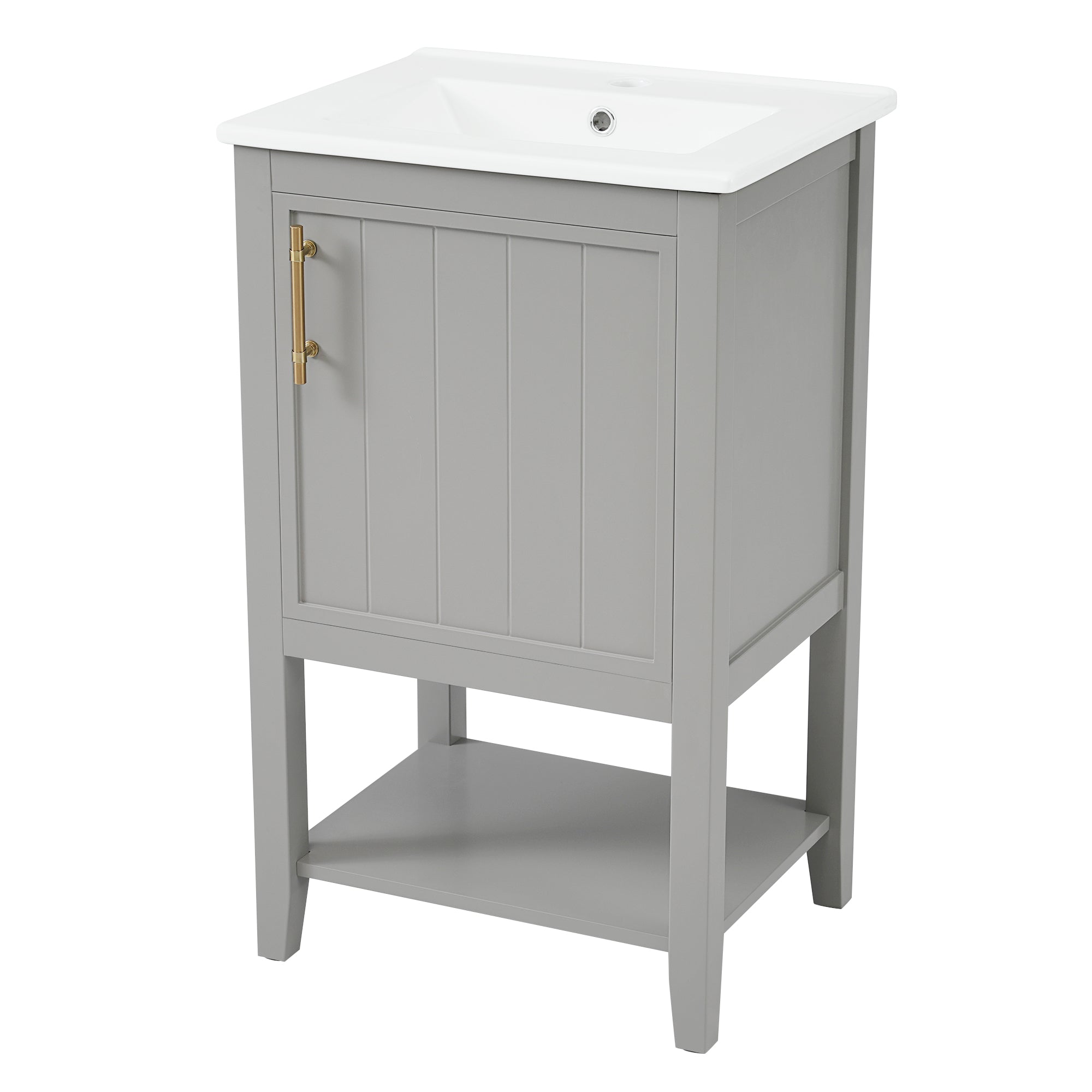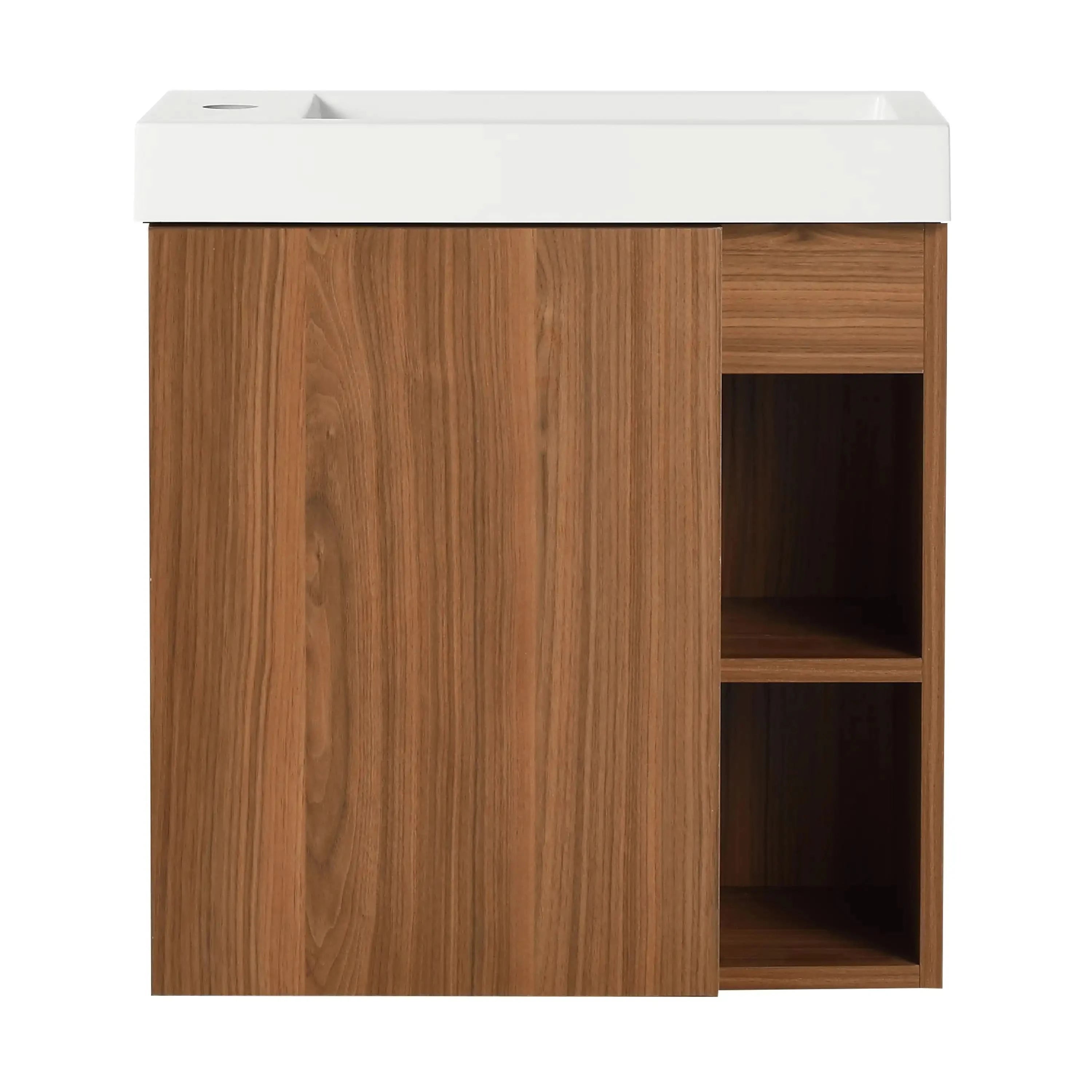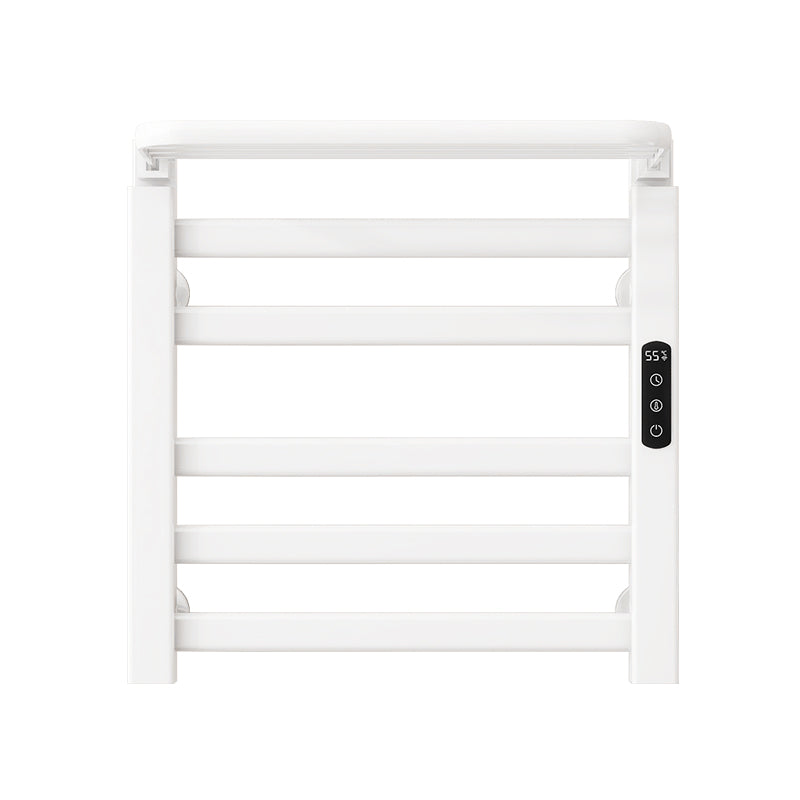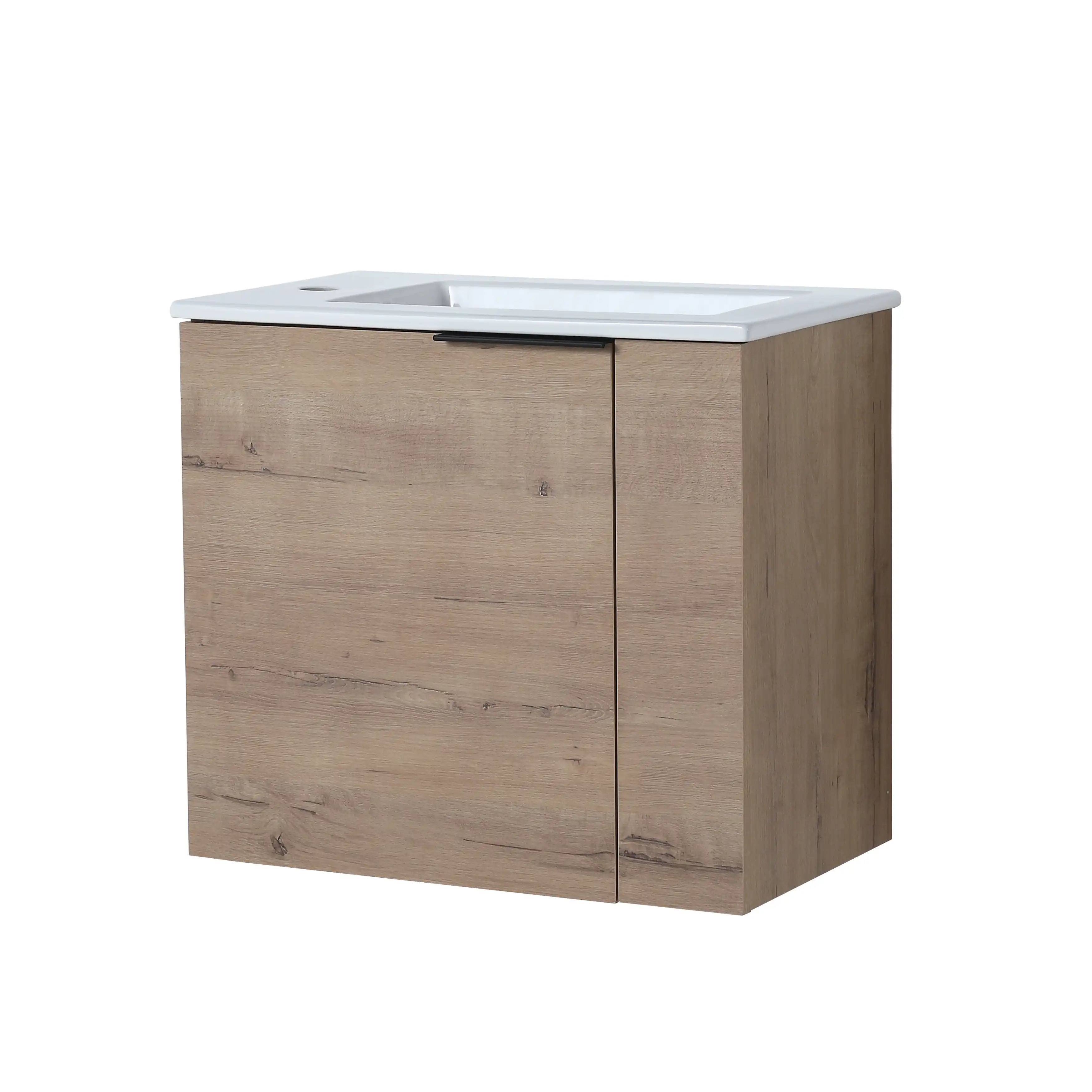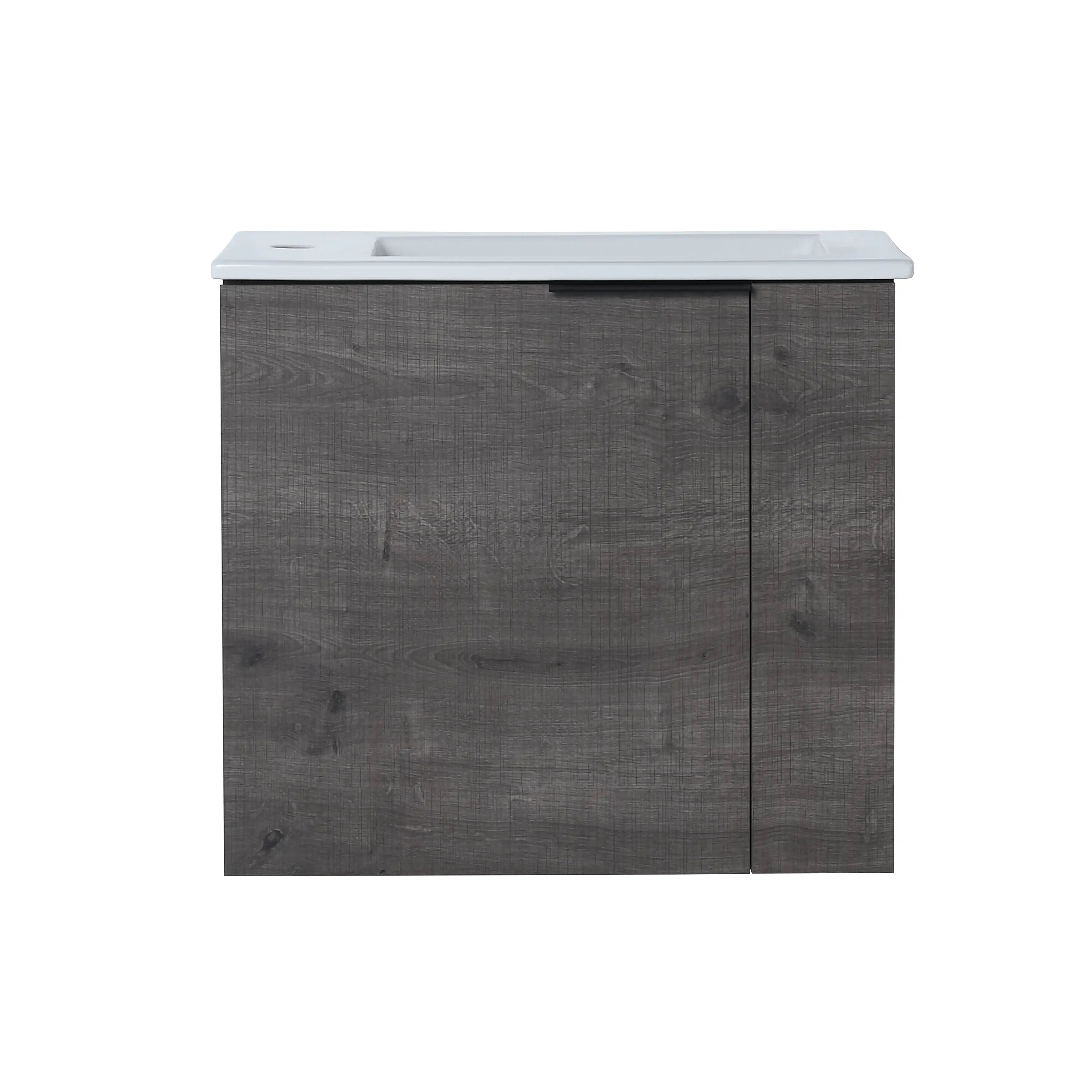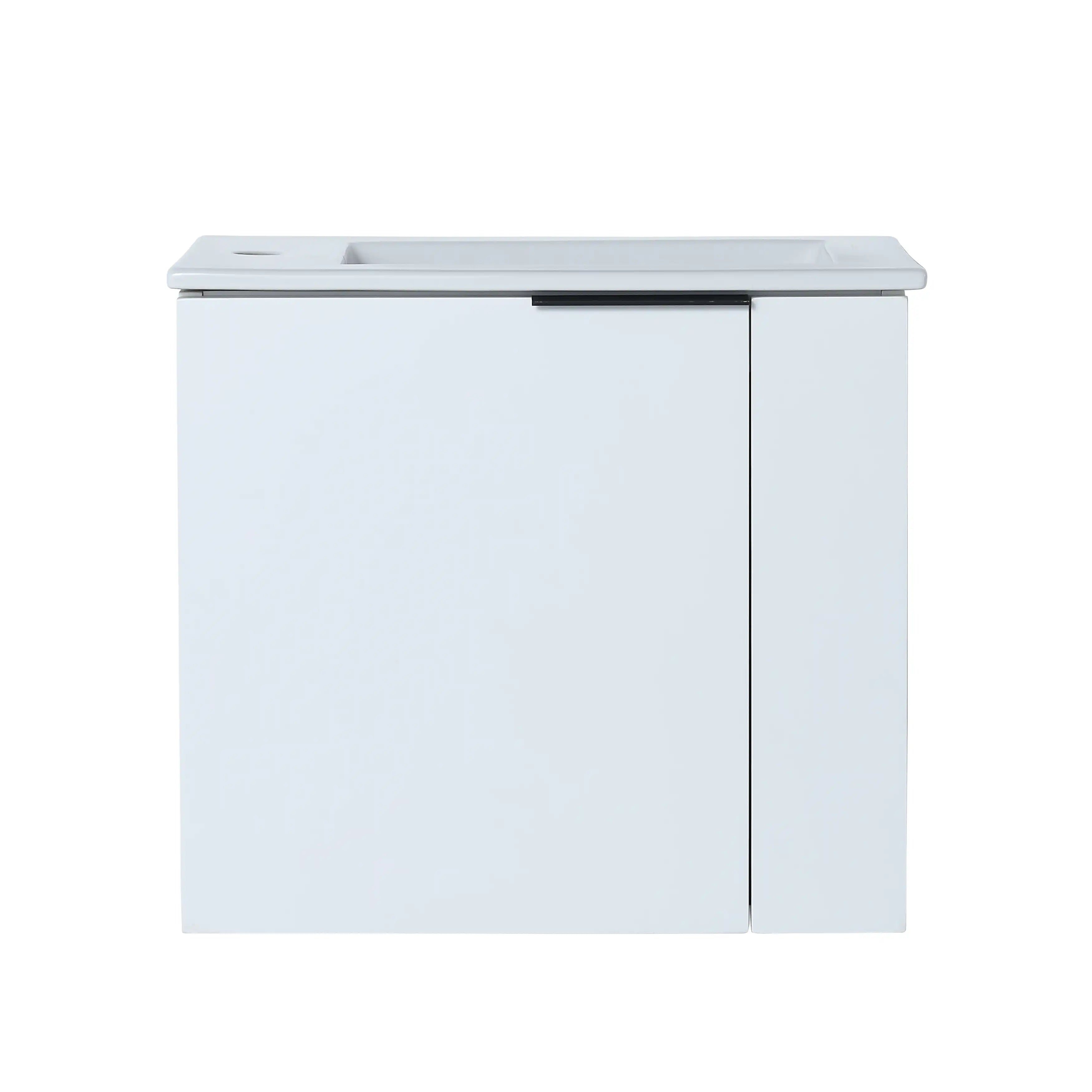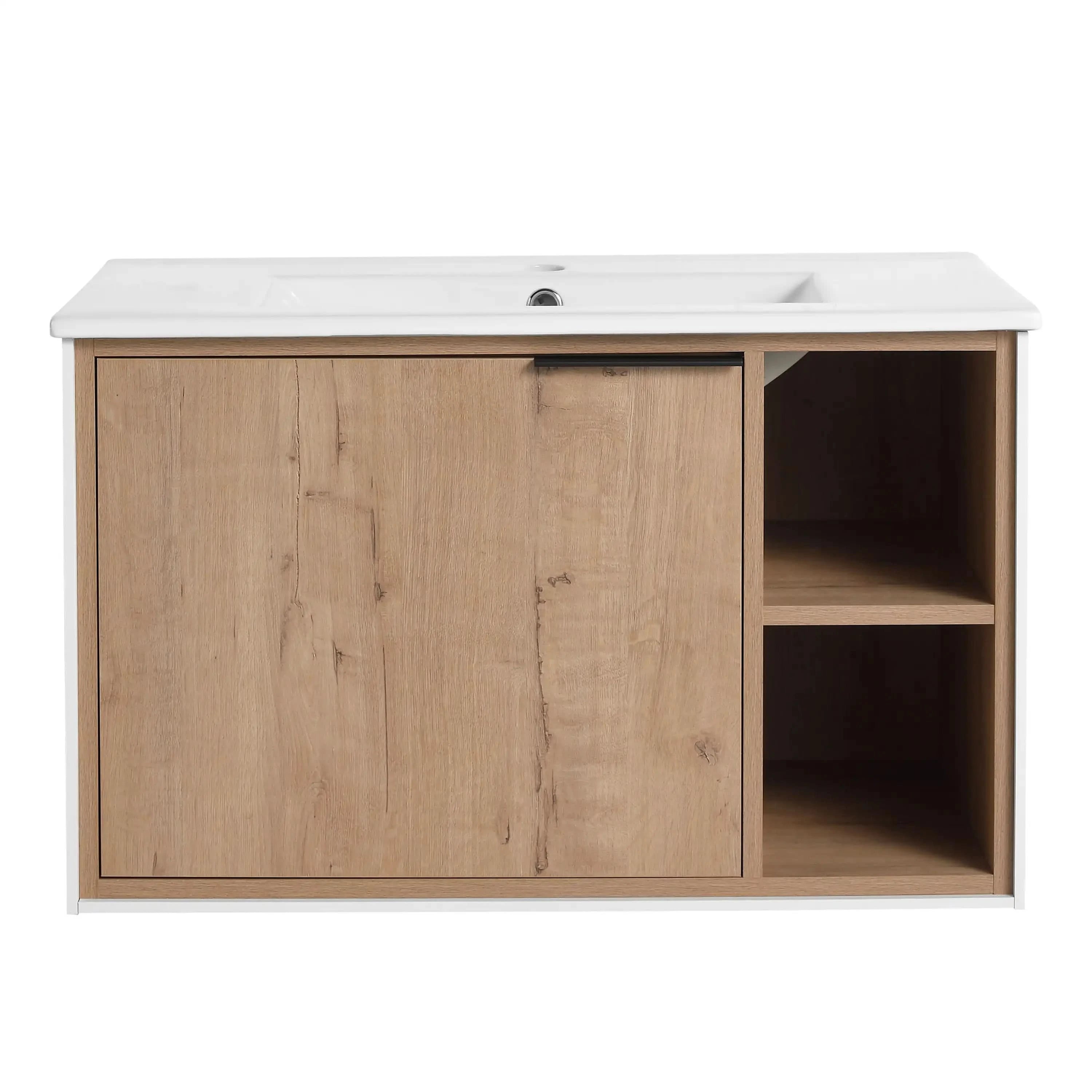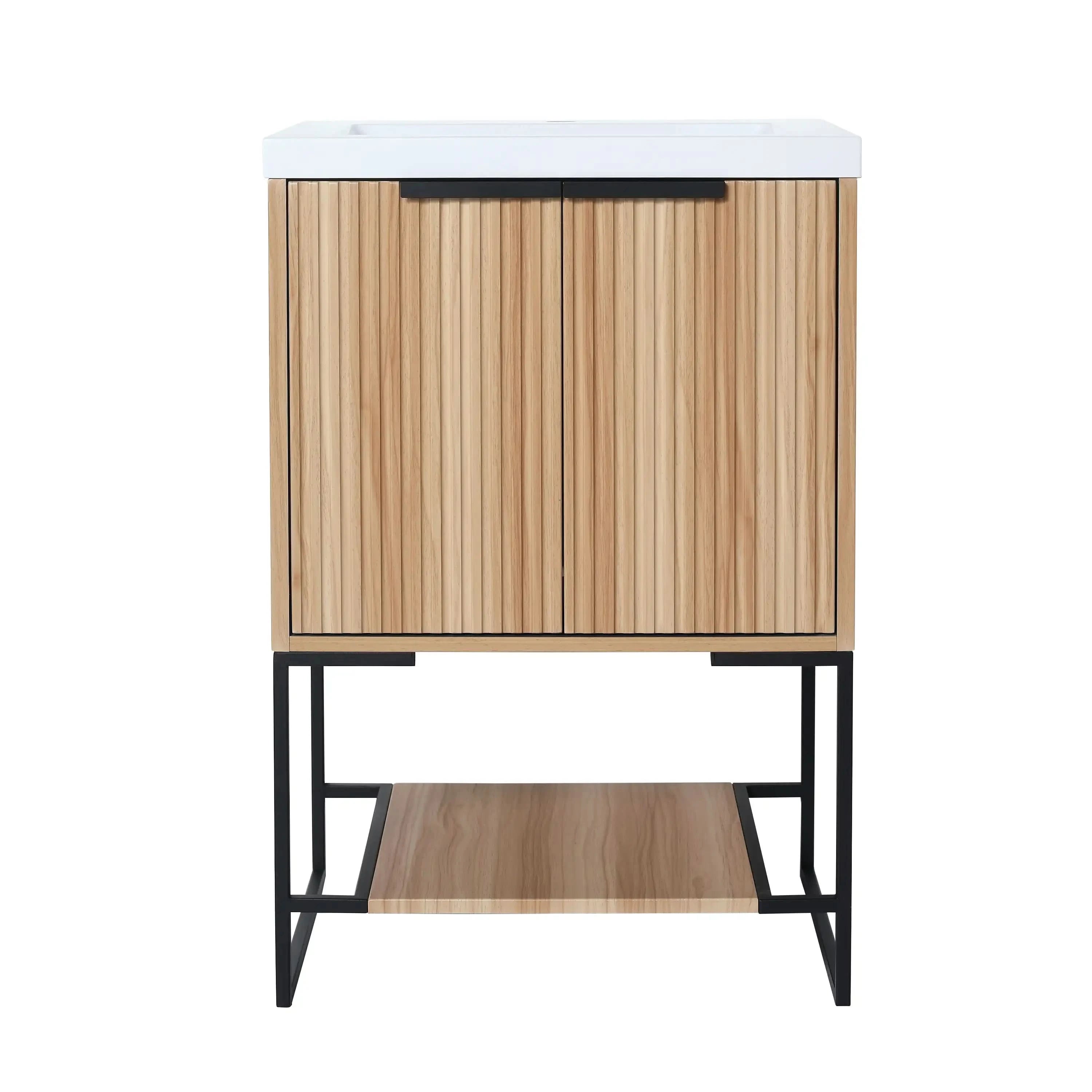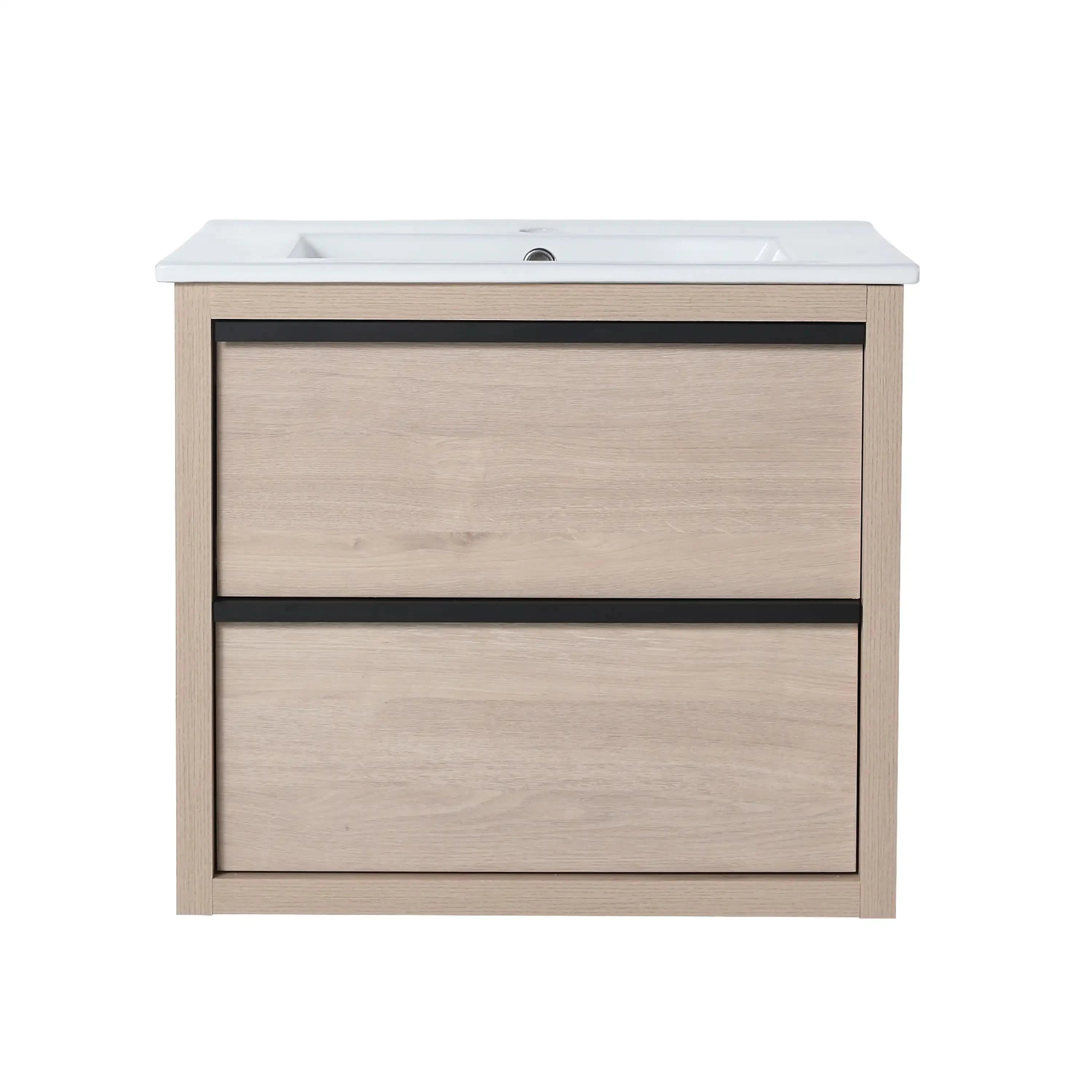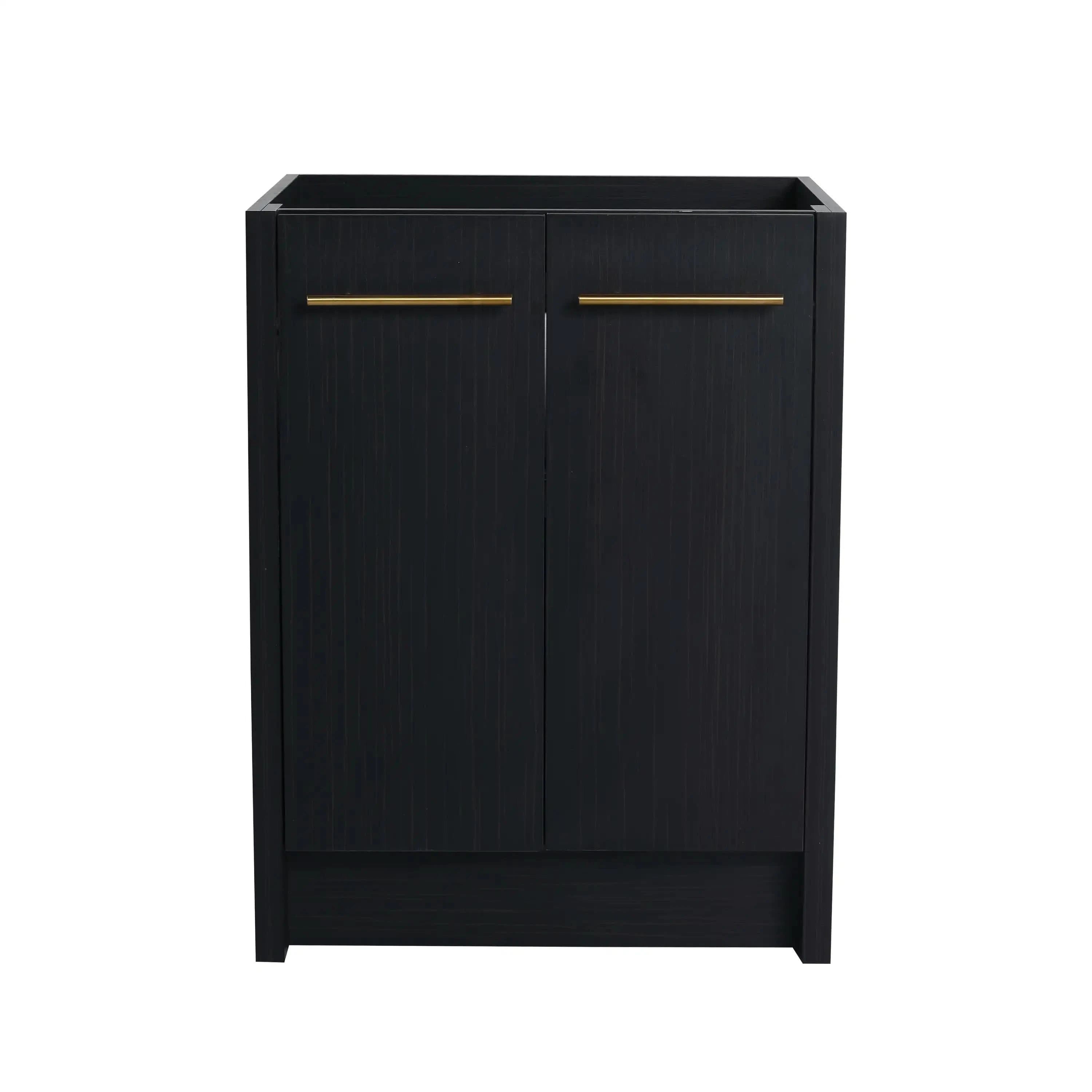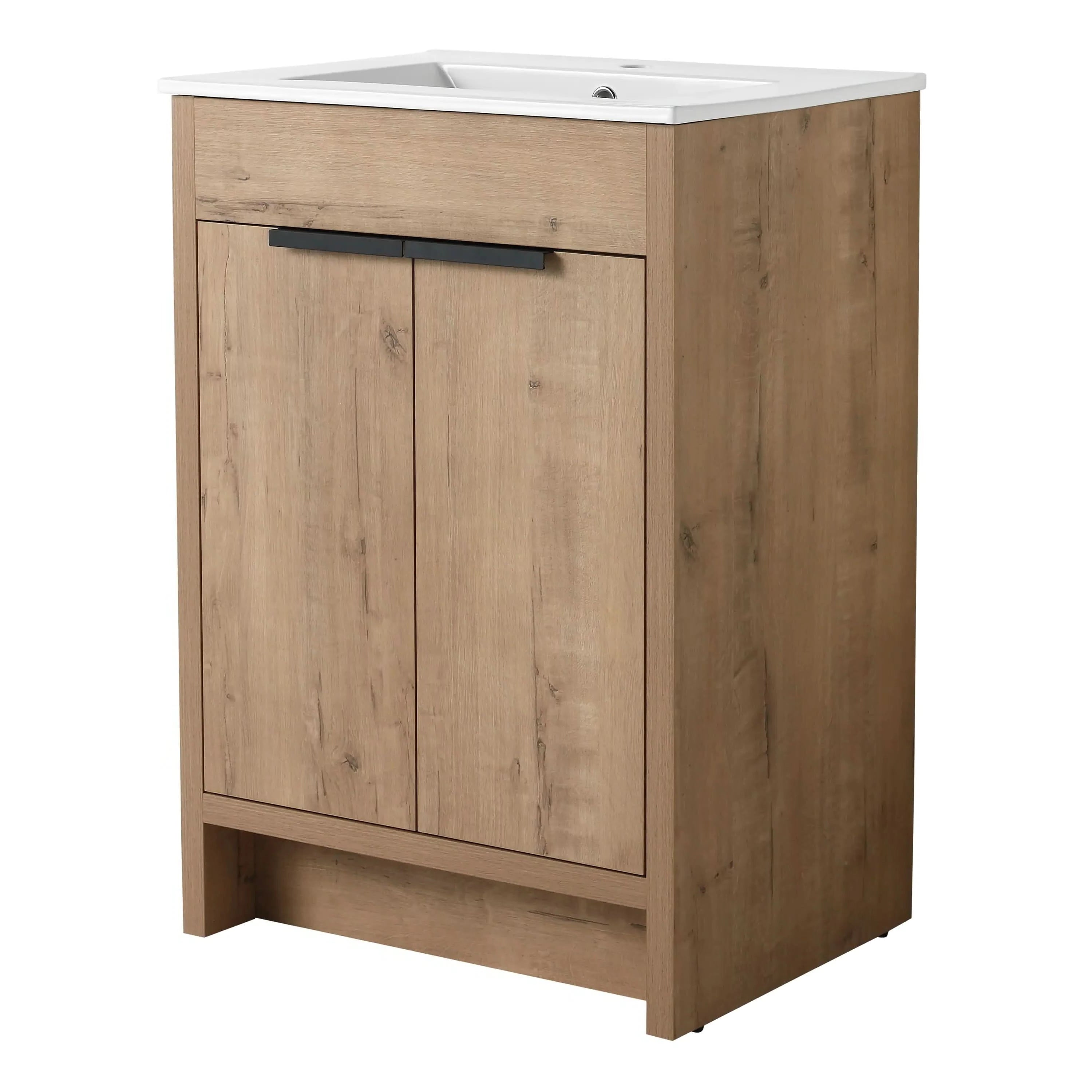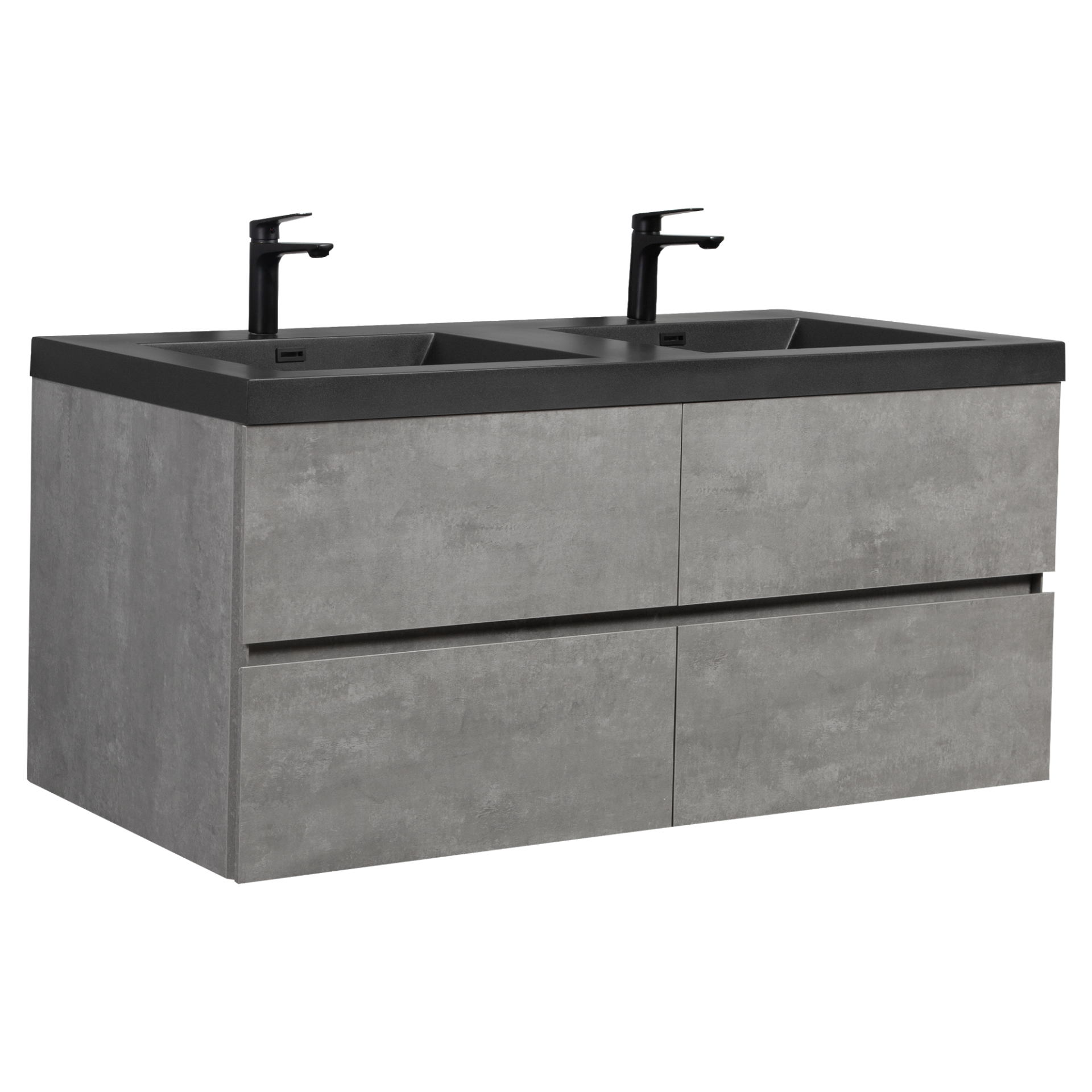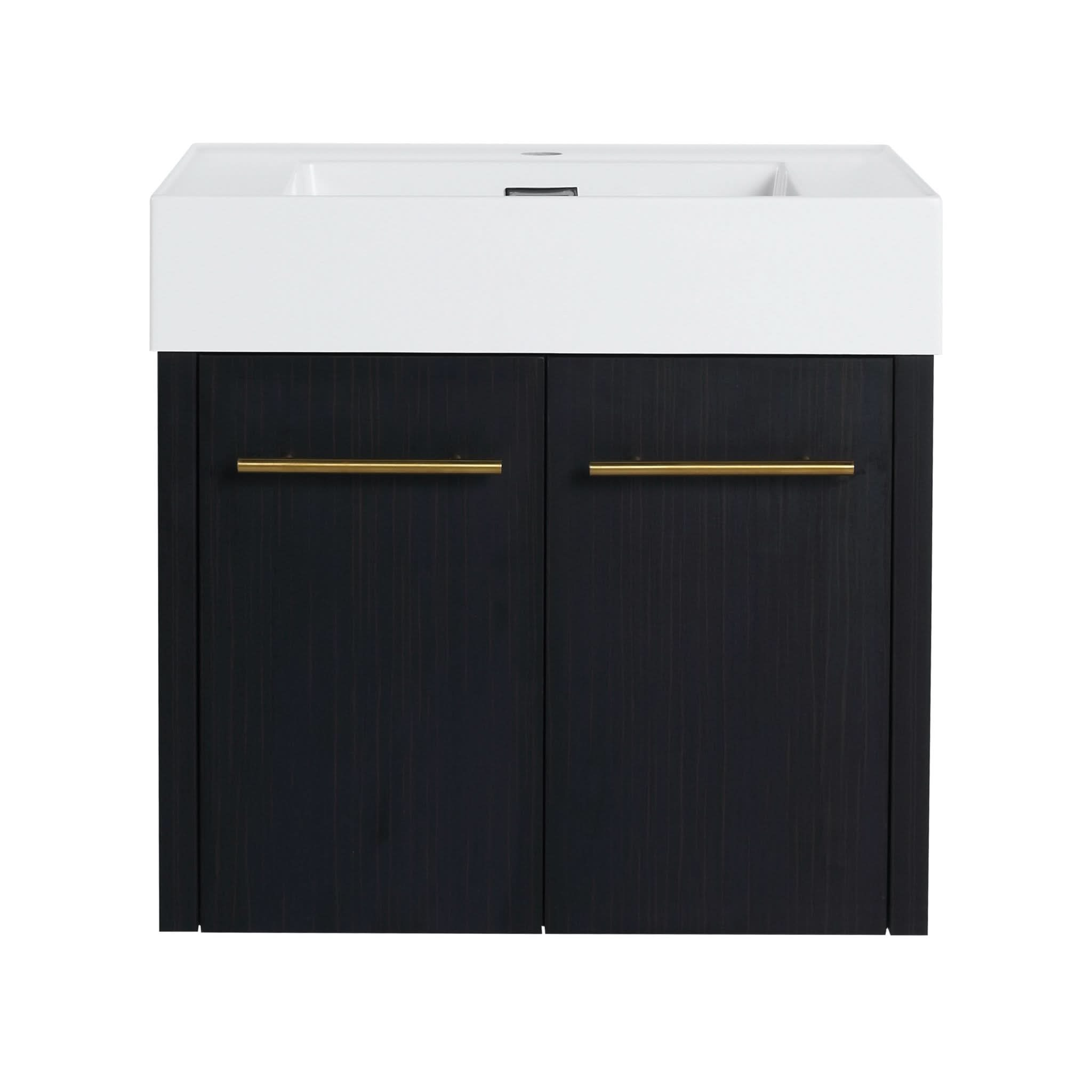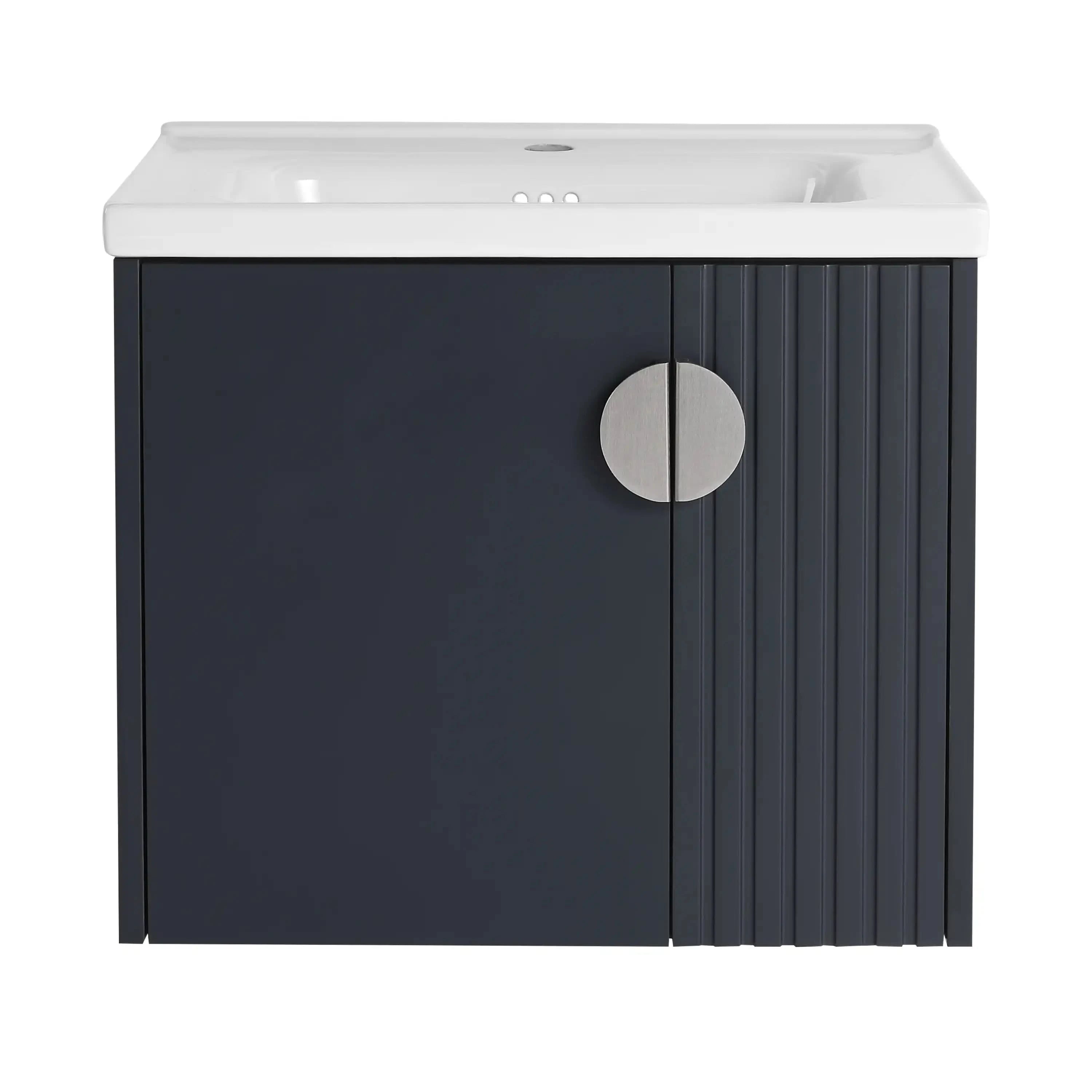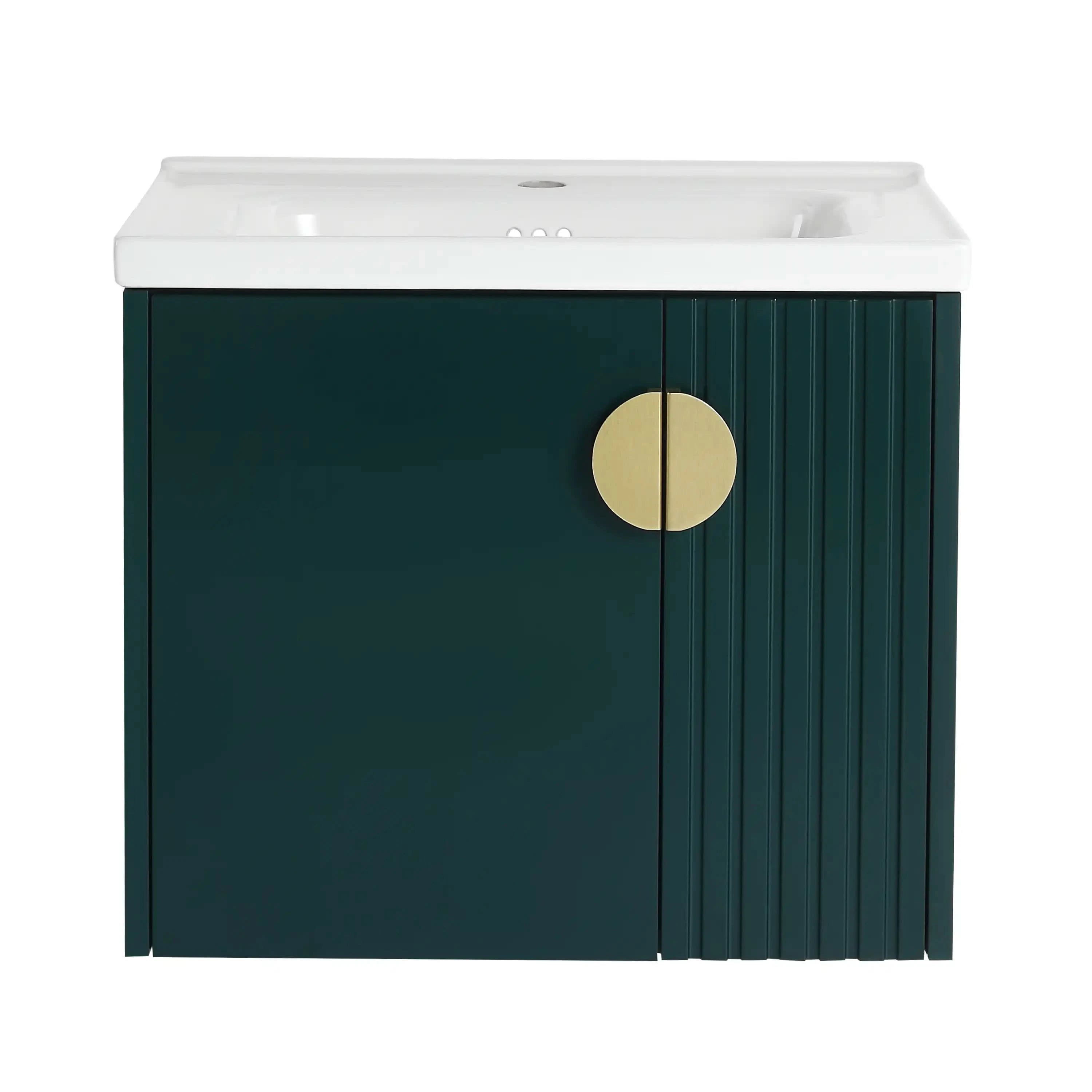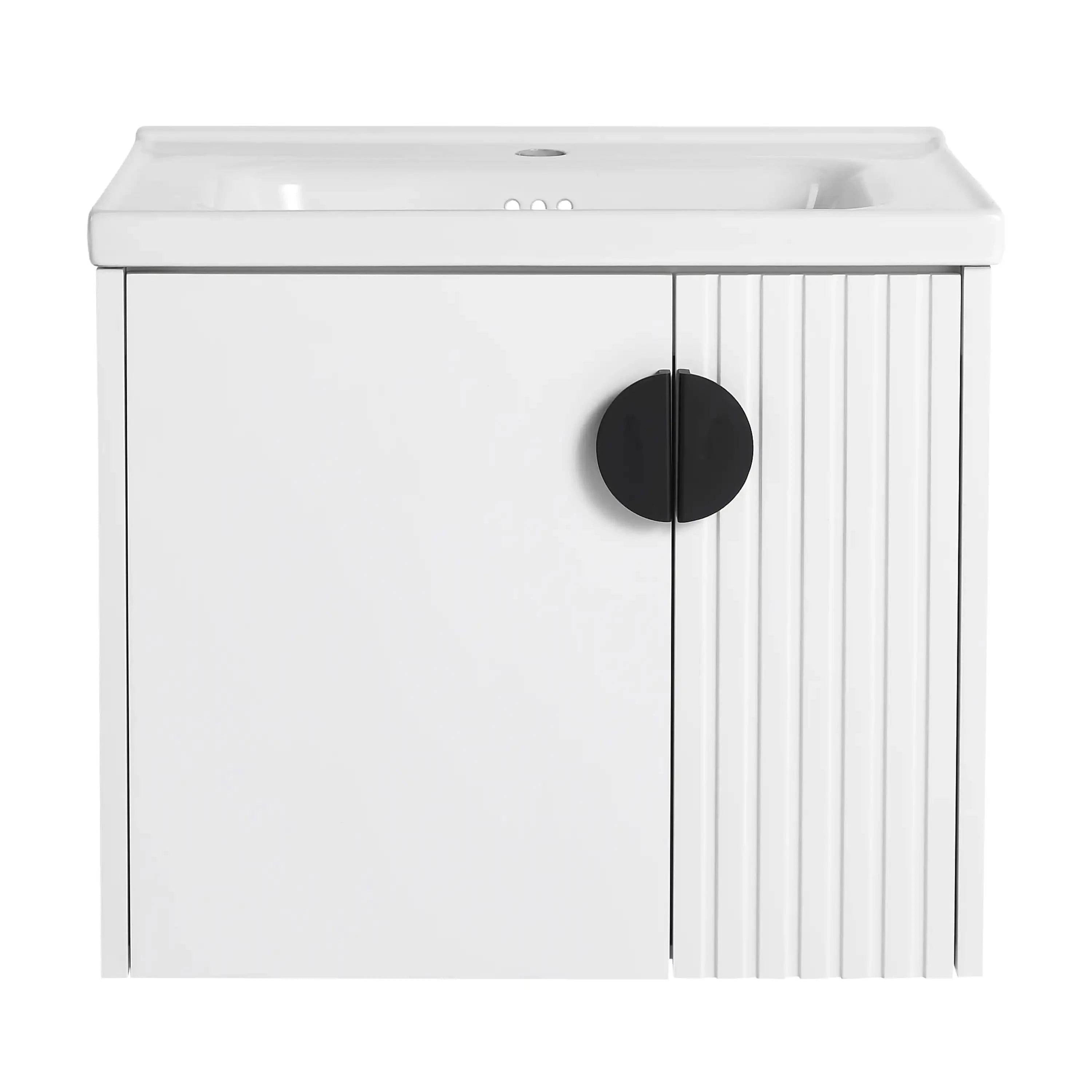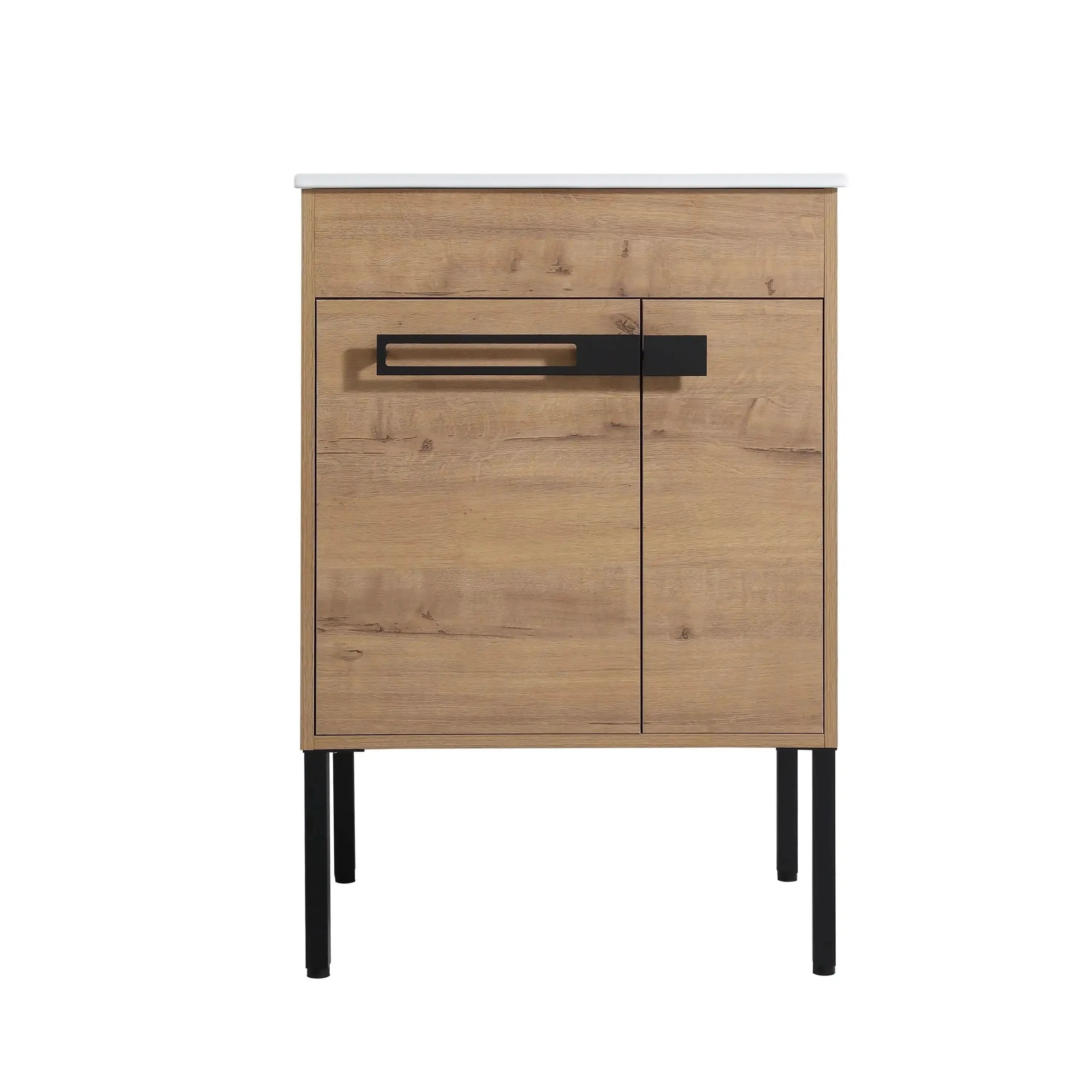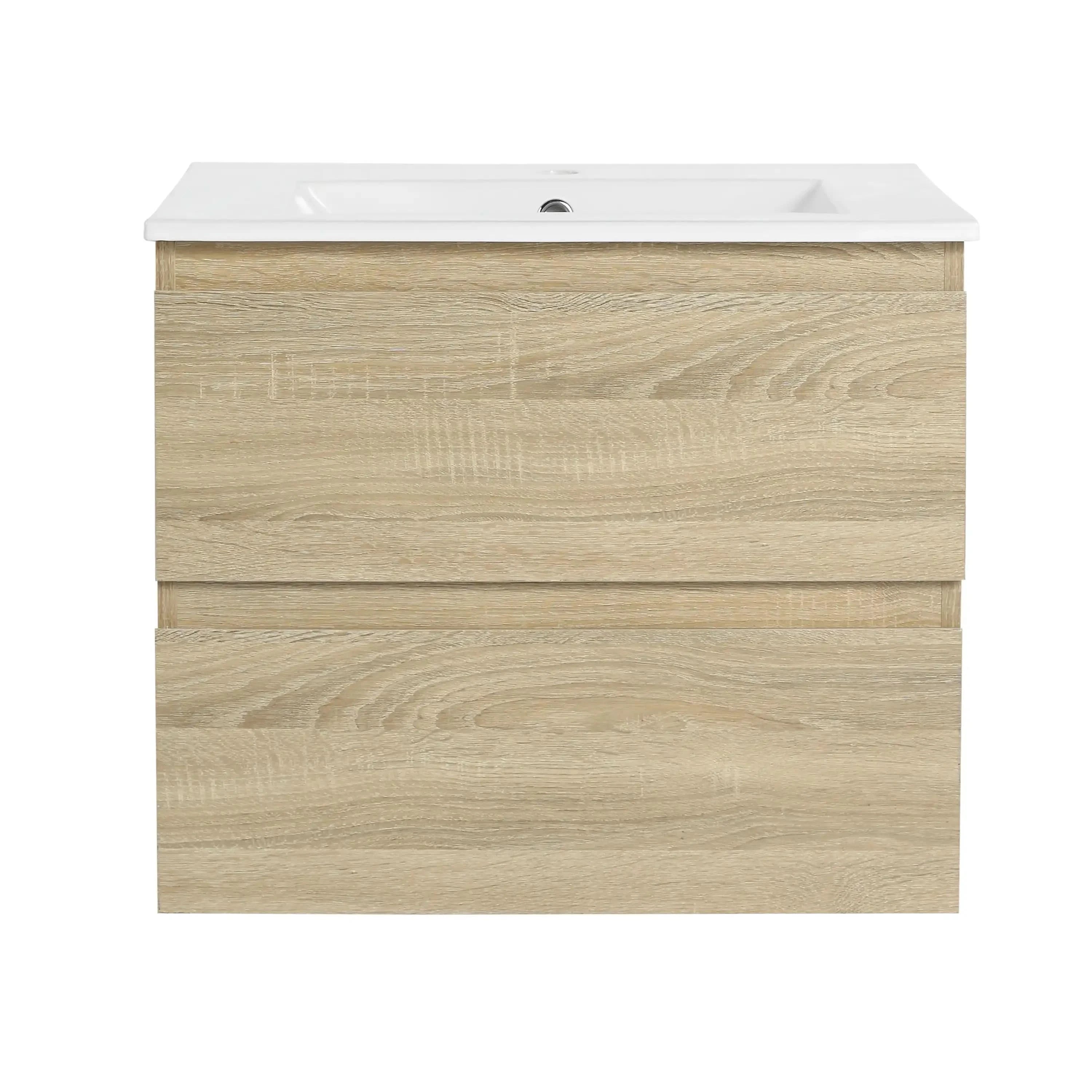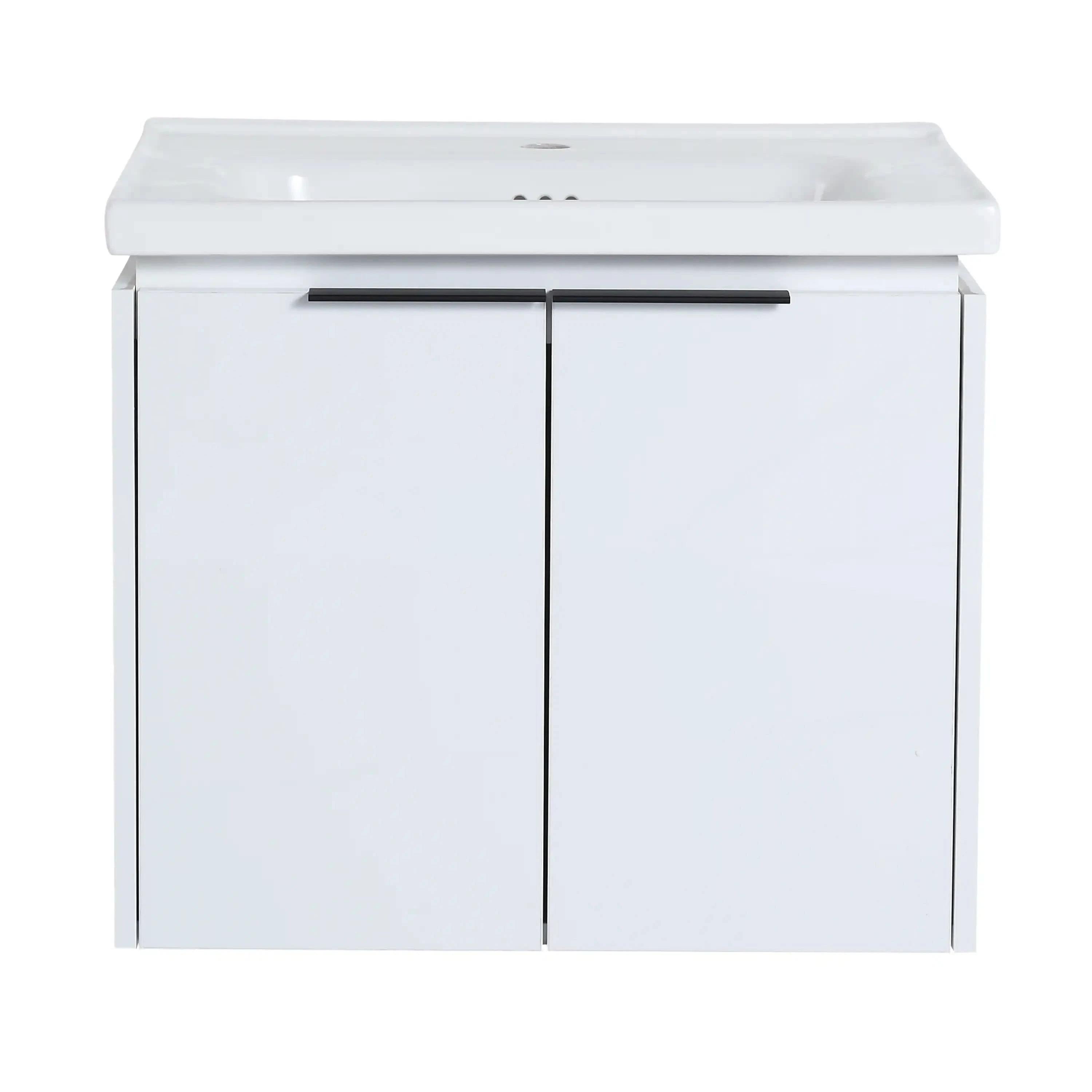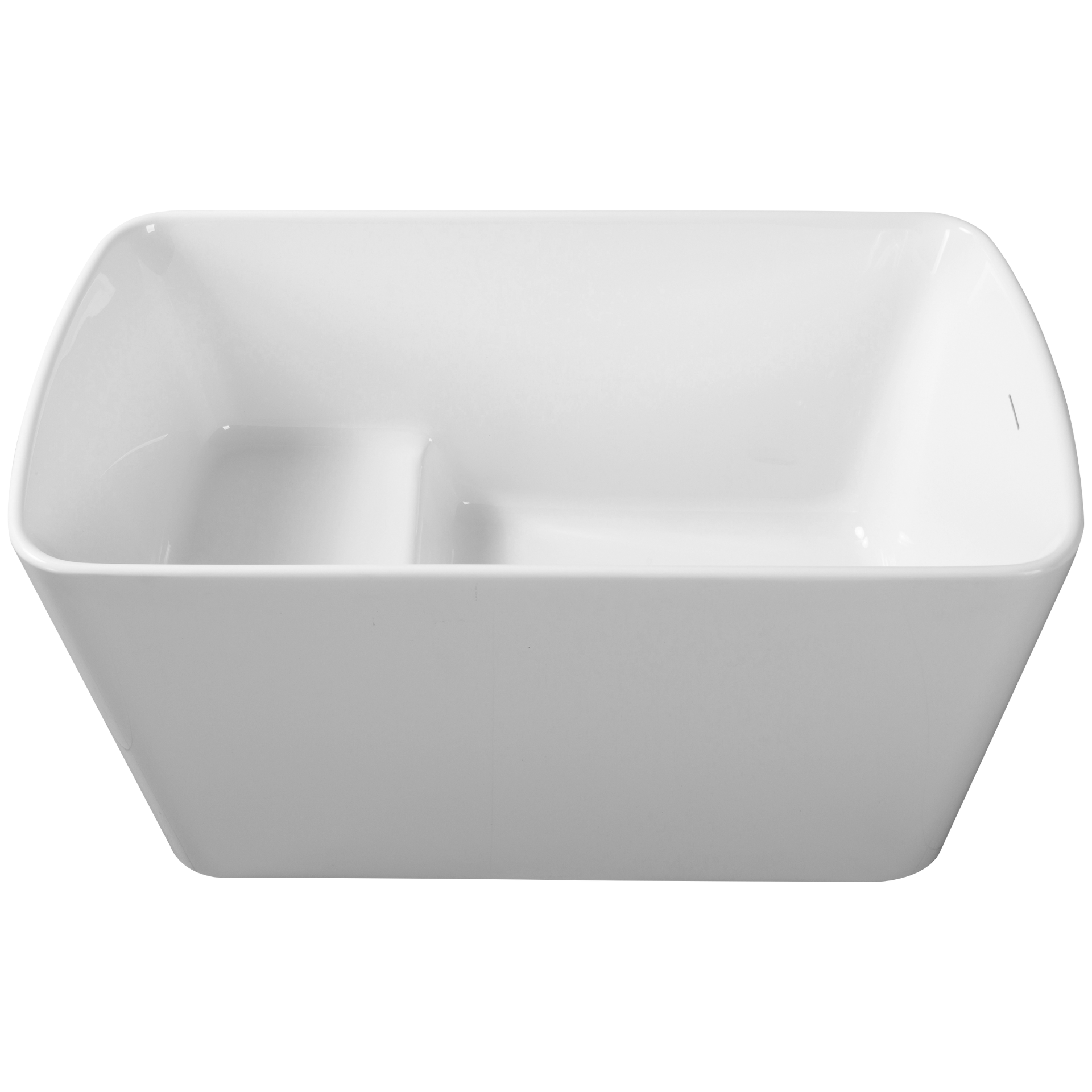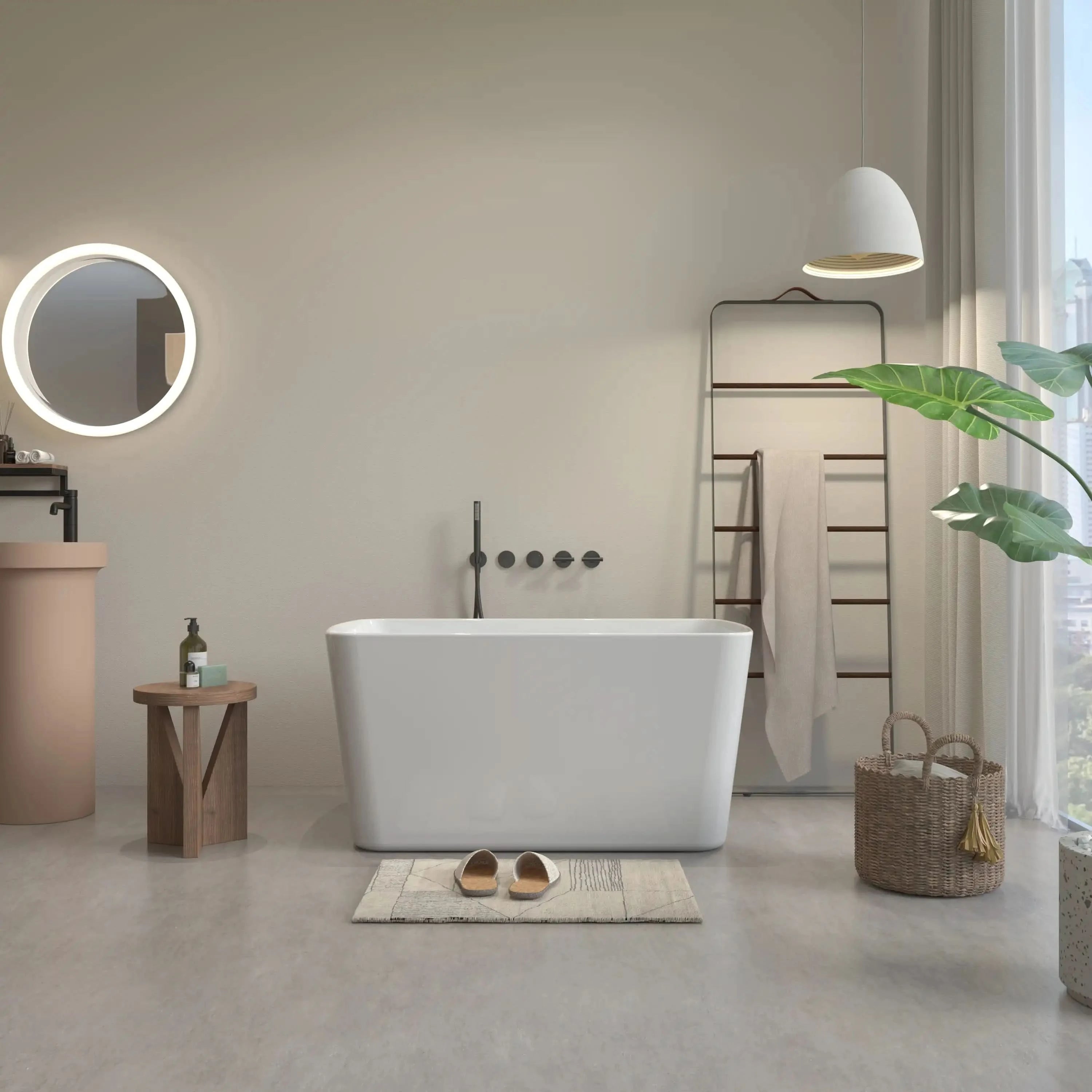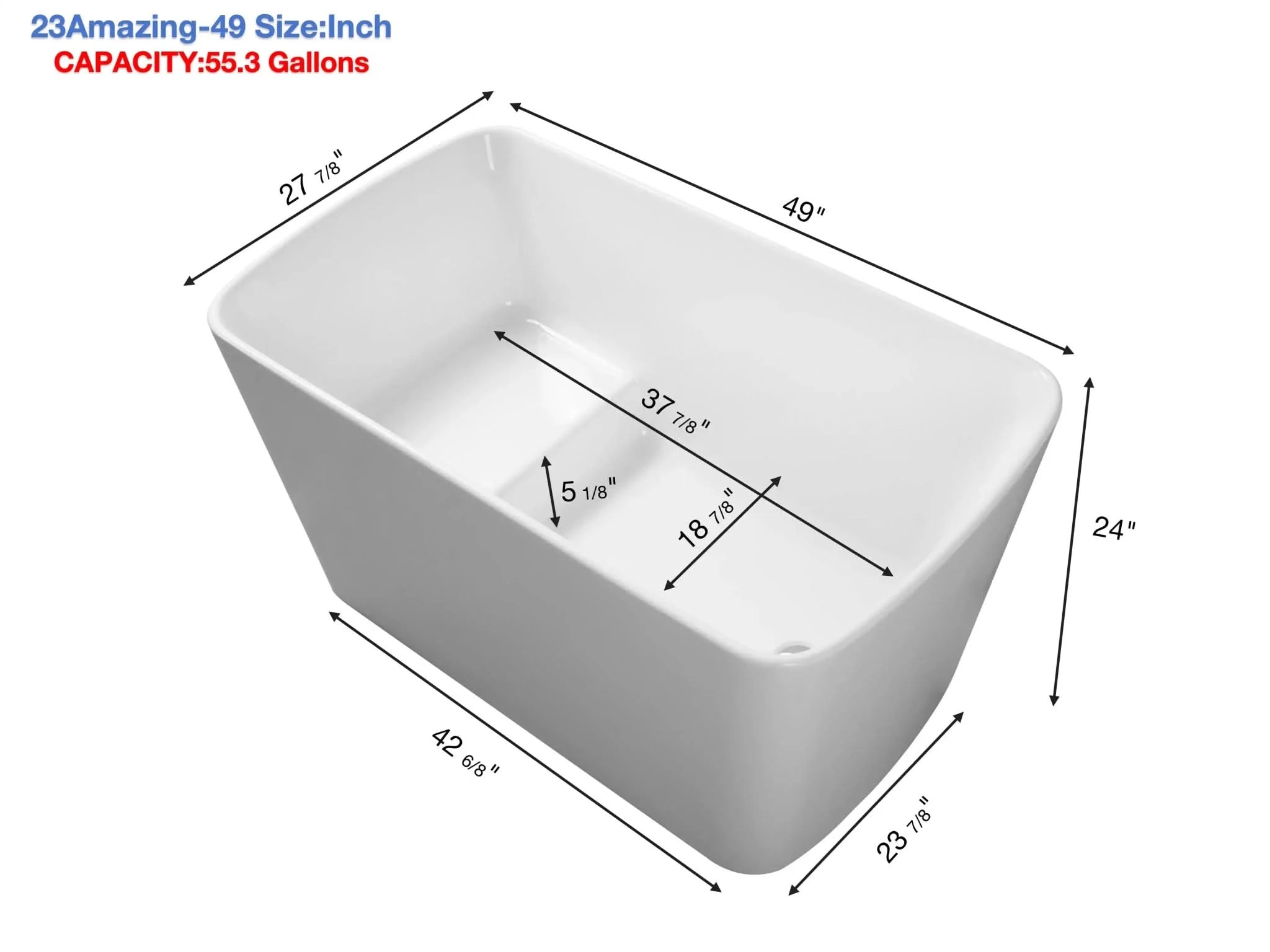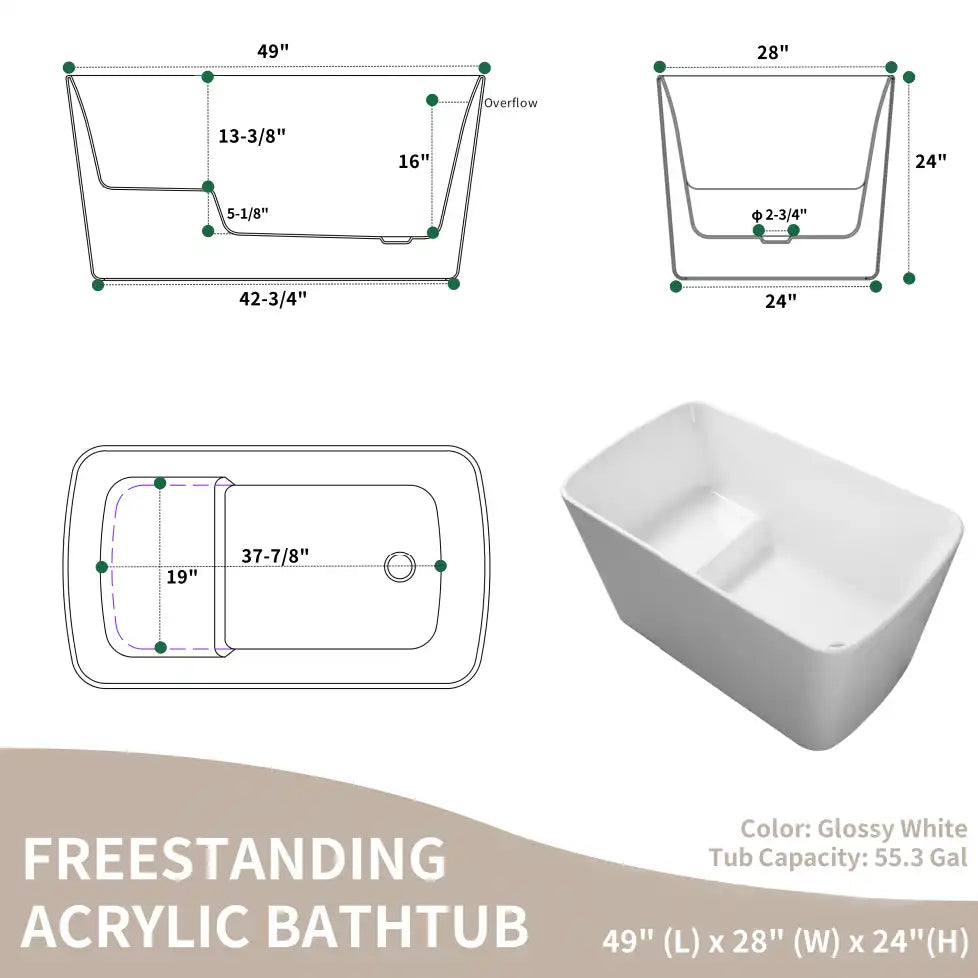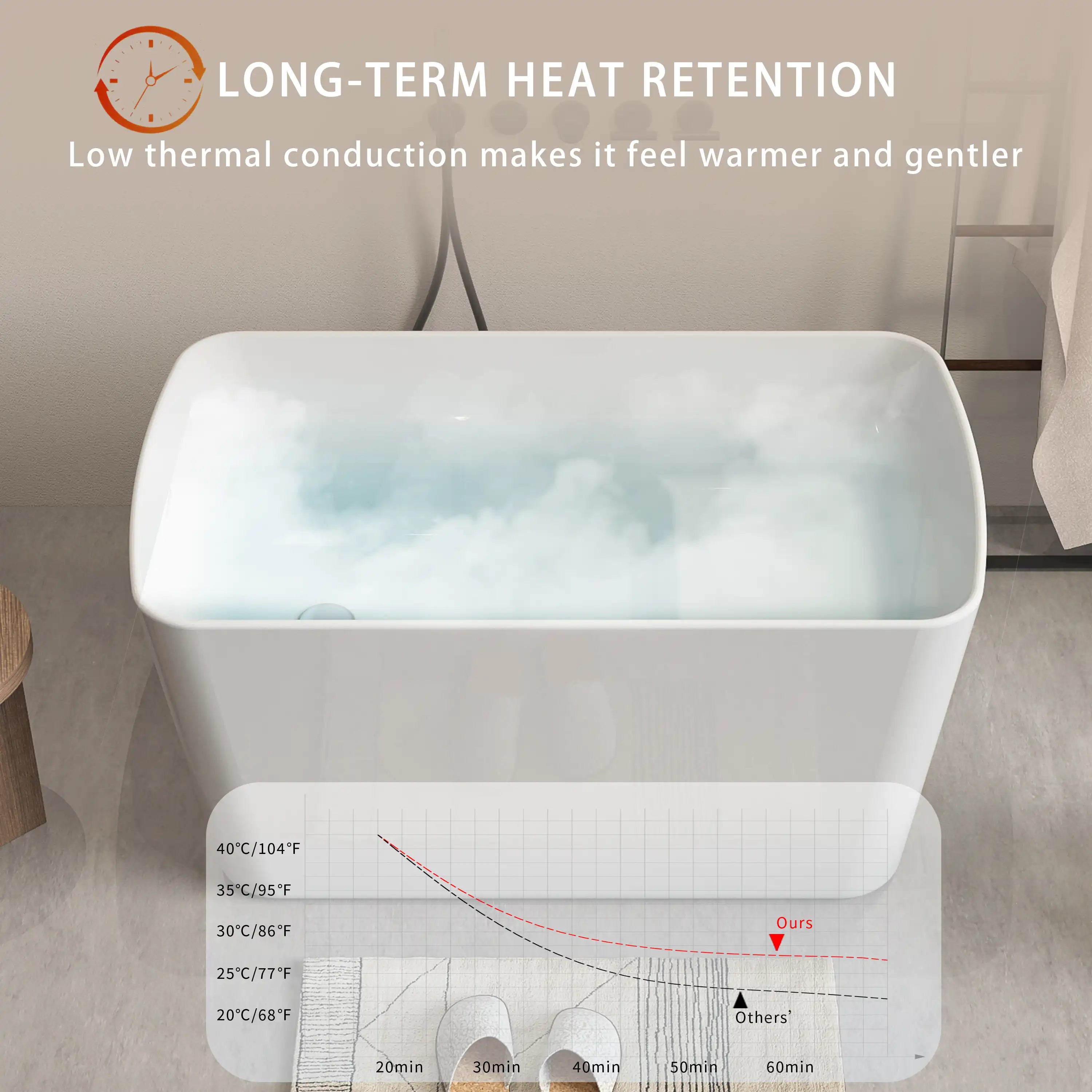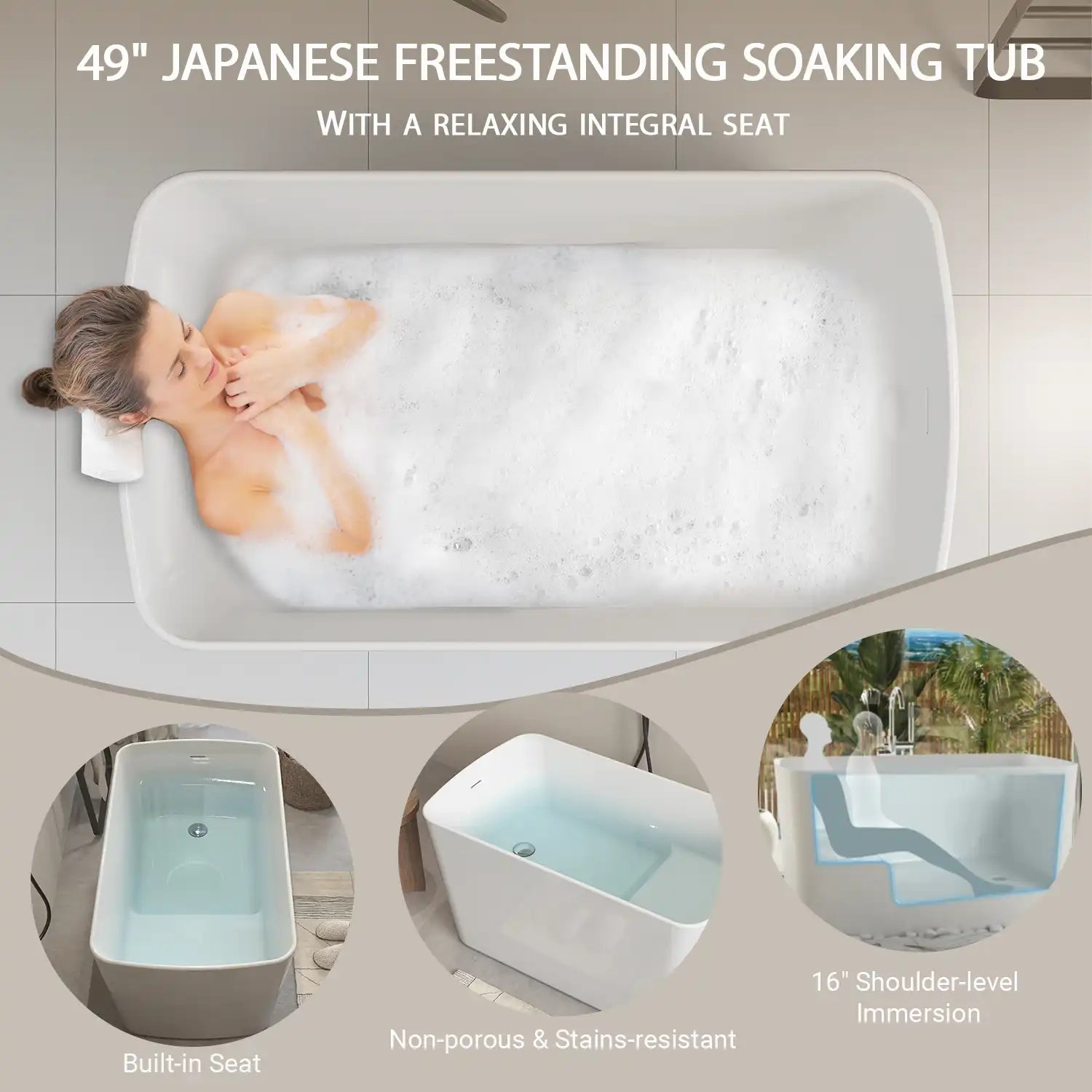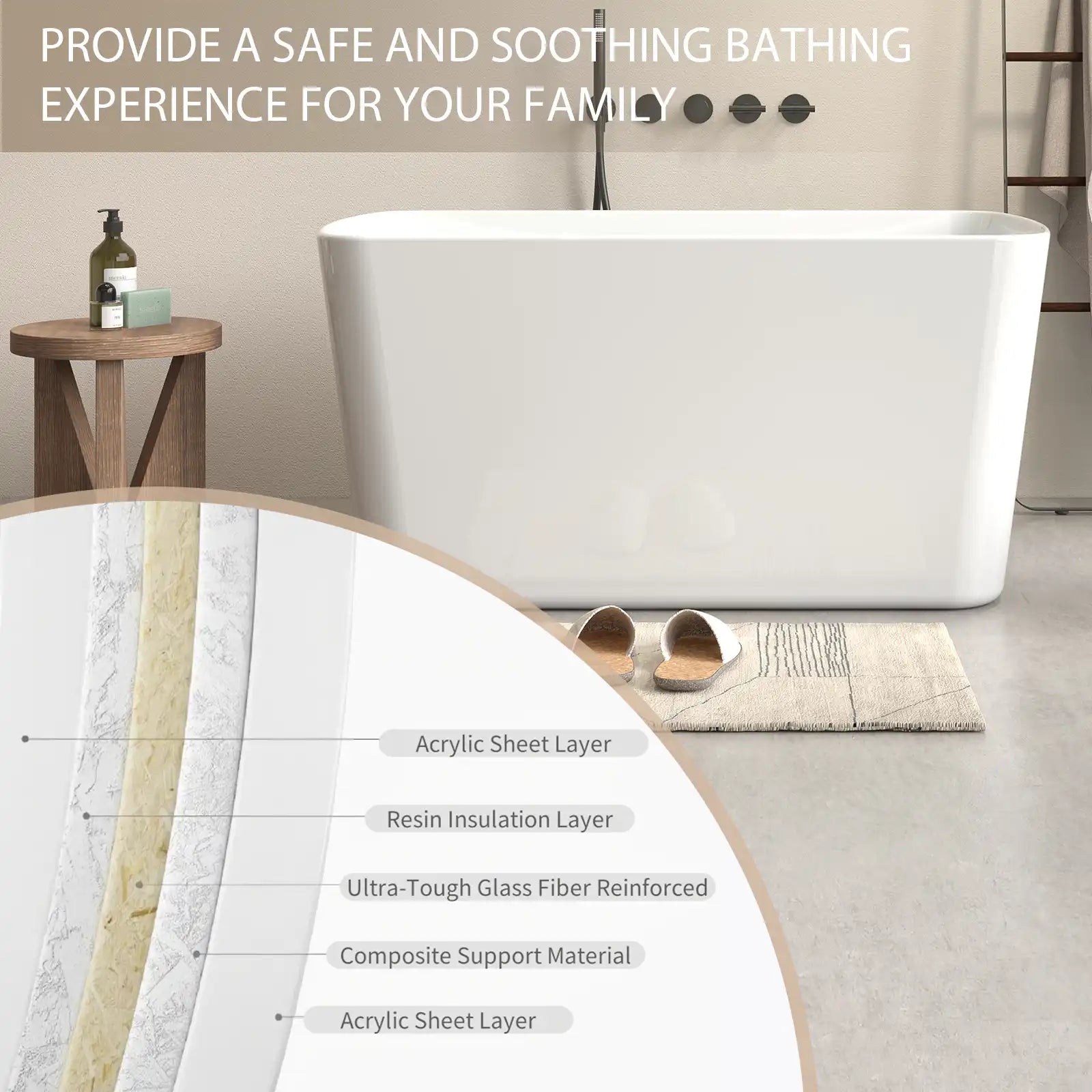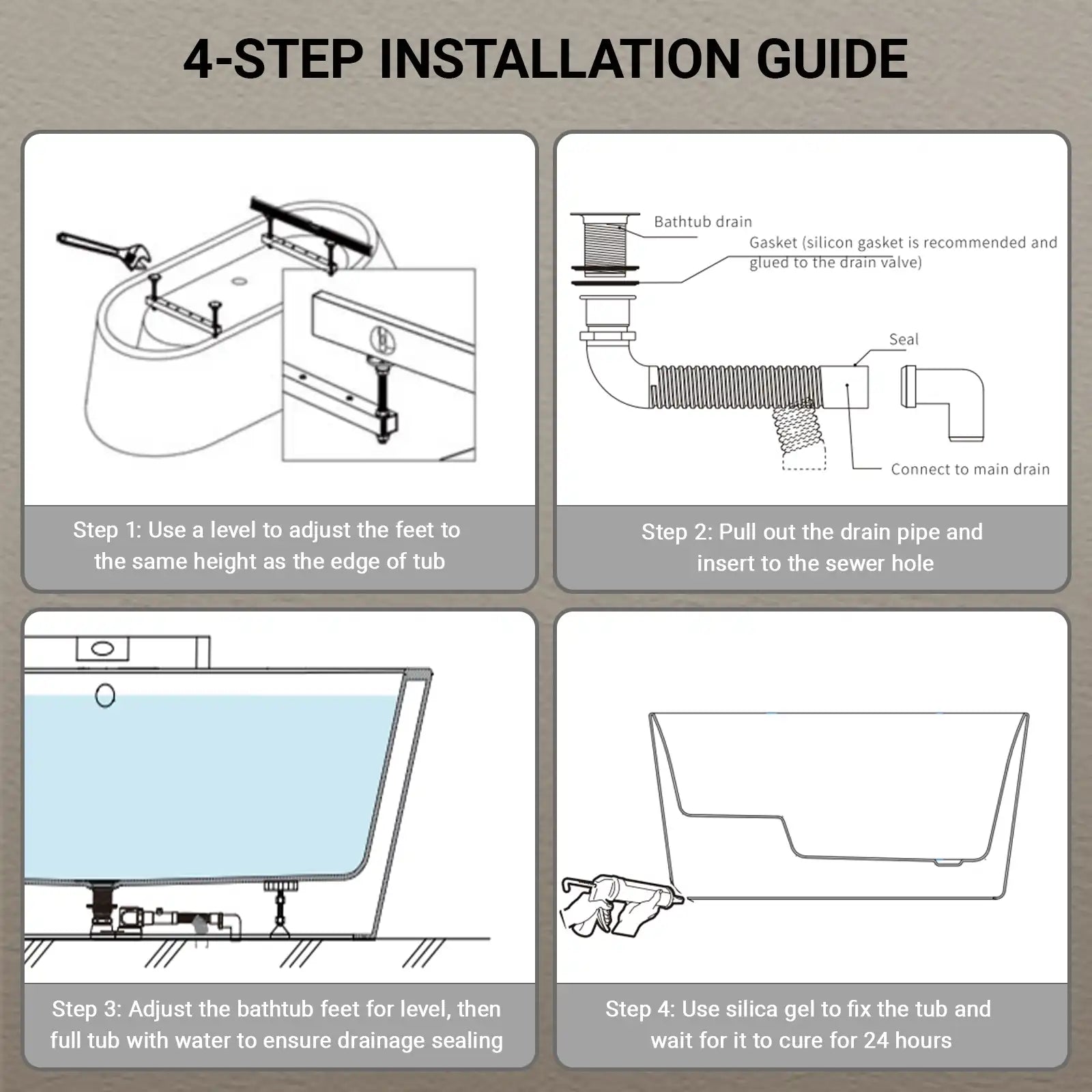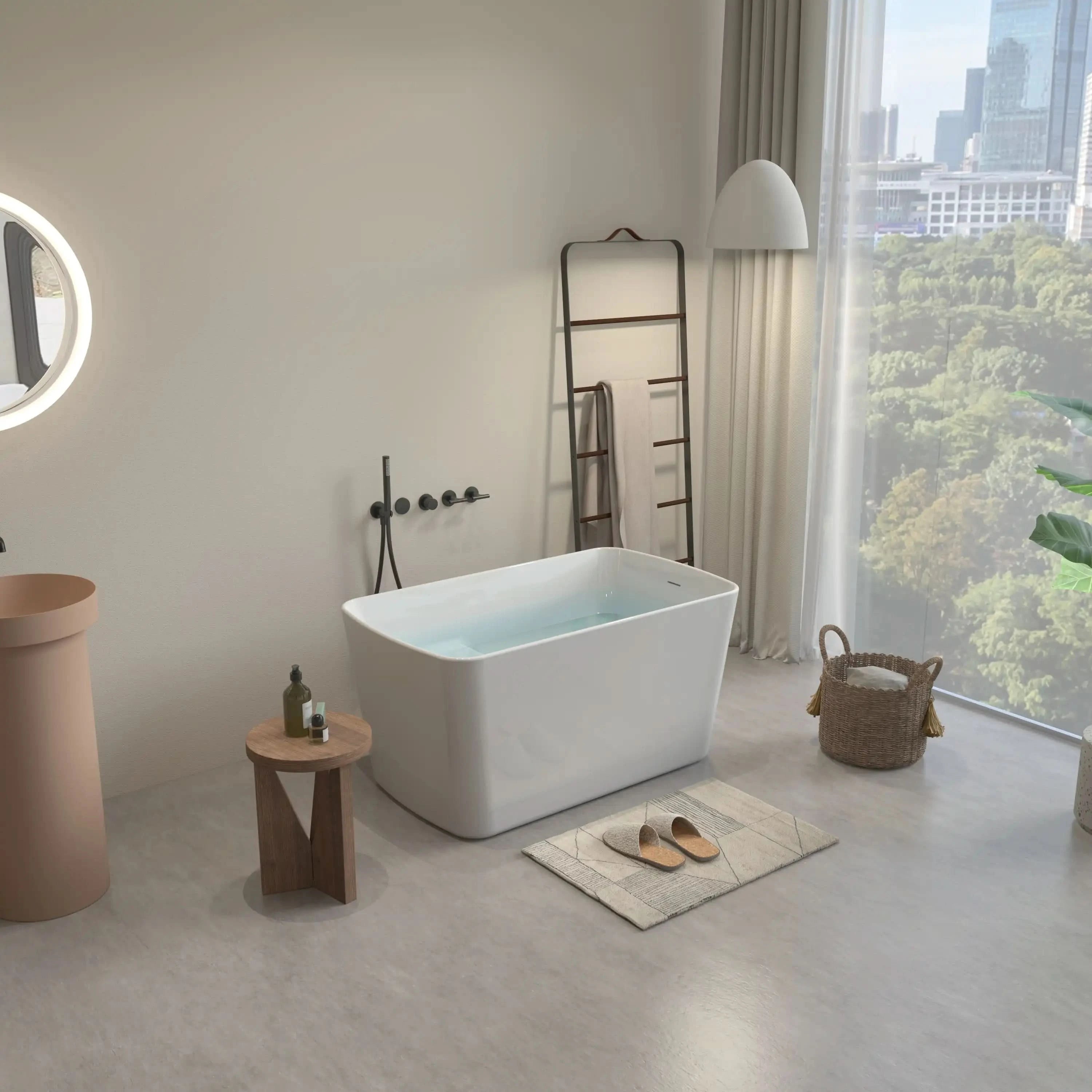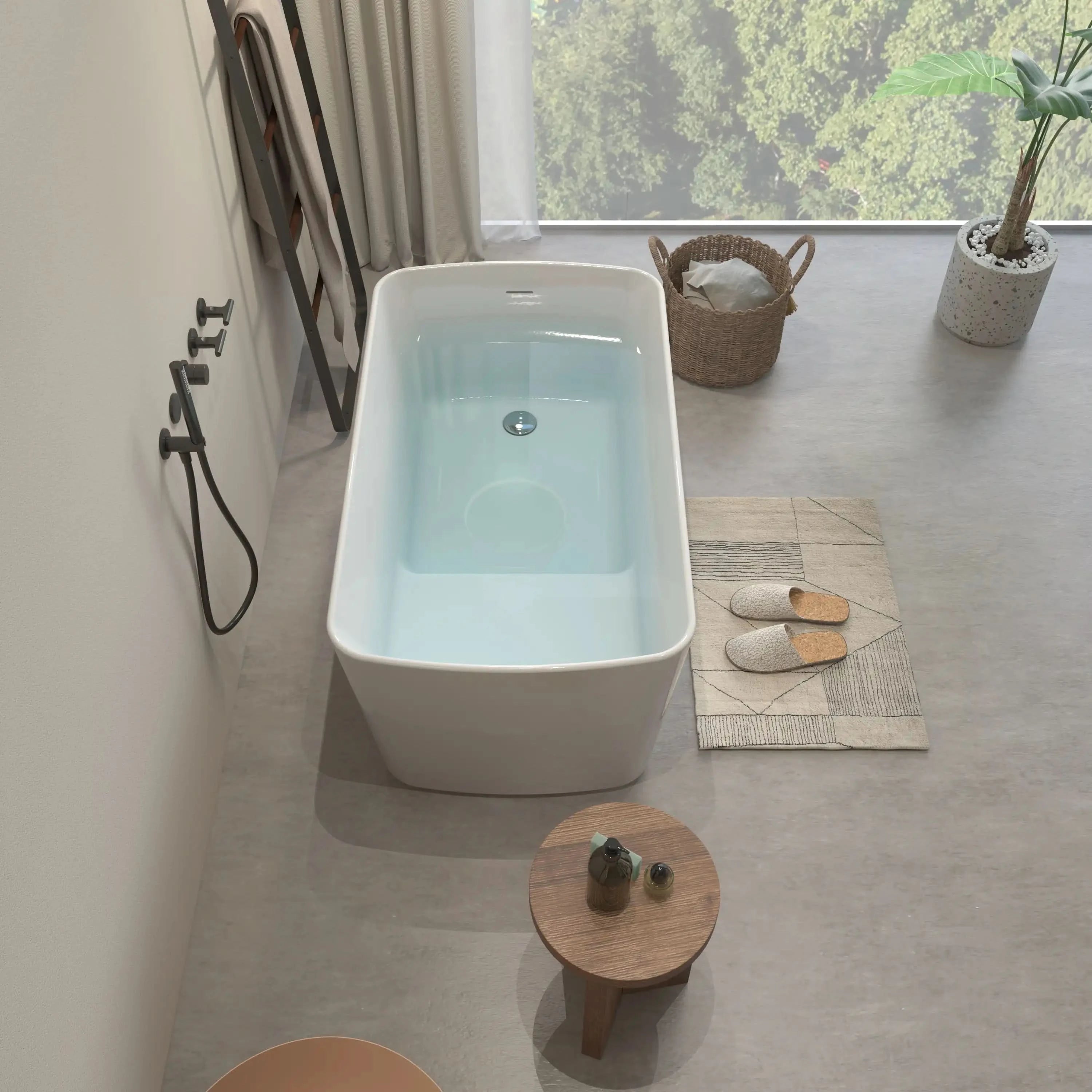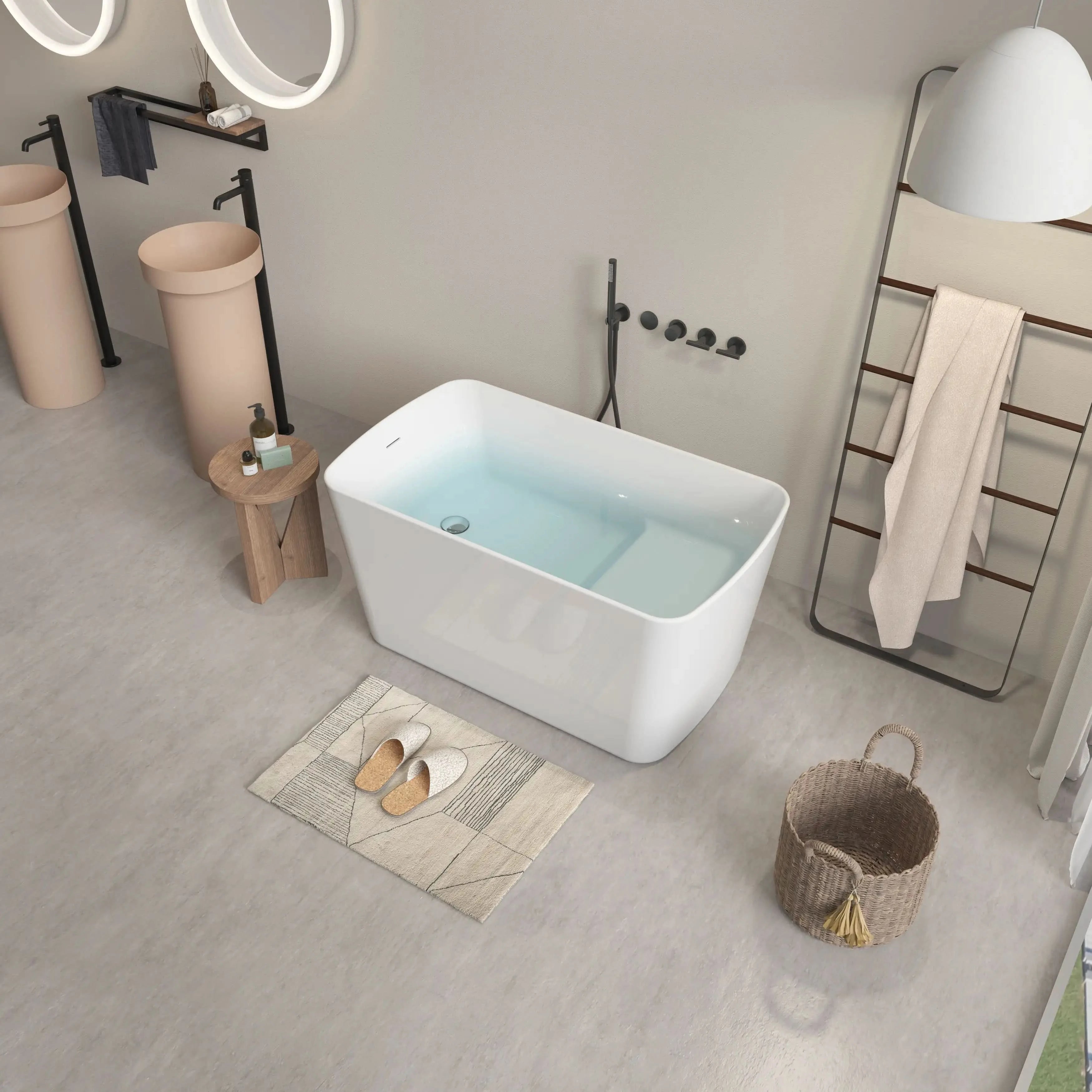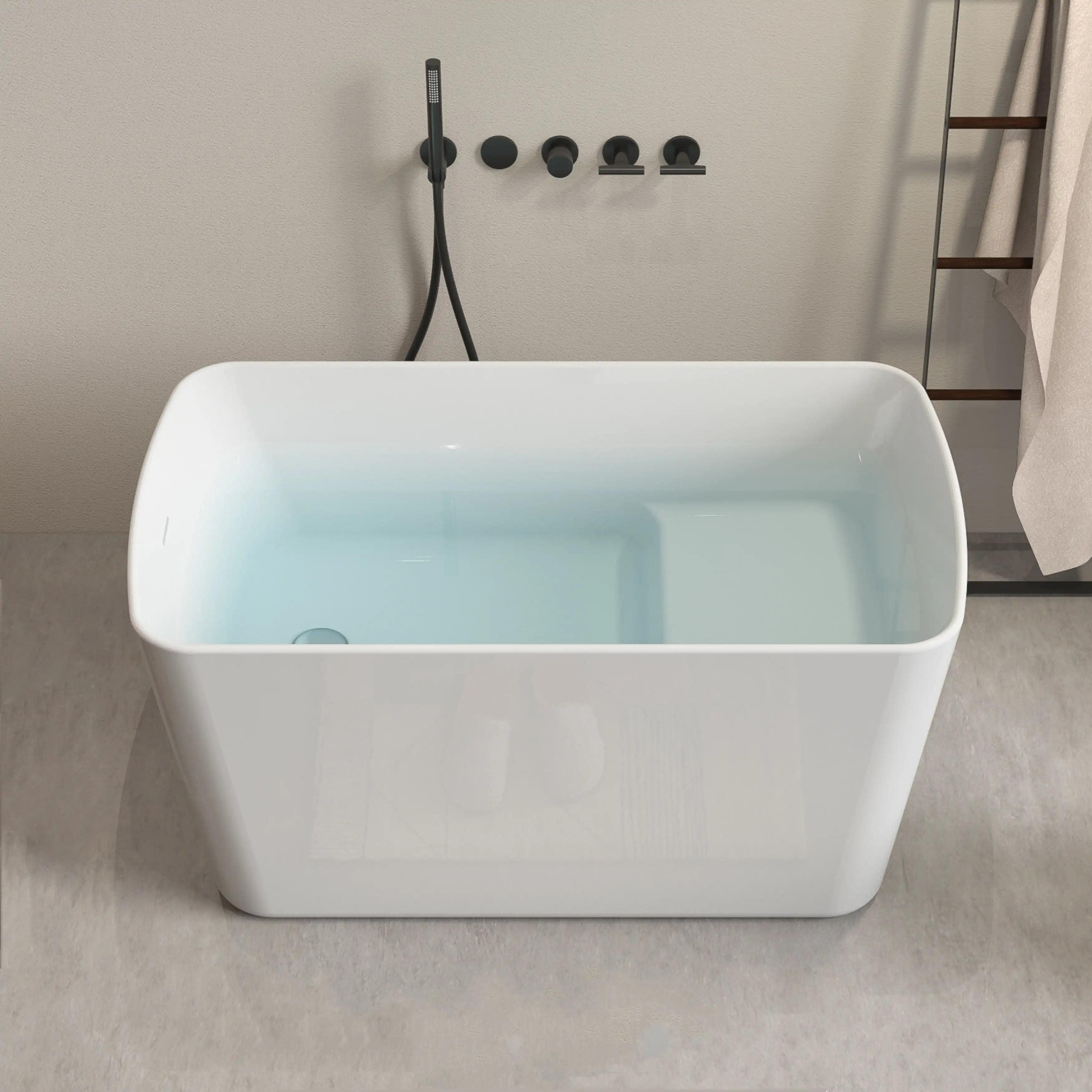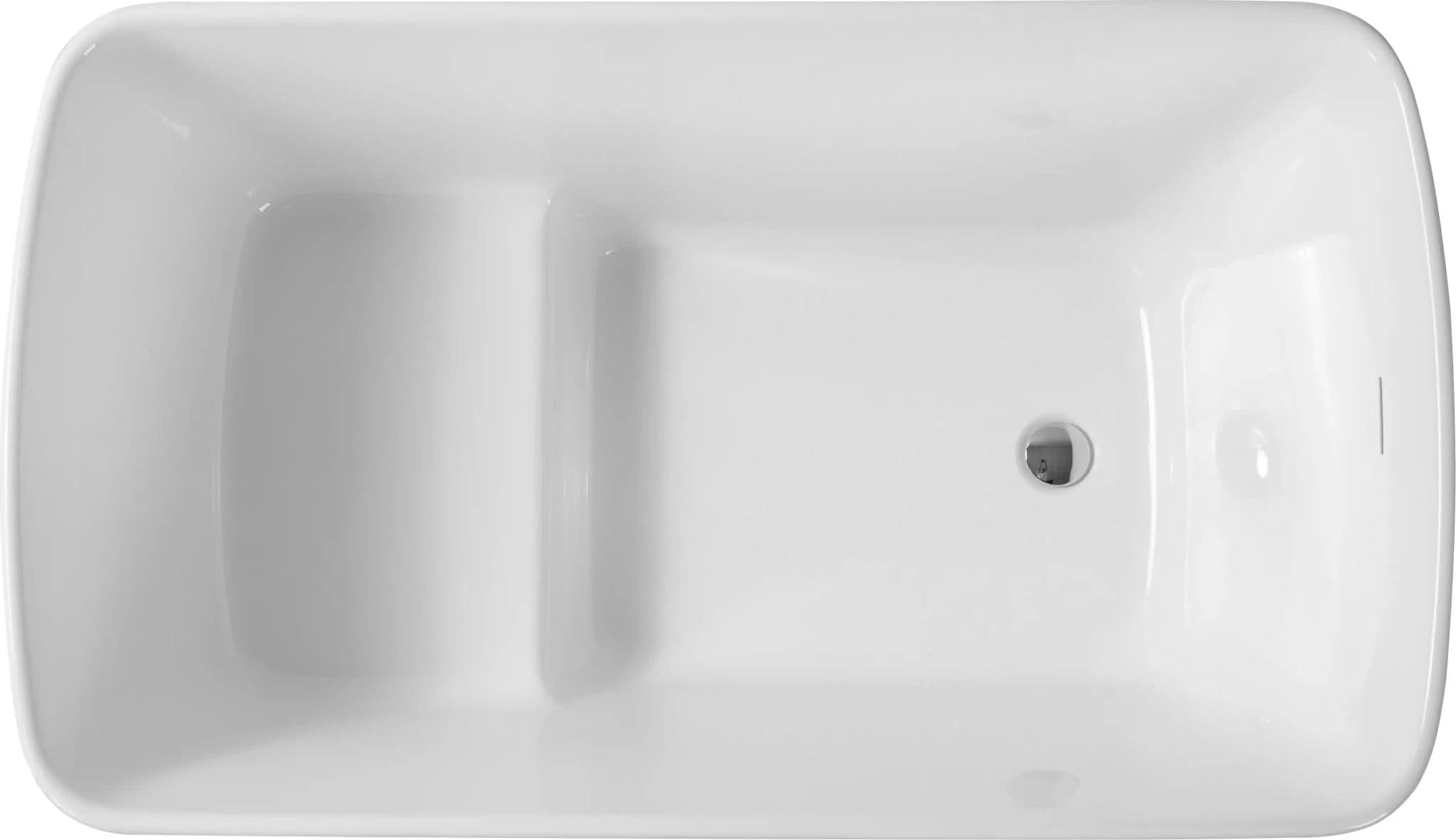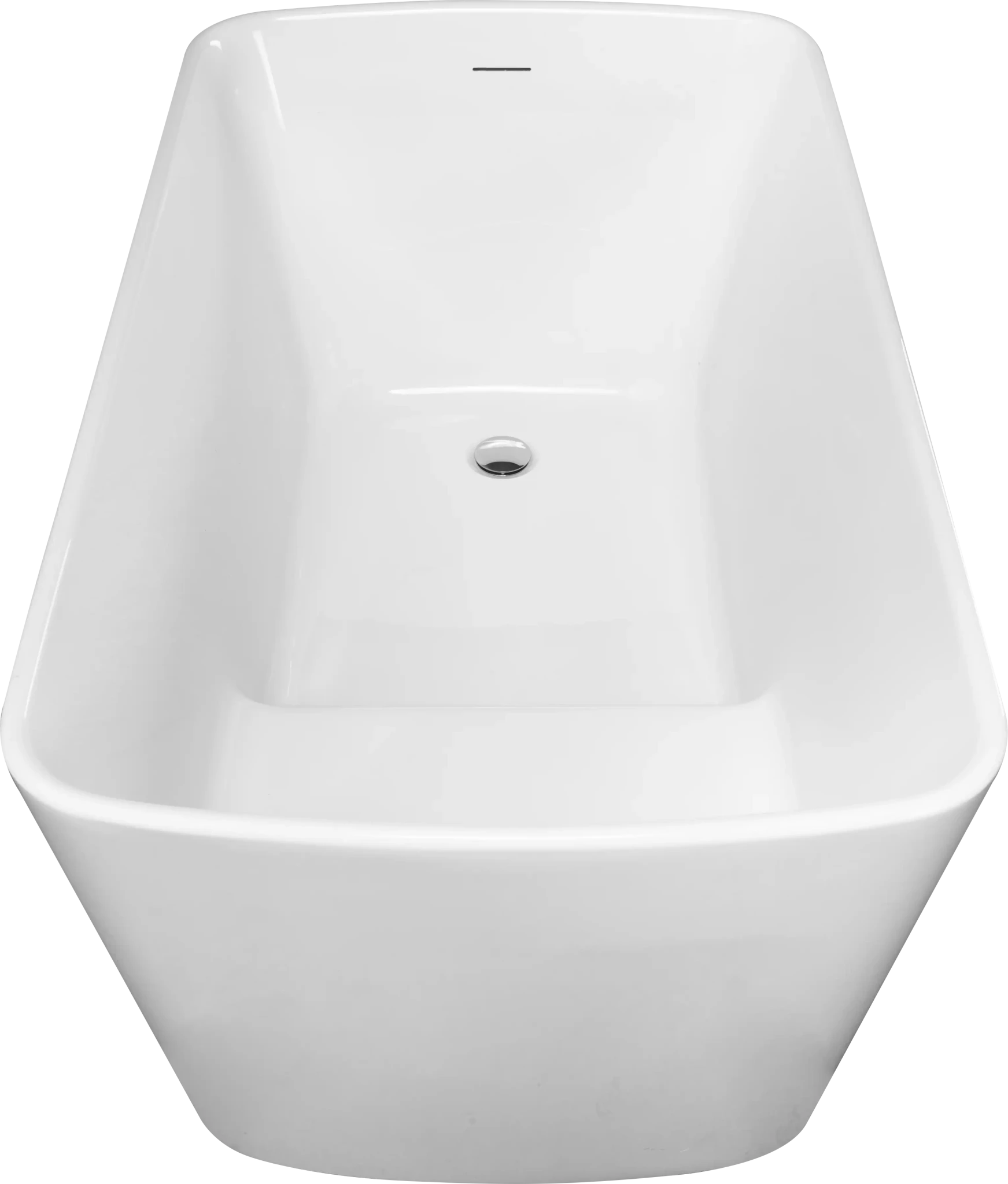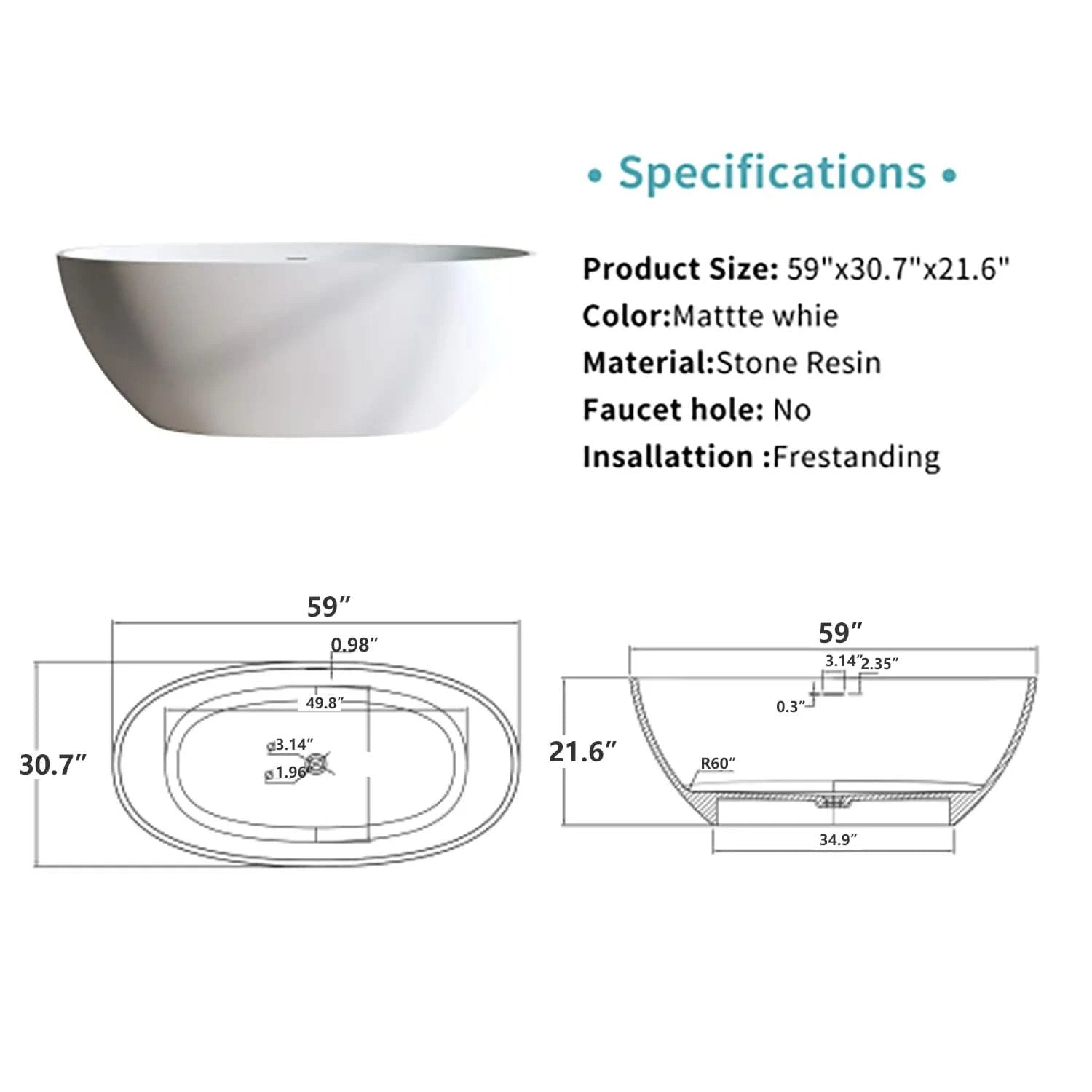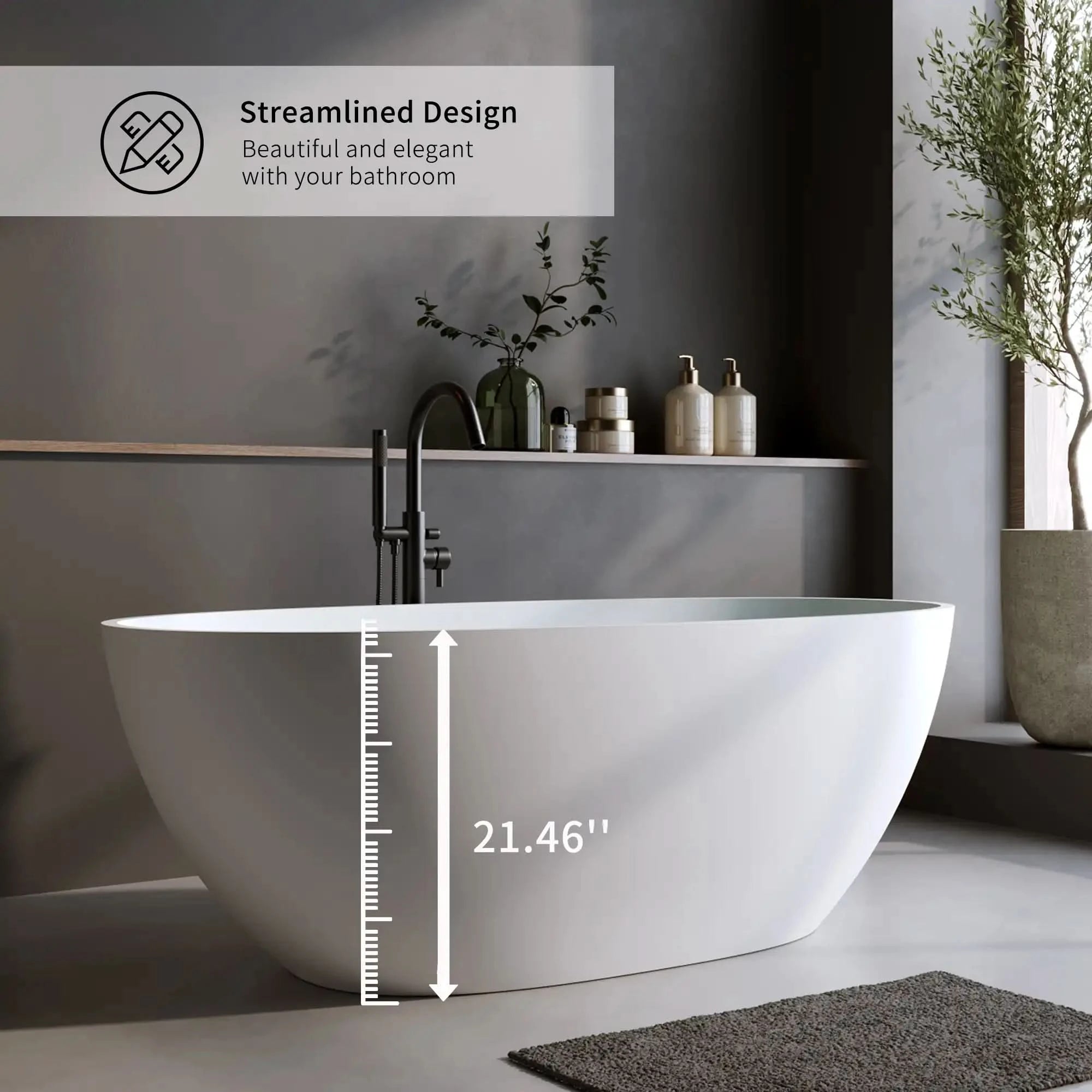One important consideration of the bathroom style is the bathtub itself, which is often the centerpiece of the bathroom and the most used item. Whether you want an impressive spa experience or just the perfect escape at the end of the day, we need to know the capacity of our bathtub. If you ever found yourself wondering how many gallons in a bathtub? you're in the right place.
At Ace Decor, we deal in high-quality bathroom furniture and bathtubs that feature design and functionality. In this ultimate guide, we are going to help you to know how many gallons are in a bathtub, which factors are responsible to change the bathtubs capacity and why do you need to know this & do they really matter for water usage and you bath experience in general. Let's dive in!
Table of Contents
- What does bathtub capacity mean?
- How many gallons does a bathtub hold?
- What affects bathtub water capacity?
- Standard sizes and their gallon capacity
- How to measure your bathtub’s gallons
- Why knowing gallon capacity matters
- Discover Ace Decor’s quality bathtubs
- Final thoughts
- FAQs about bathtub gallons
- Related reads and resources
1. What Does Bathtub Capacity Stand For?

Bathtub capacity is the amount of water that your bathtub can accommodate when filled to the top. Usually, this measurement is given in gallons. Knowing the capacity of your tub can be helpful when designing your bathroom like with your water usage, water heater or even the perfect soak to fall asleep.
The reason was because if you are going to soak in your bathtub for a long time, finding out how many gallons of water your tub is will help you determine how much water you are going to need to fill the tub. If you are considering putting in a new tub, knowing the capacity can also give you a good idea of what size best meets your requirements for a bathtub.
2. How Many Gallons in a Bathtub?

The answer to the question "How many gallons in a bathtub?” varies depending on the size and shape of the bathtub. The average bathtub holds anywhere from 40 to 100 gallons of water, with the most common capacity being around 80 gallons for a standard bathtub.
But the number of gallons your bathtub actually holds can vary based on several factors. Here, we will share the average bathtub sizes by size and type:
- Standard bathtubs: The basic rectangular bathtub, the most common tub style in most homes, typically has a capacity of 40 to 50 gallons.
- Oversized or Deep Bathtubs: Larger, deeper bathtubs, such as soaking tubs or freestanding bathtubs, can hold 60 to 100 gallons or more.
- Corner Bathtubs: Providing enough space to be curled up in a corner, corner bathtubs hold 50-80 gallons of water depending on their size.
- Clawfoot tubs: The traditional clawfoot tubs can hold 50 to 70 gallons depending on the size and depth.
It is also necessary to ensure that the measurements are specific for your own bathtub in order to get more accurate calculations.
3. What Influences How Many Gallons Your Bathtub Holds

There are so many different variables that go into how many gallons are in a bathtub that can affect the overall tub capacity. These include:
1. Bathtub Size
The most apparent reason is the size of the bathtub. Bigger bathtubs, the more room that is available for larger ones, and smaller bathtubs, the less water that they should be able to hold. Volume is a function of length, width, and depth.
2. Shape of the Bathtub
Bathtubs are available in different shapes such as rectangular, oval, corner, or custom. While a round or oval bath will have a lesser number of gallons than a rectangular bathtub of the same length, they may offer a better bathing experience for some users.
3. Depth of the Bathtub
The capacity of the bathtub is determined by depth. A deeper tub will typically accommodate more water, which is ideal for those who like to soak, while a shallower tub may conserve water, but not offer the same extensiveness for immersion.
4. Water Level
How many gallons you actually going to use goes down to the water you fill your bathtub with, too. Most bathtubs contain more water than you fill them with in the normal course of bathing. Even more so when they are for deep tubs where they are pushed to the brim for a full soak.
5. Tub Design and Features
Some tubs come with integrated elements such as seats, hydrotherapy jets, and extra padding. Such features could take away some space for water, giving less capacity (but still more than a water tank).
4. Standard Bathtub Sizes and Capacity in Gallons
To help you get a mental image of what to expect in different bathtub sizes, we have a standard bathtub dimensions list with and around how many gallons each style can hold.
| Bathtub Type | Dimensions (L x W x D) | Approximate Gallons |
|---|---|---|
| Standard Rectangular Tub | 60" x 30" x 14" | 40-50 gallons |
| Oversized Bathtub | 72" x 36" x 18" | 60-100 gallons |
| Corner Bathtub | 60" x 60" x 20" | 50-80 gallons |
| Clawfoot Tub | 66" x 30" x 18" | 50-70 gallons |
| Freestanding Tub | 66" x 32" x 22" | 60-90 gallons |
The gallon size range we see is pretty crazy based on the various types and sizes of tub. The size of the bathtub goes hand in hand with its capacity, so if you need to buy a new bathtub, knowing these capacities can help you figure out which tub will be right for your space or your water use.
5. How to Calculate Bathtub Capacity
Now if you want to find out how much your bathtub holds, there s a basic formula. Here's exactly how to do this step-by-step:
1. Take Measurements for Length, Width, and Depth: You should measure the inside of your bathtub (not the outside) to get its length, width, and depth.
2. Translate Measurements into Feet: If yours are in inches, divide them up by 12 to arrive at feet.
3. Use the Formula For Volume: The formula for the volume of a rectangle is used for finding the volume of a rectangular bathtub:
Volume (in cubic feet)=Length (in feet)×Width (in feet)×Depth (in feet)
4. Convert Cubic Feet to Gallons: There are approximately 7.48 gallons in one cubic foot. Multiply the cubic feet by 7.48 to get the total gallons.
Example:
Suppose you have a bathtub that is 5 feet long, 2.5 feet wide, and 1.5 feet deep.
The volume would be:
Volume=5×2.5×1.5=18.75 cubic feet
Now, convert cubic feet to gallons:
Gallons=18.75×7.48=140.6 gallons
This bathtub would be roughly 141 gallons when filled to the brim.
6. Why It's Important To Know How Many Gallons Are In A Bathtub

Understanding how many gallons your bathtub holds helps with a few key things:
1. Water Usage and Cost
If you pay attention to how much water your bathtub holds, it can help you if you are trying to estimate your usage per bath. This is really useful in drought areas, or if you are attempting to save money on your utility bills. While a bigger tub will require more water to fill, and a large tub can become expensive if you are not careful.
2. Water Heater Sizing
It needs to be able to heat enough water to fill your bathtub. If you know your tub gallons capacity, you can choose the suitable size of water heater so that you can take a nice warm bath with no hot water running out in the middle of it.
3. Soaking Experience
Knowing your tub's capacity is useful if your bathing style involves long, luxuriant soaks. Big tubs give room to soak and you can sit in water with peace, but small tubs need re-filling or comfort in the water might not be observed.
4. Eco-Friendly Practices
Knowing the capacity of your bathtub can help you learn to be a more eco-friendly bath user. When you only fill your tub up to a responsible level, you can avoid wasting it while still benefiting from an effective bath, helping conserve some water in the grander scheme of things.
7. Both Quality and Capacity: Ace Decor Bathtubs
Ace Decor provides a variety of bathtubs that are stylish, durable, functional, and designed according to the needs of the user. From a classic clawfoot tub to a contemporary freestanding tub and even larger corner bath tubs, our product range brings together design and utility. Our bathtubs can support different gallon capabilities based on your needs and are heavy duty too.
8. Conclusion
Knowing how many gallons are in a bathtub is not only a neat fact, but also a useful one when it comes to making the most of your bathroom experience. Whether you worry about how much water you are using, on a new installation, or to satisfy your curiosity, the bathtub volume can make a world of difference.
Keep in mind that gallons a bathtub holds depends on size, shape, and depth. Should you be hoping to purchase a fresh tub, consider these elements beneath, and constantly have in mind your needs and wants. At Ace Decor, we are determined to offer the best in bathroom furniture and fixtures, starting with elegant yet practical bathtubs.
With that knowledge of how many gallons are in a bathtub, you are now prepared to make a better-informed decision on your tub bathroom setup. Happy soaking!
FAQs About Bathtub Gallon Capacity
1. Does the bathtub material have anything to do with how many gallons your bathtub can hold?
Not directly. Typically it will not be the material of your bathtub (acrylic, fiberglass, porcelain or cast iron) which affects how many gallons the tub will be able to hold — this is mostly dependent on the size, shape and design of the tub. Yet, different materials could affect how well your bathtub holds onto heat, affecting how you experience bathing and the temperature of your water.
2. What is the weight of water that it will add to my bathtub, and can my bathroom floor handle it?
That is a fantastic question, and one that can be often overlooked. A gallon of water weighs roughly 8.34 pounds. We're talking about, for example, a bathtub filled with 80 gallons of water, which weighs approximately an additional 667 pounds when accounting for (lessor's) weight of the tub itself and the bather. A structural bathroom will typically be designed to hold a regular weight of a bathtub, but if in doubt, you have a spacious bathtub or an older home, it may be worth consulting with a structural professional.
3. Do bathtub sizes or water use have any regulations?
It can be yes, because your local building codes or municipal water regulations may place restrictions or guidelines on the size of the bathtub (and water usage) permitted, particularly if you need a home in a region prone to drought or with specific water conservation ordinances. We recommend checking local building codes, or consulting a plumbing professional during bathroom renovations or installations to ensure compliance.
Related Articles
Explore more about bath, bathroom design or water efficiency? Discover these curated pieces for you to choose wisely and stylishly for your space.
- Deep Alcove vs. Freestanding Tubs: Which One Suits Your Bathroom Best?
- Are Vintage Alcove Bathtubs Worth the Investment? Pros, Cons & Alternatives
- The Do's and Don'ts of Maintaining Bathtub Glass Doors for Spotless Shine
- How Modern Walk-In Bathtubs Redefine Bathroom Bliss
- Whirlpool Bathtubs Buyer's Guide 2025
